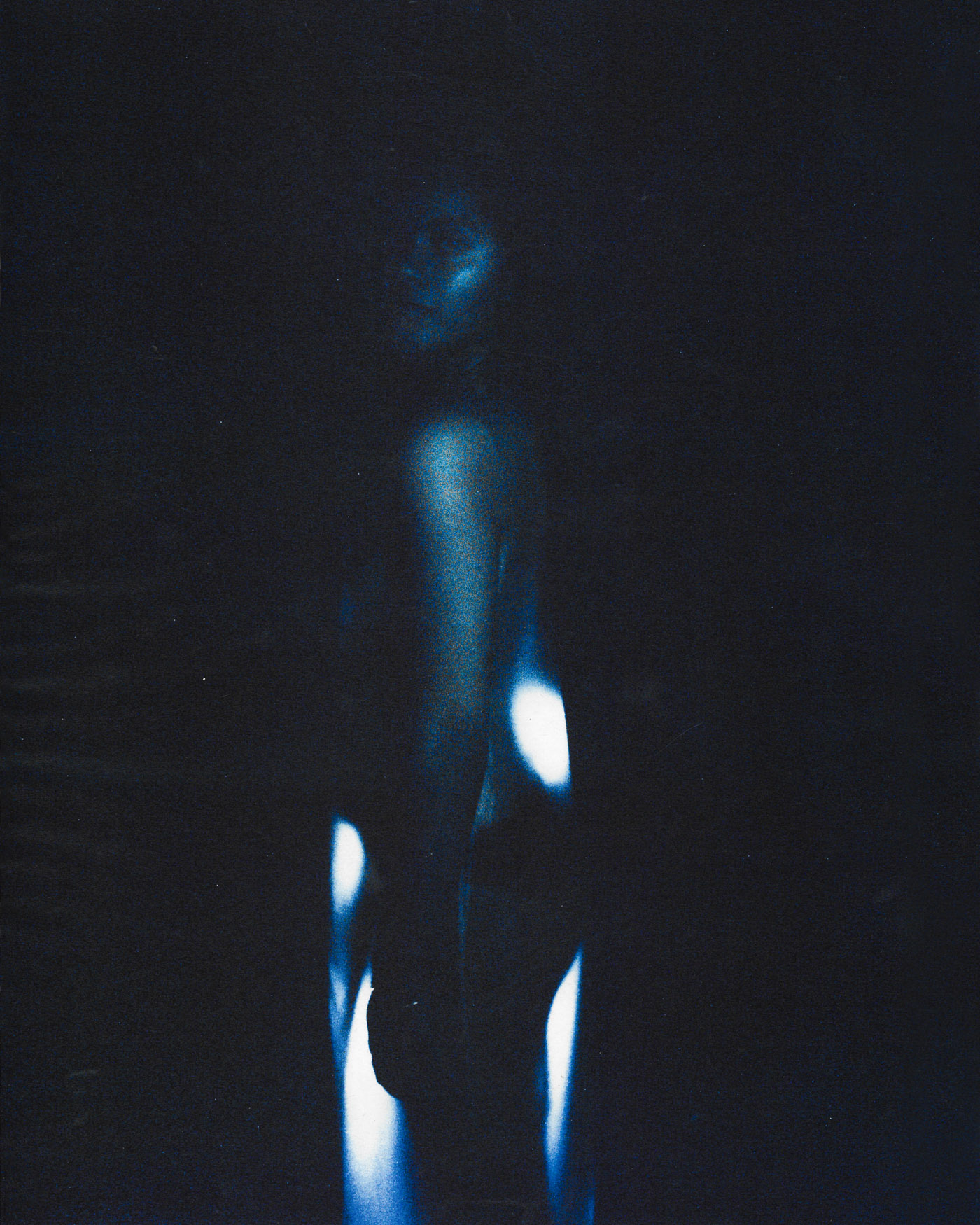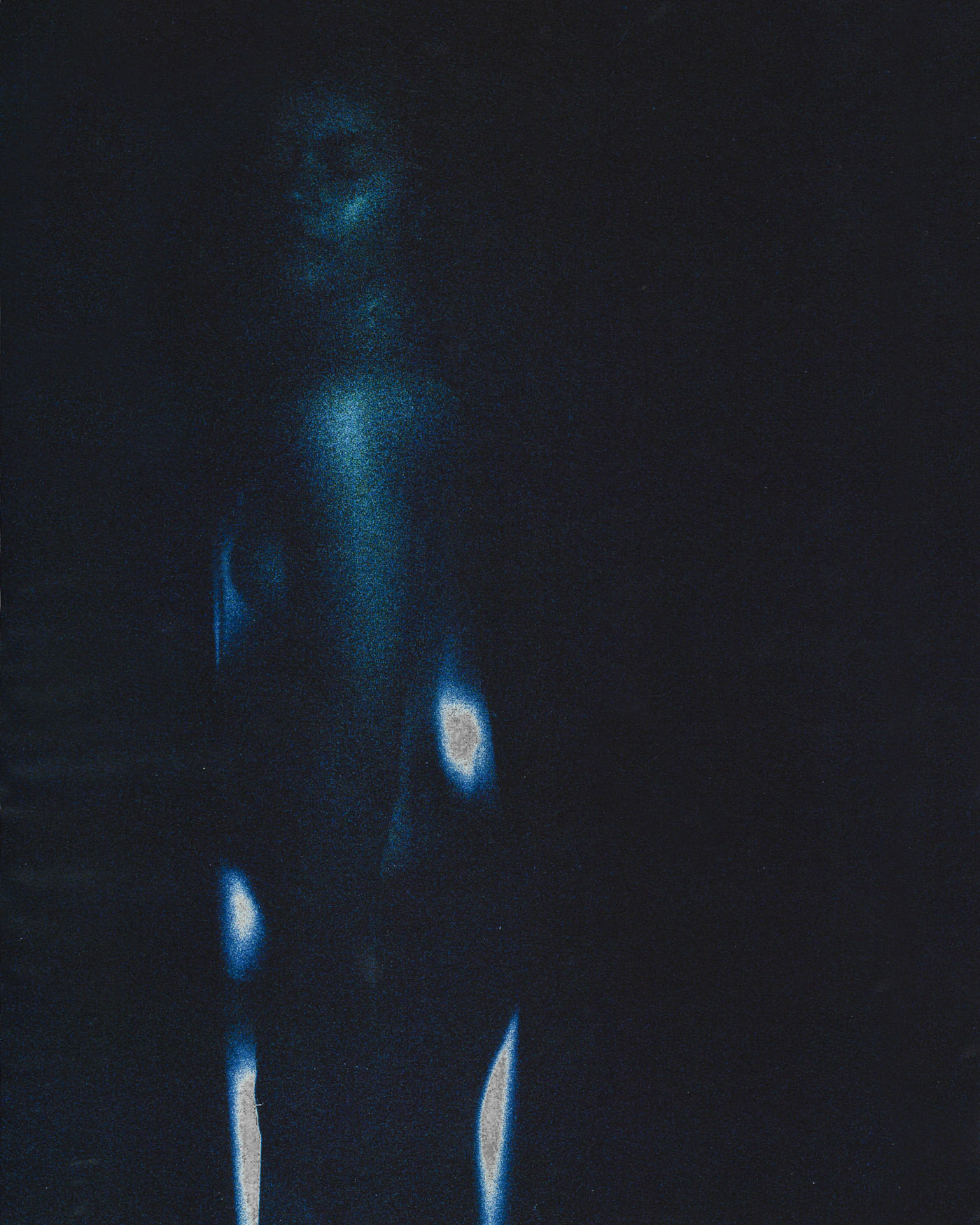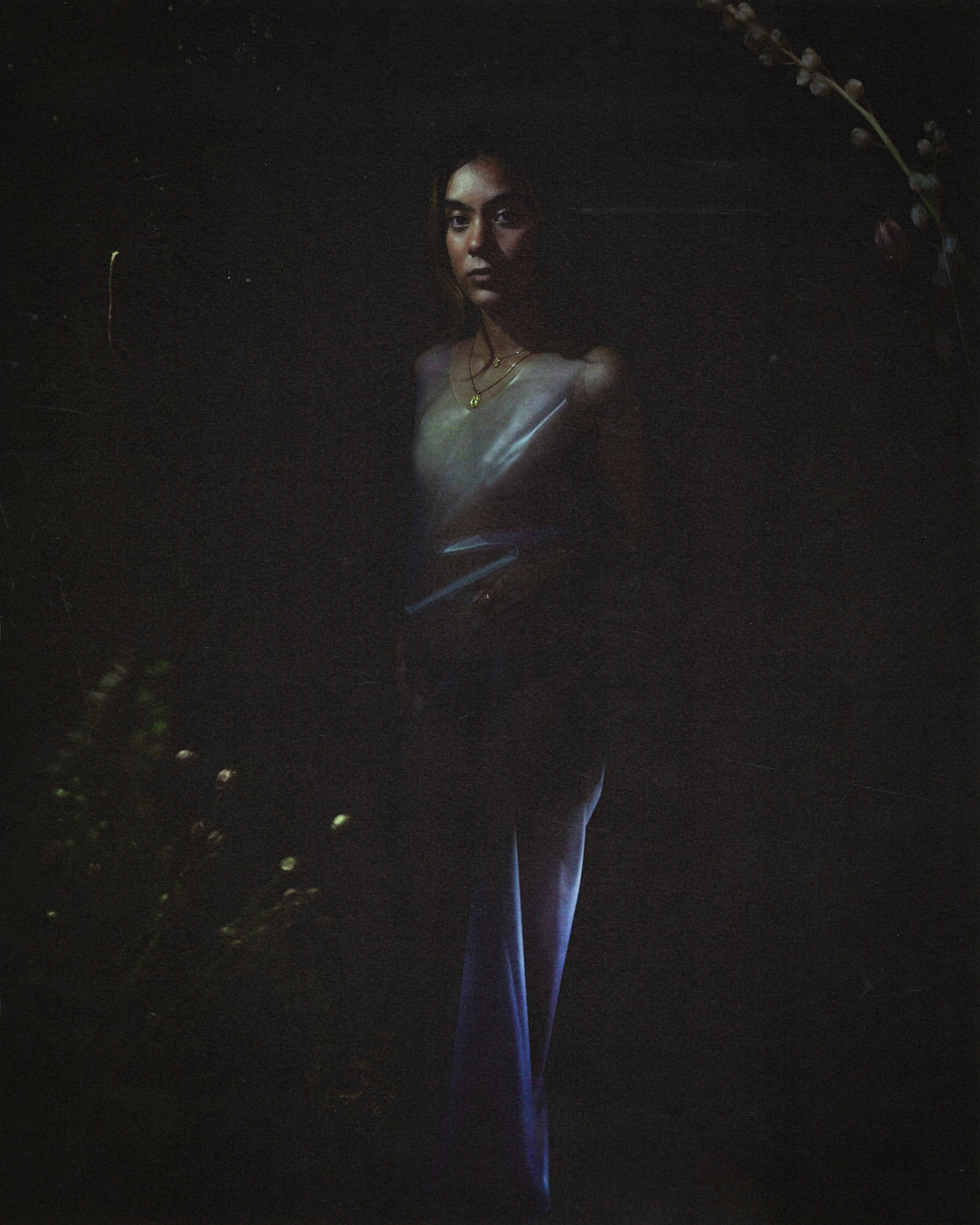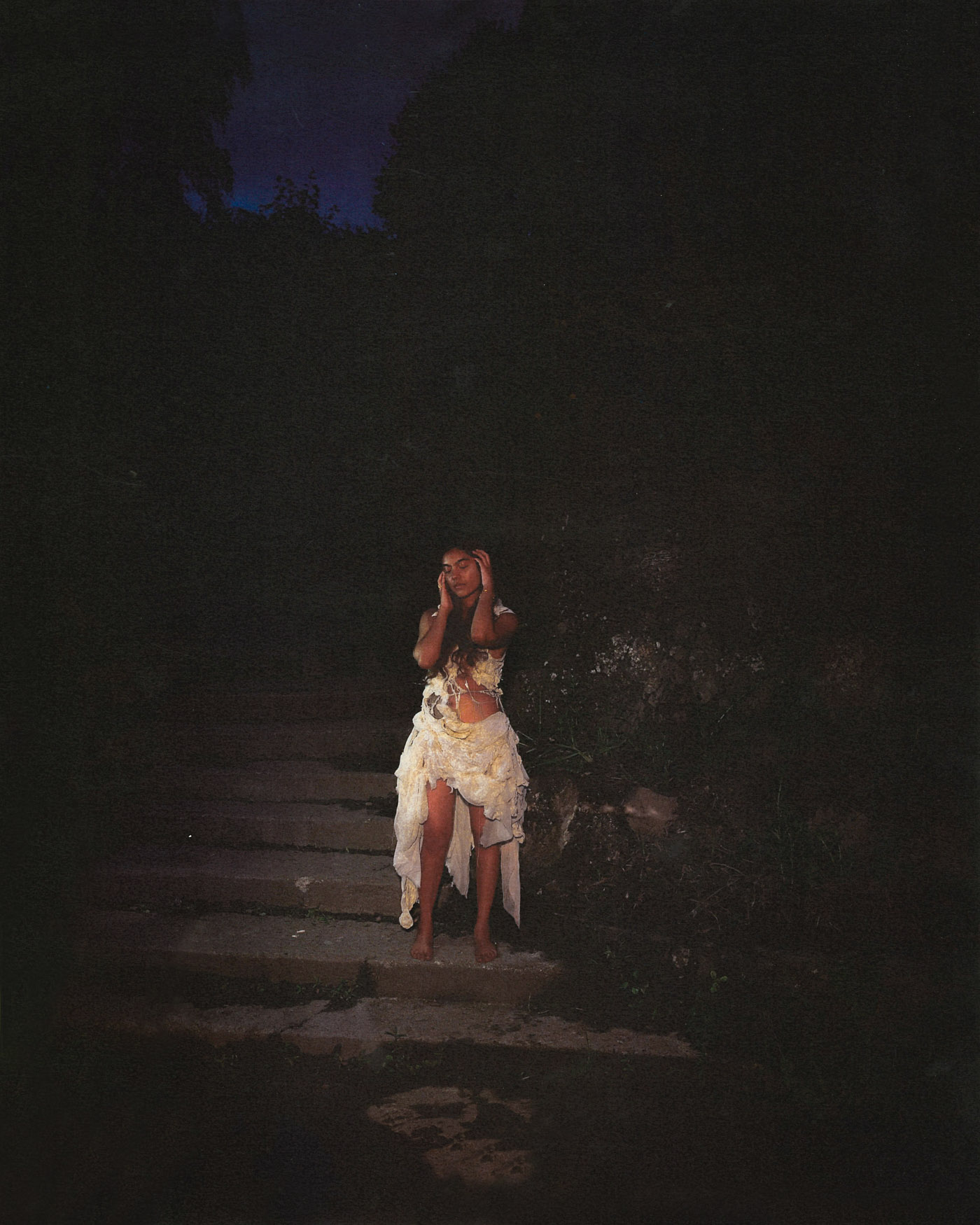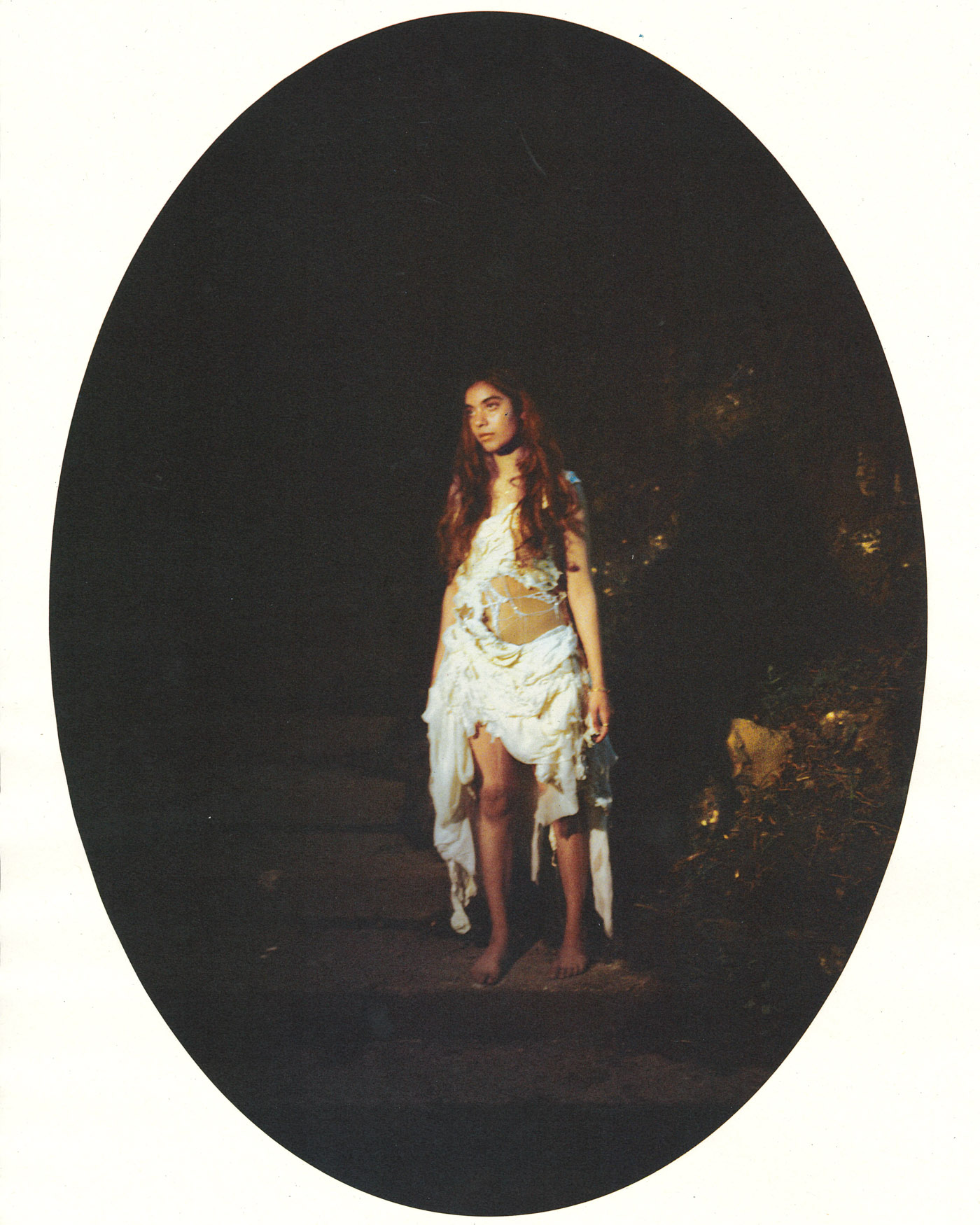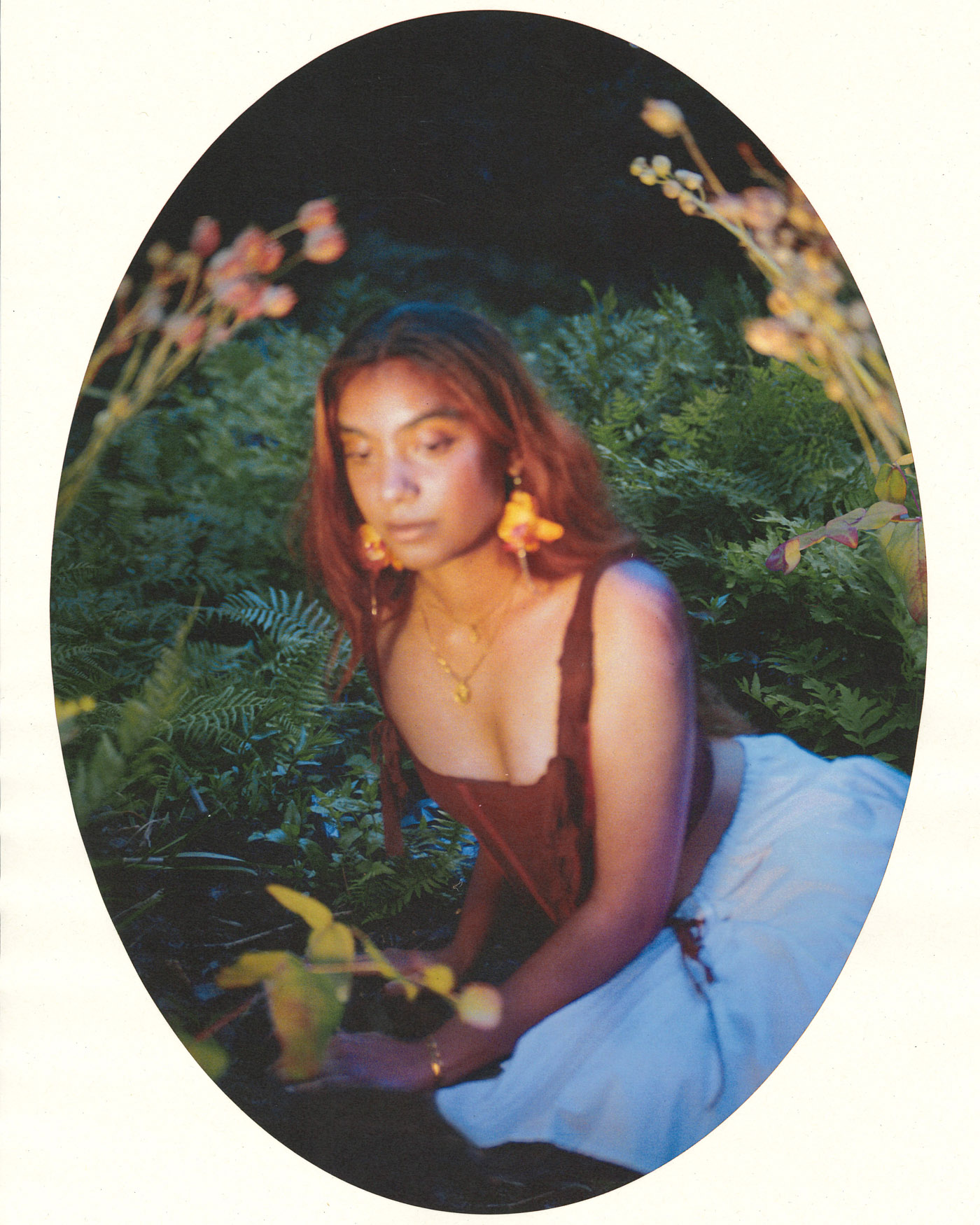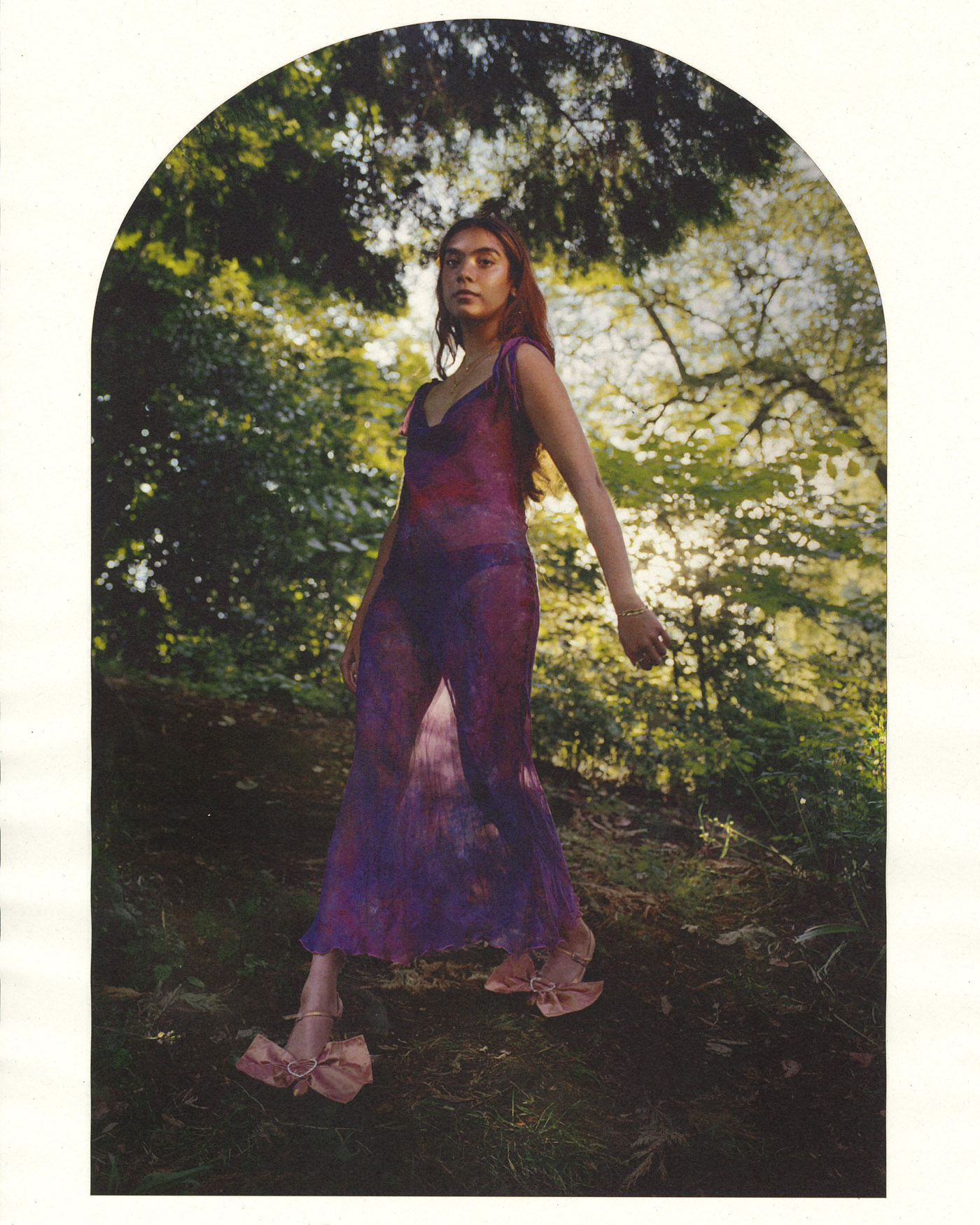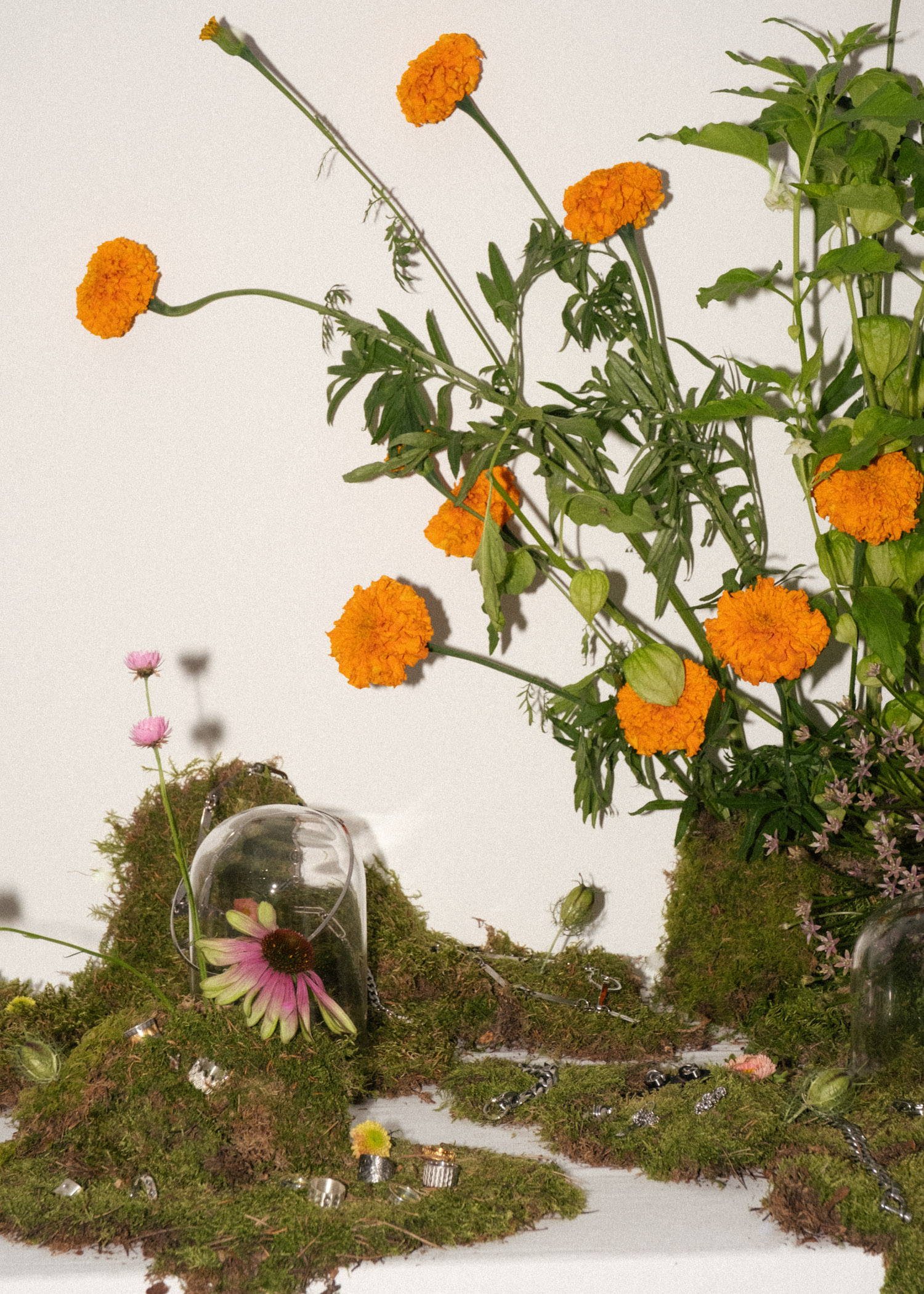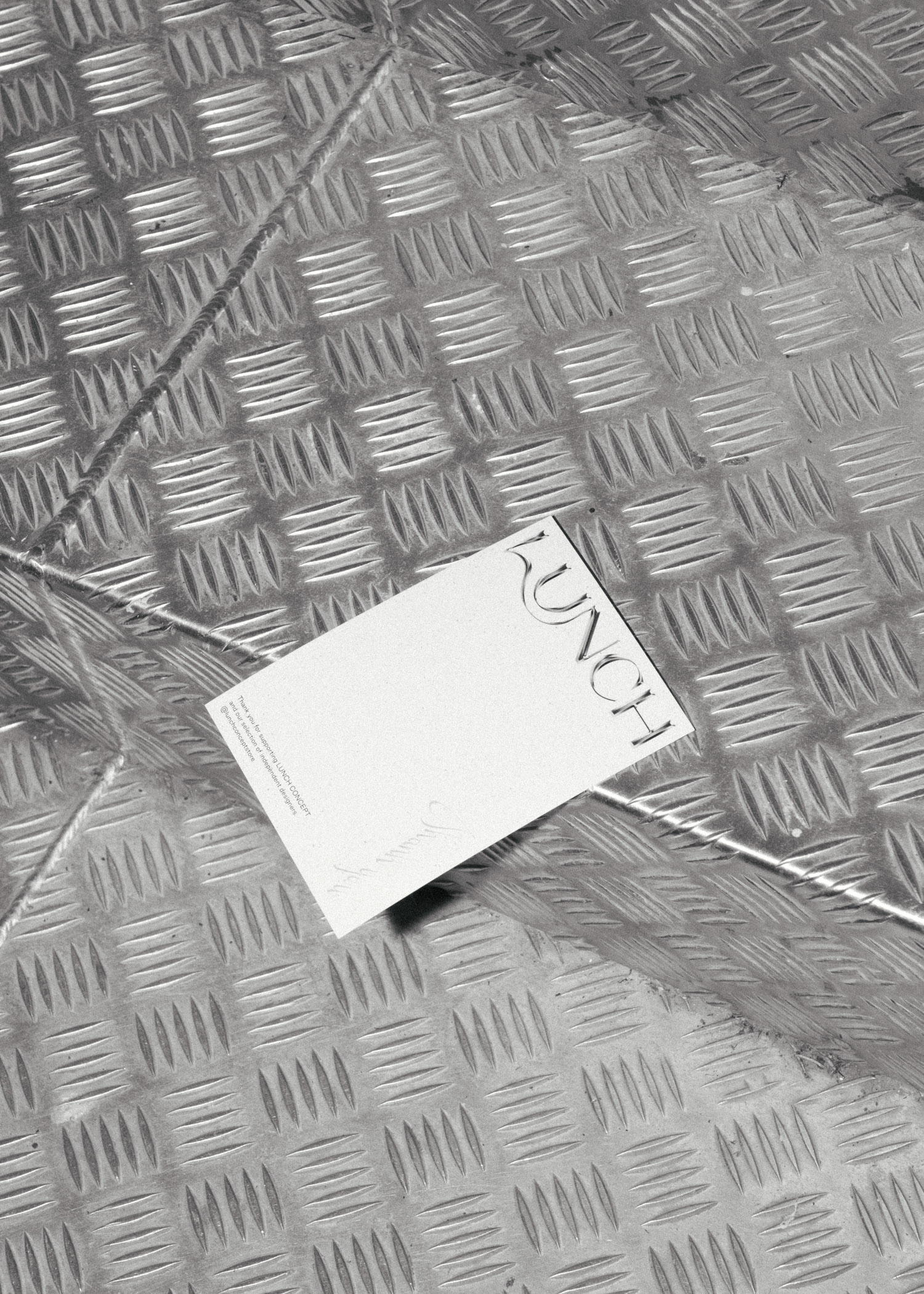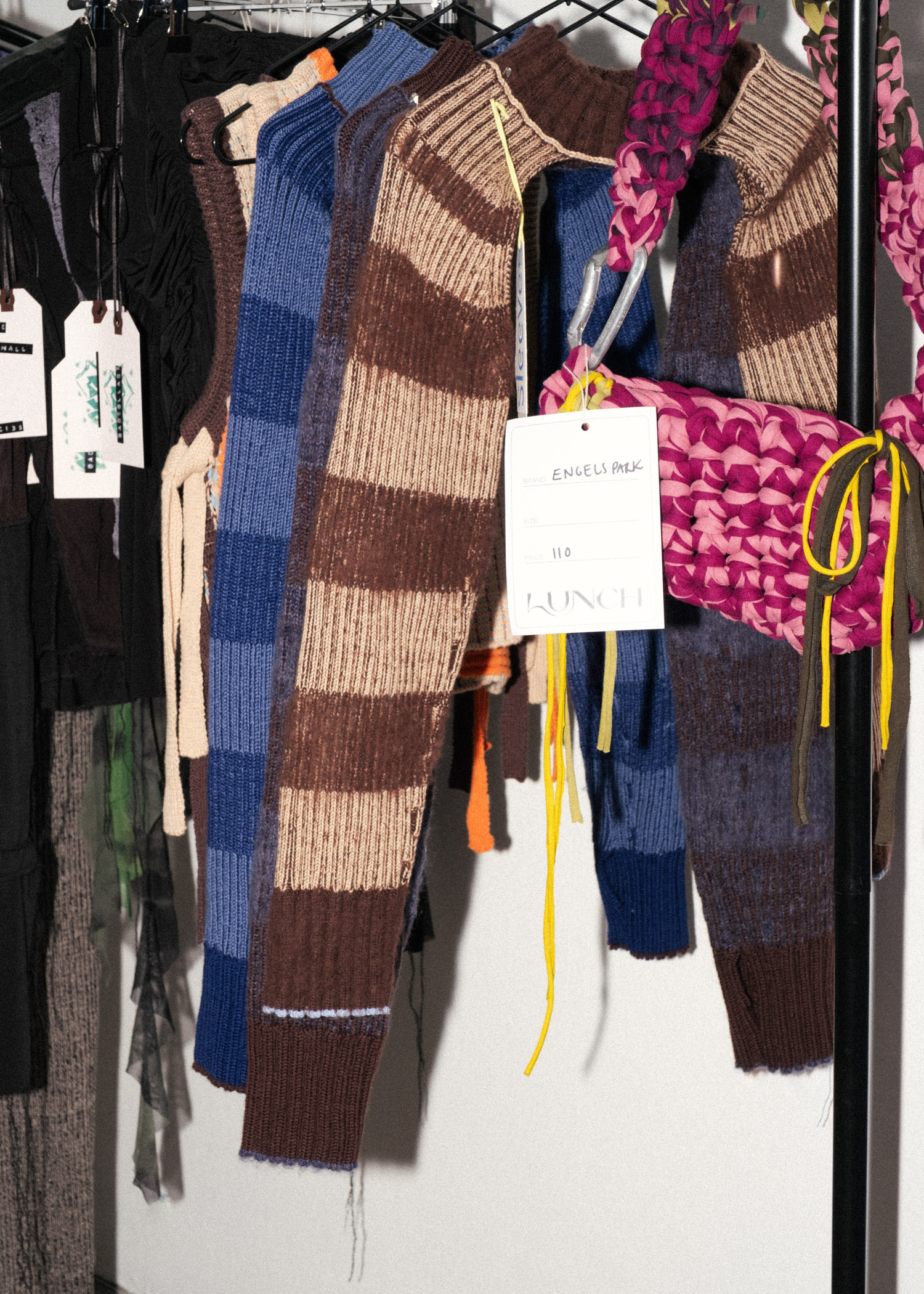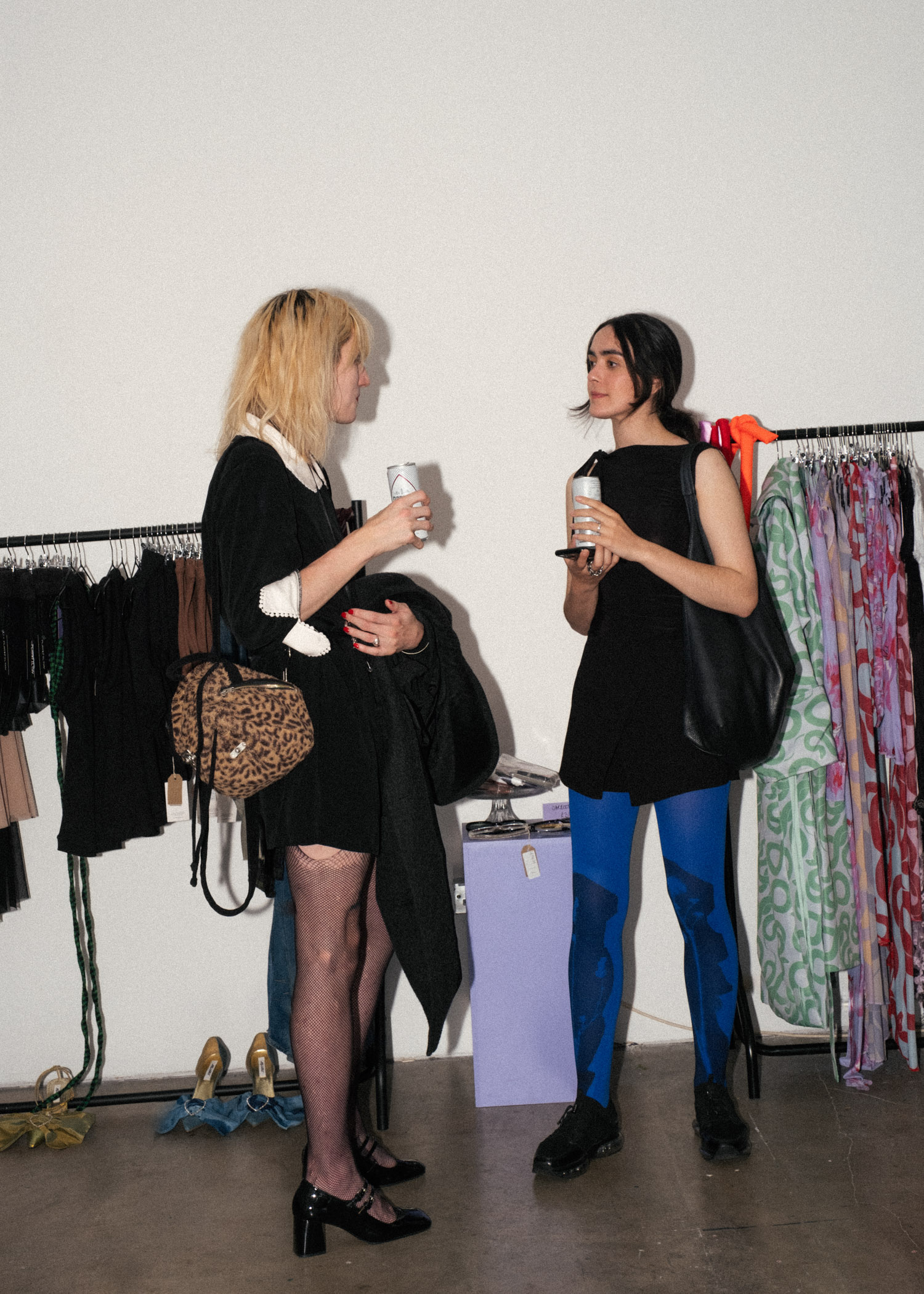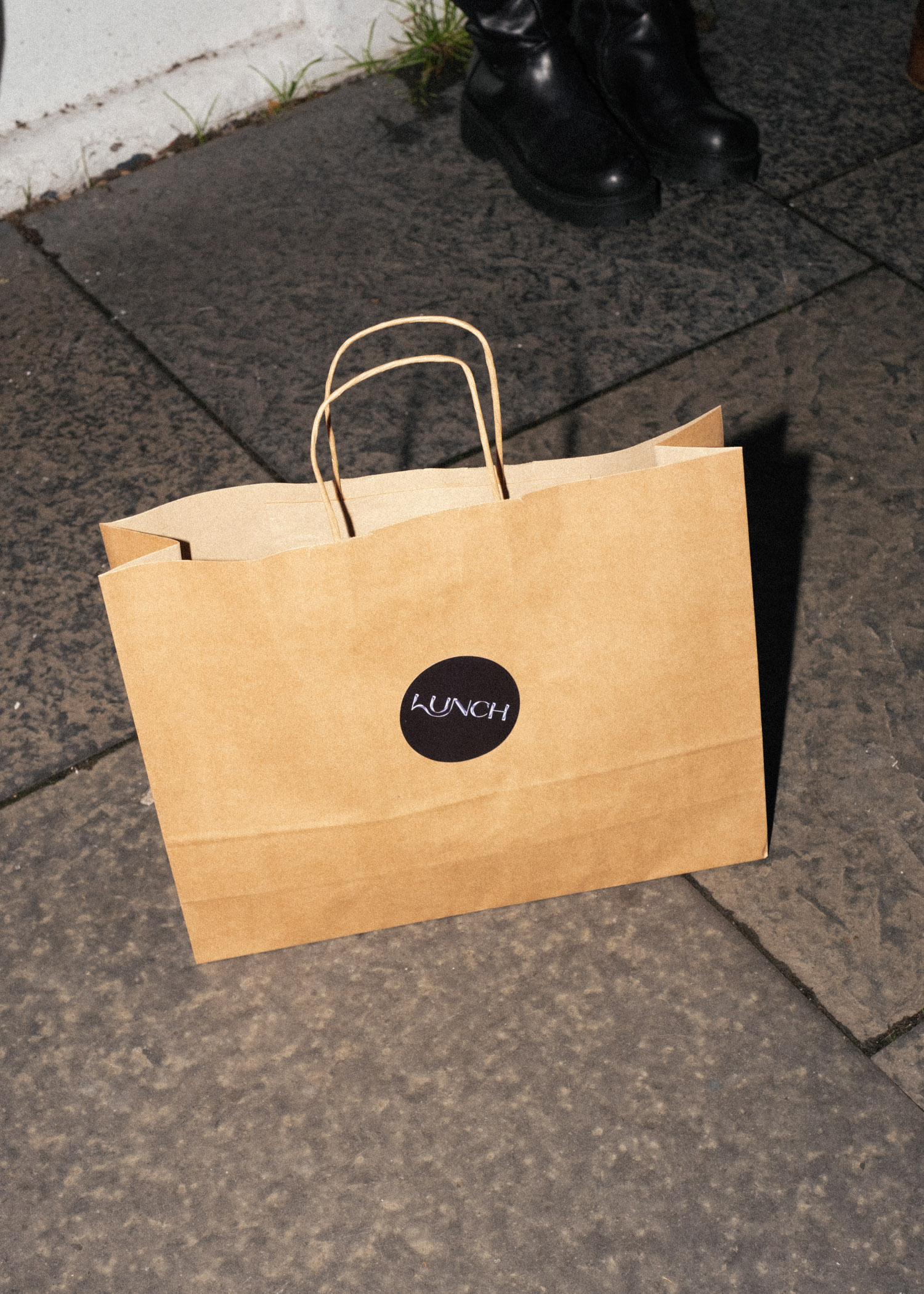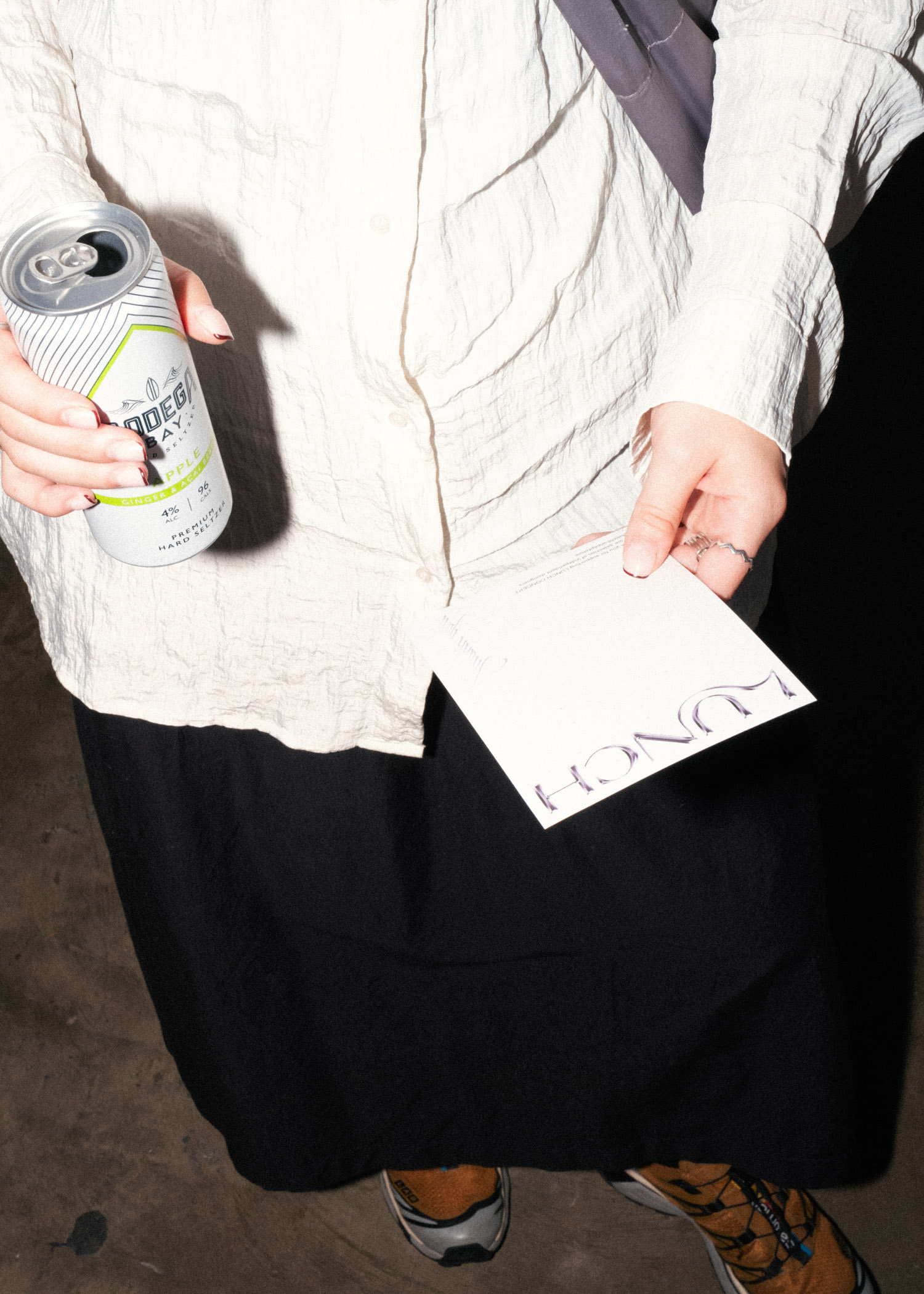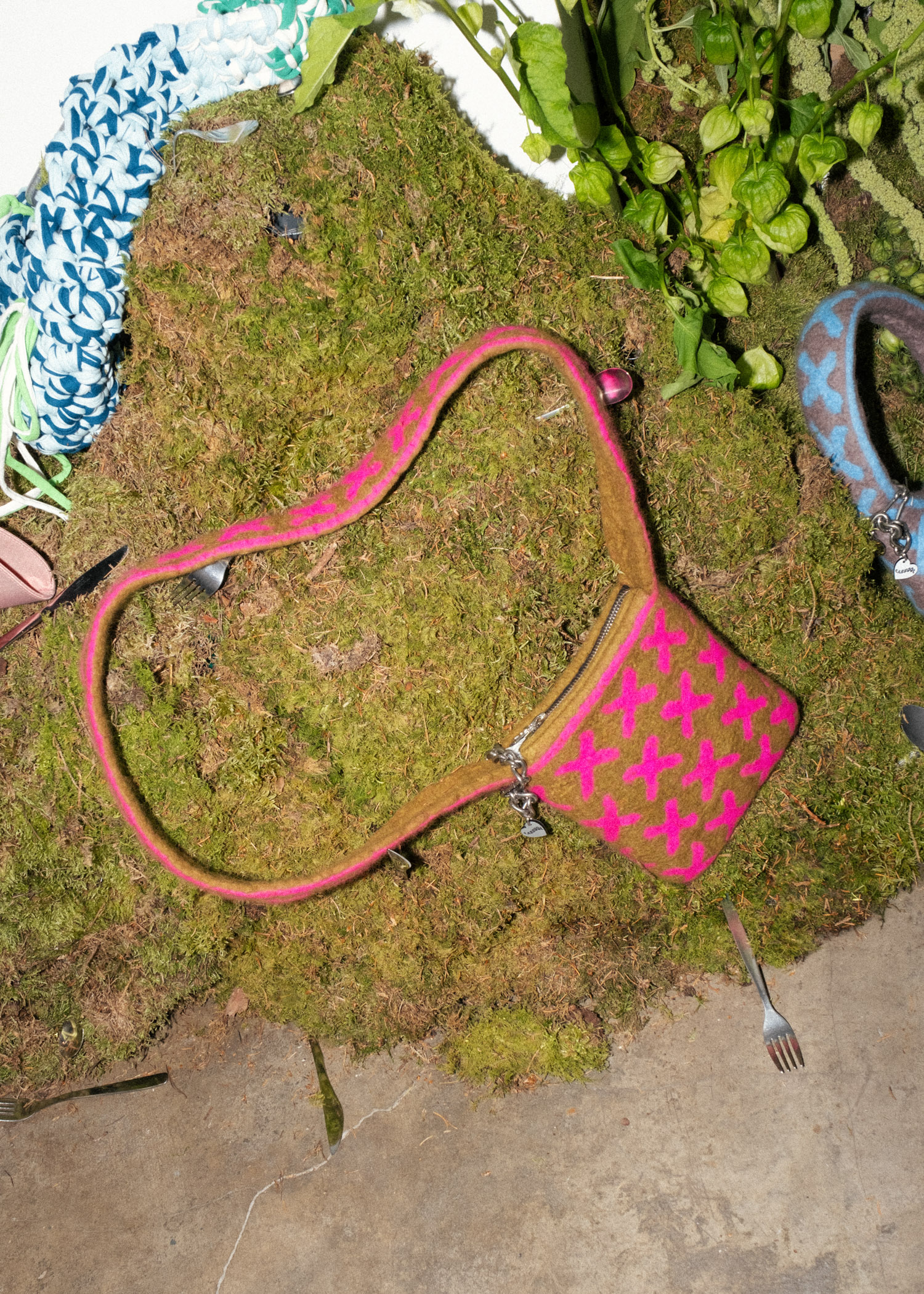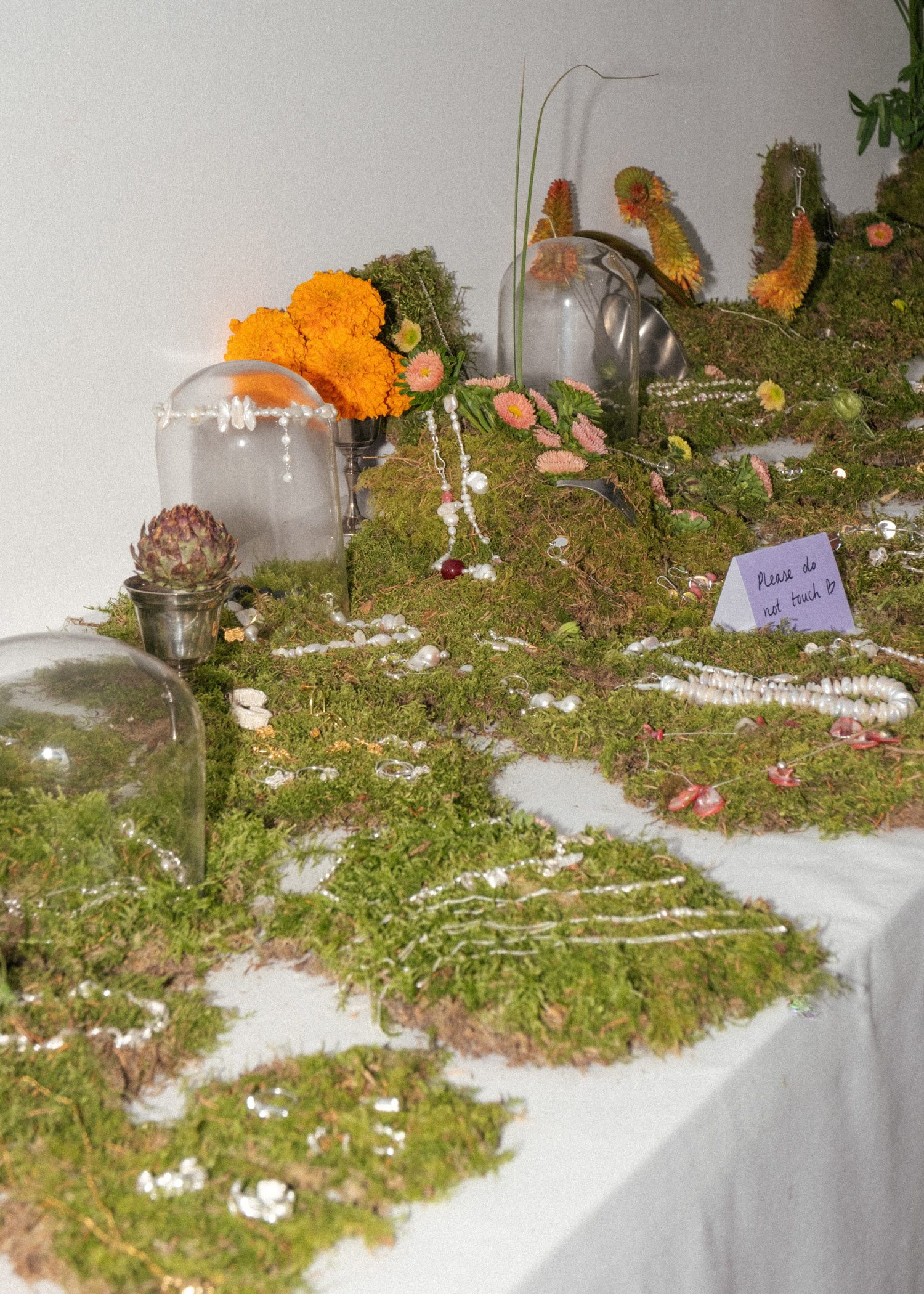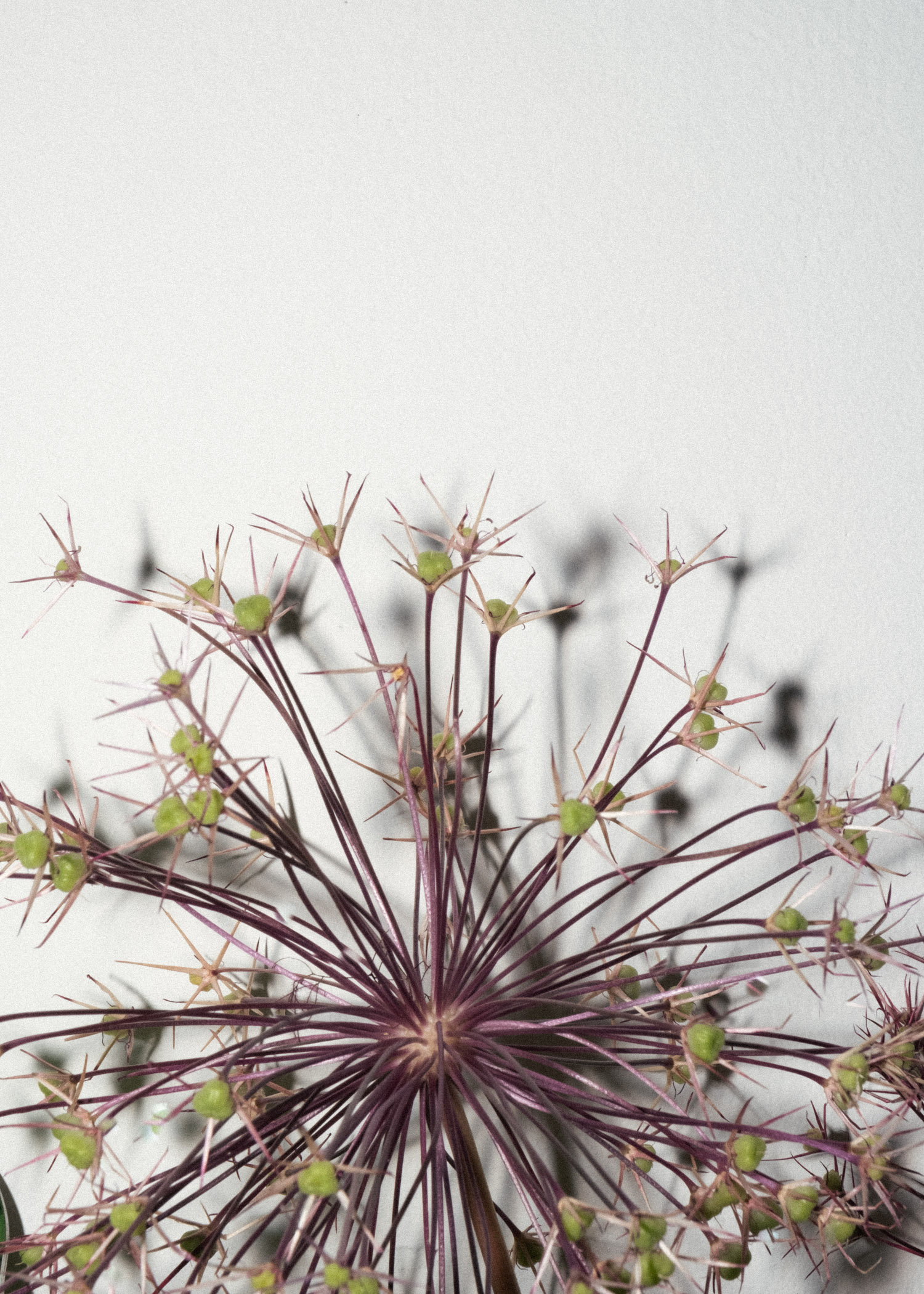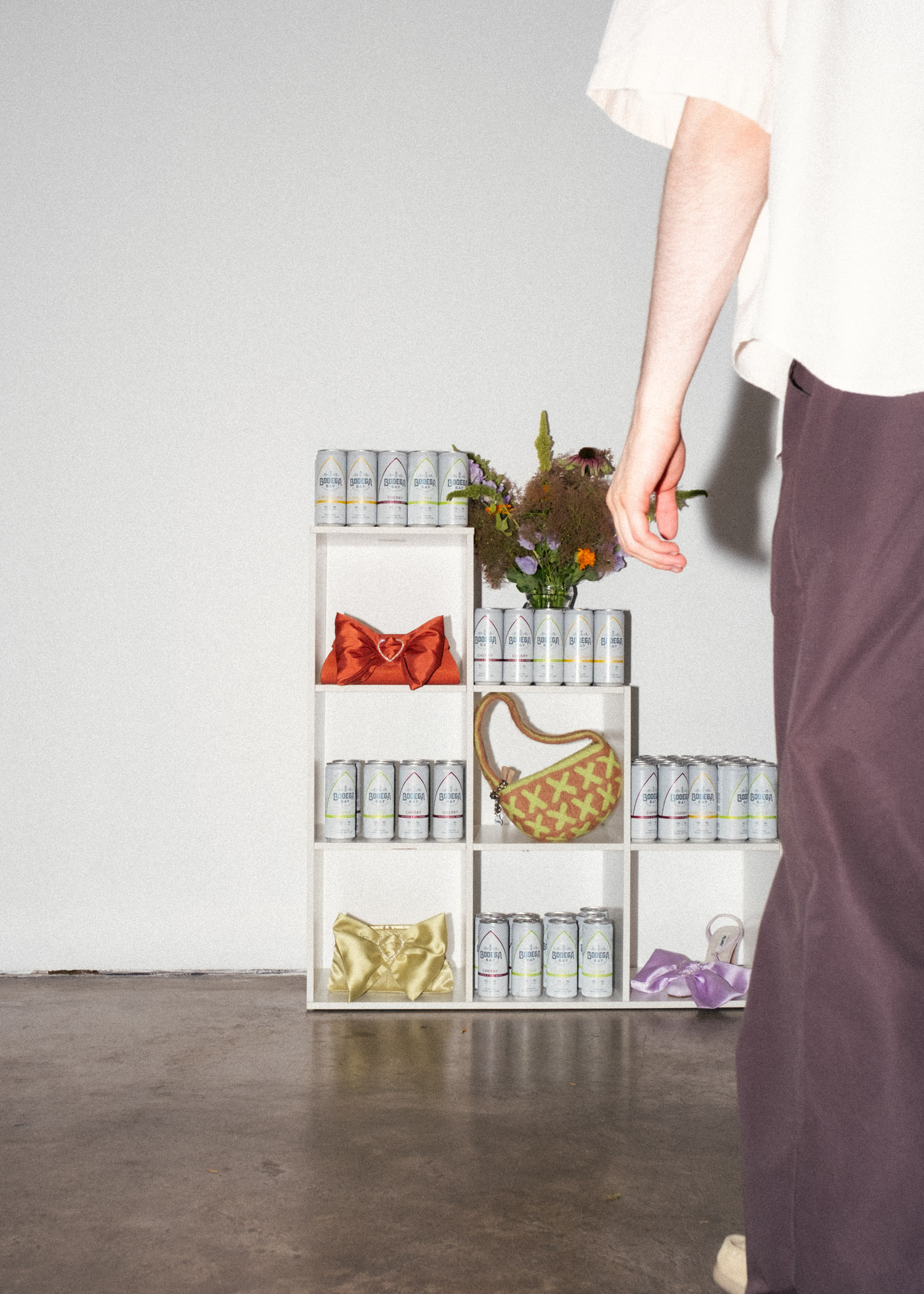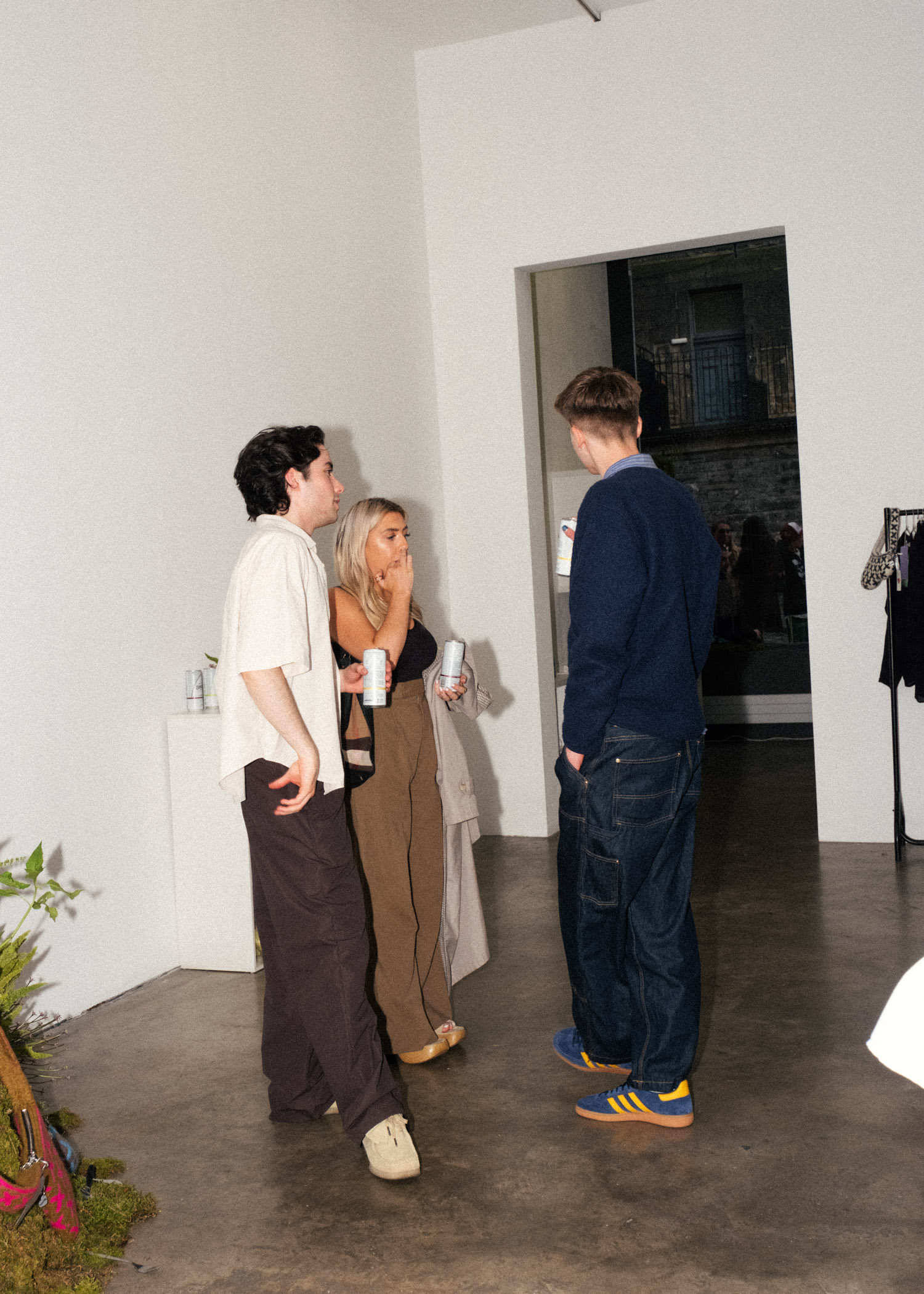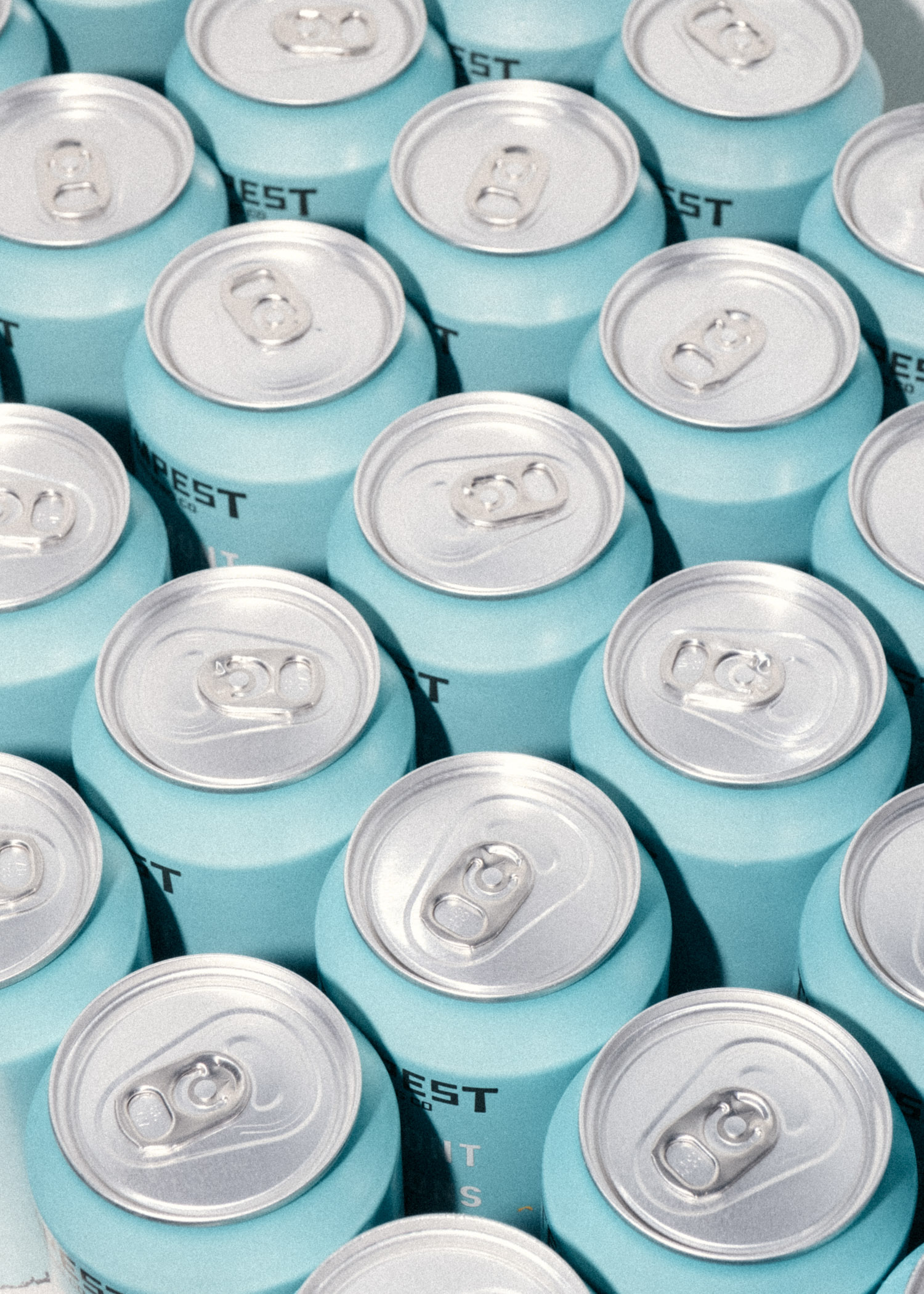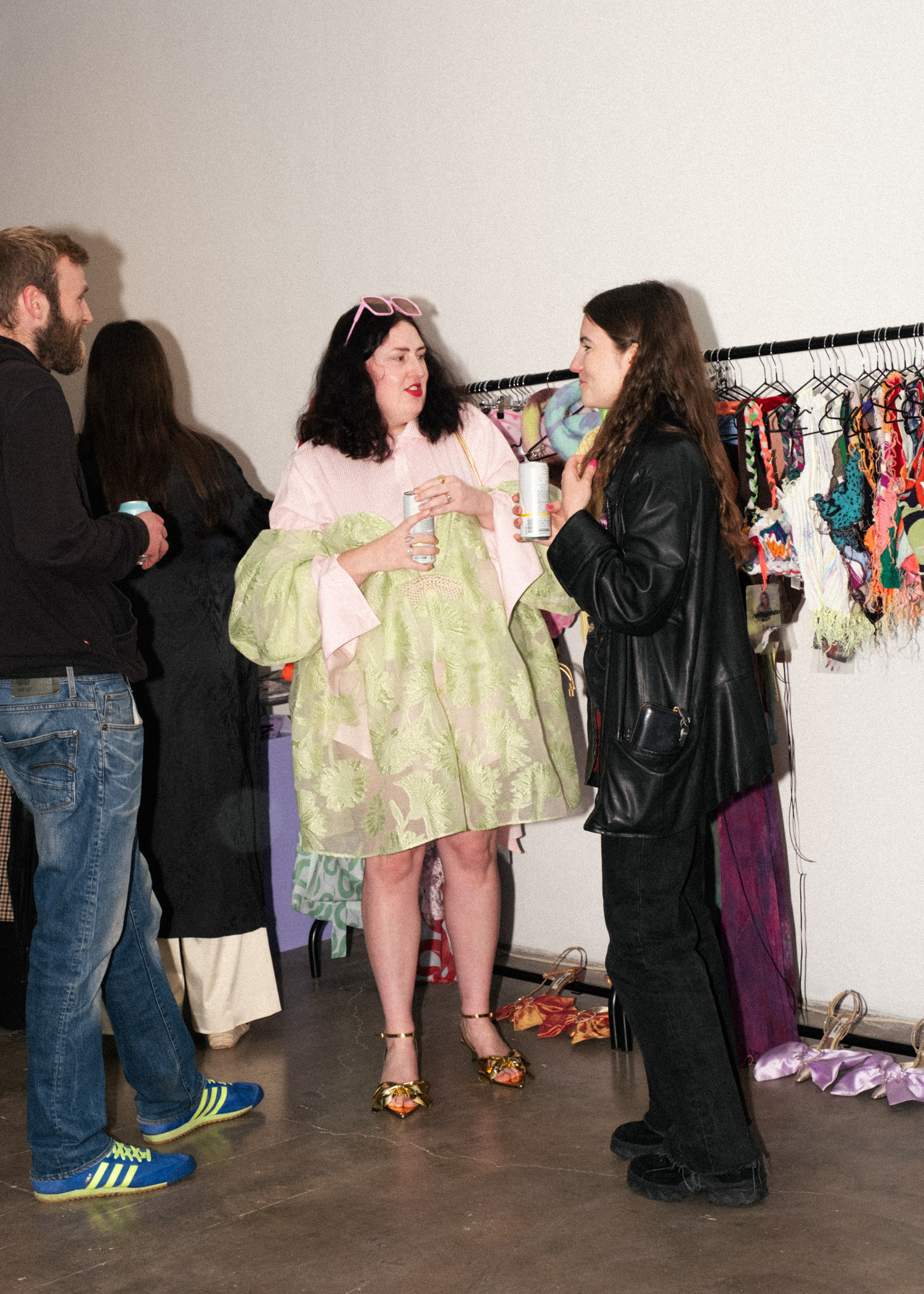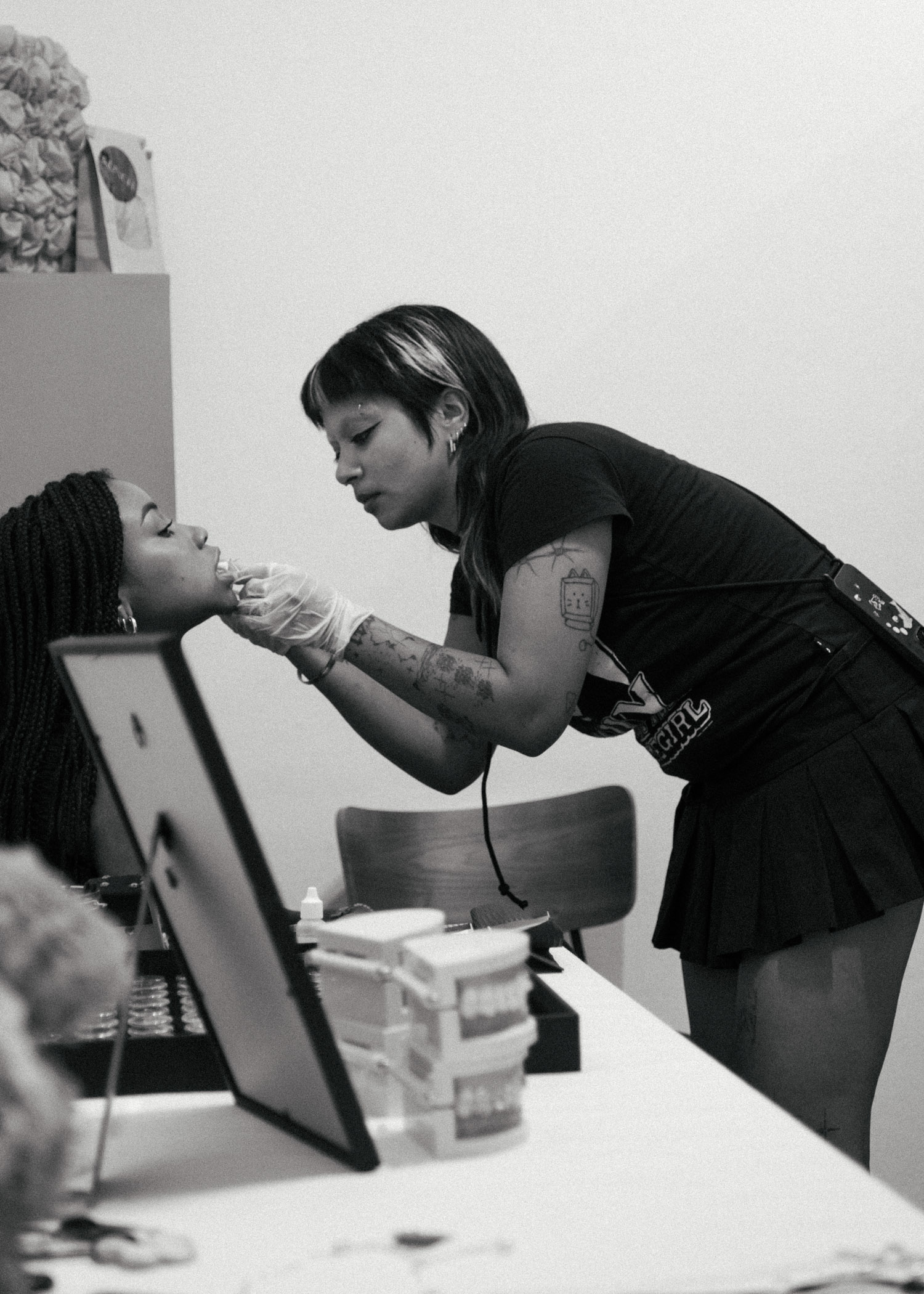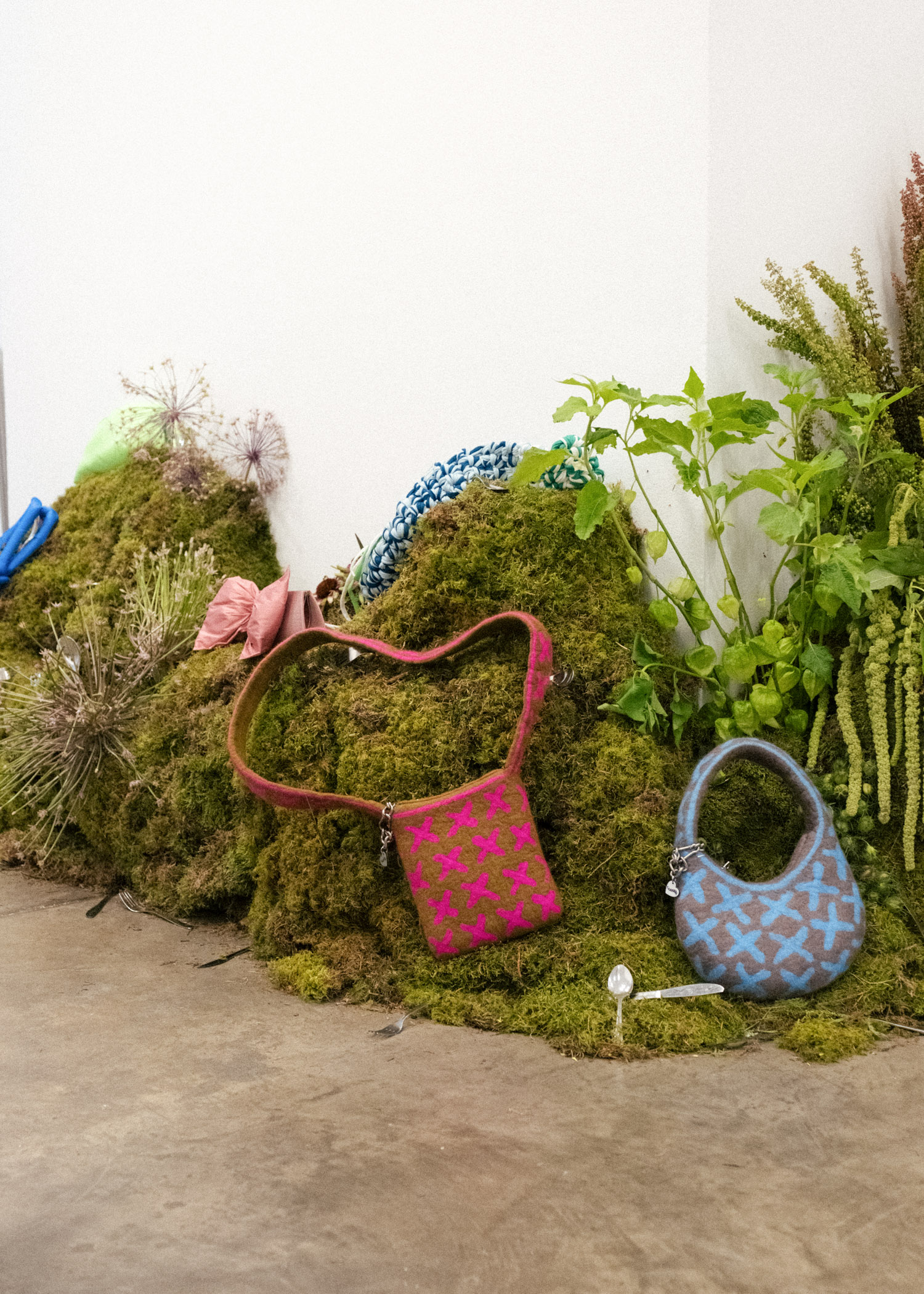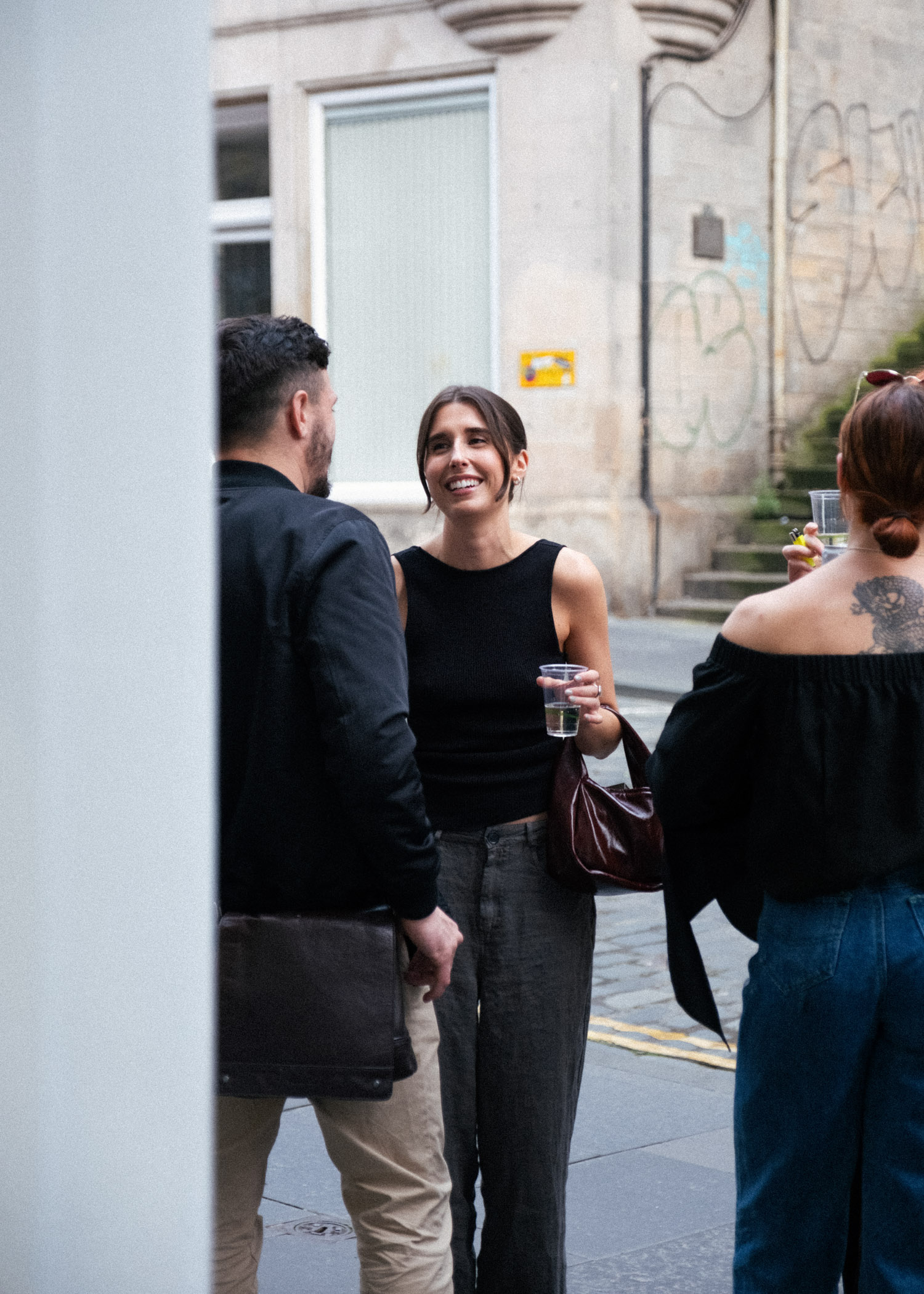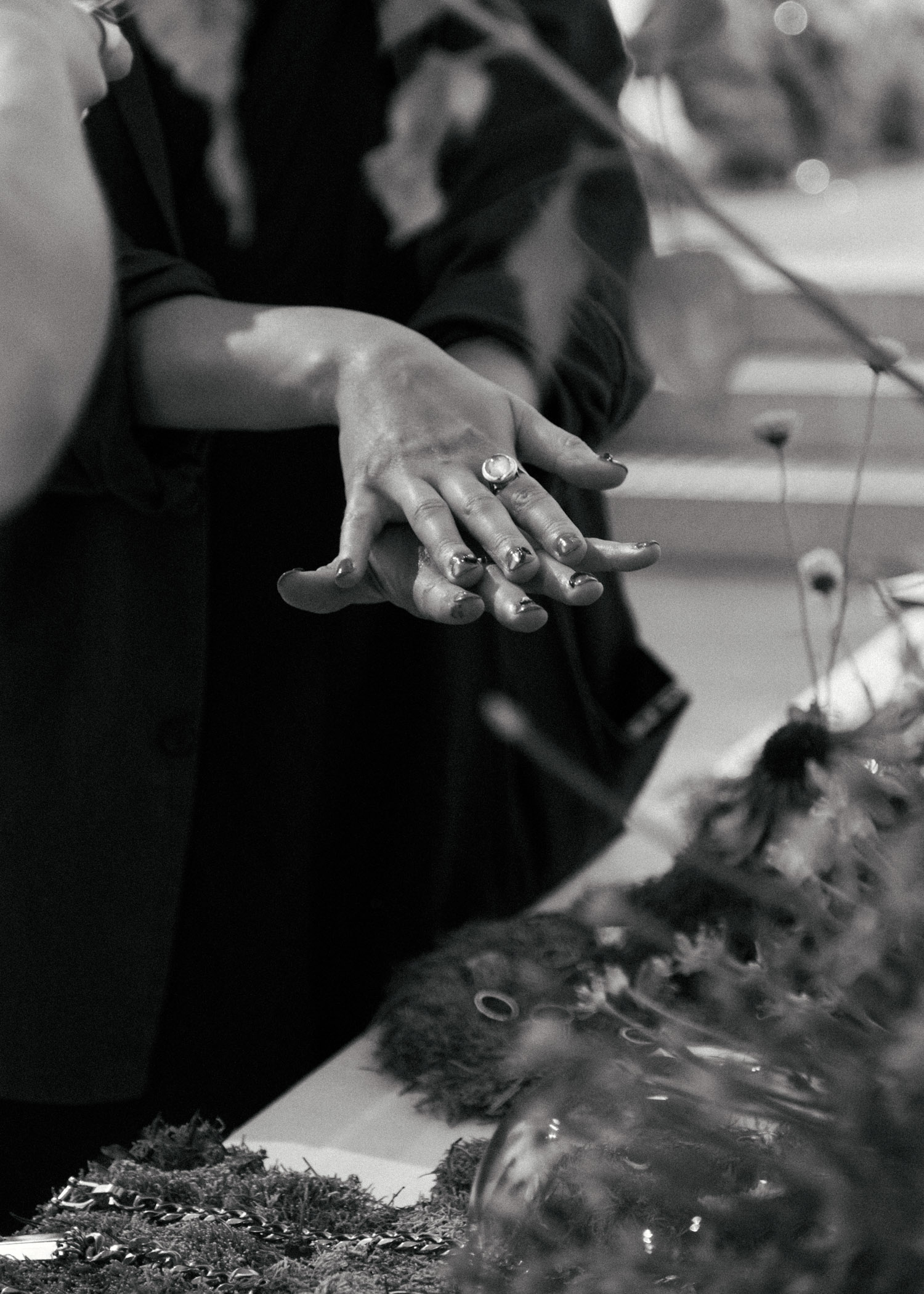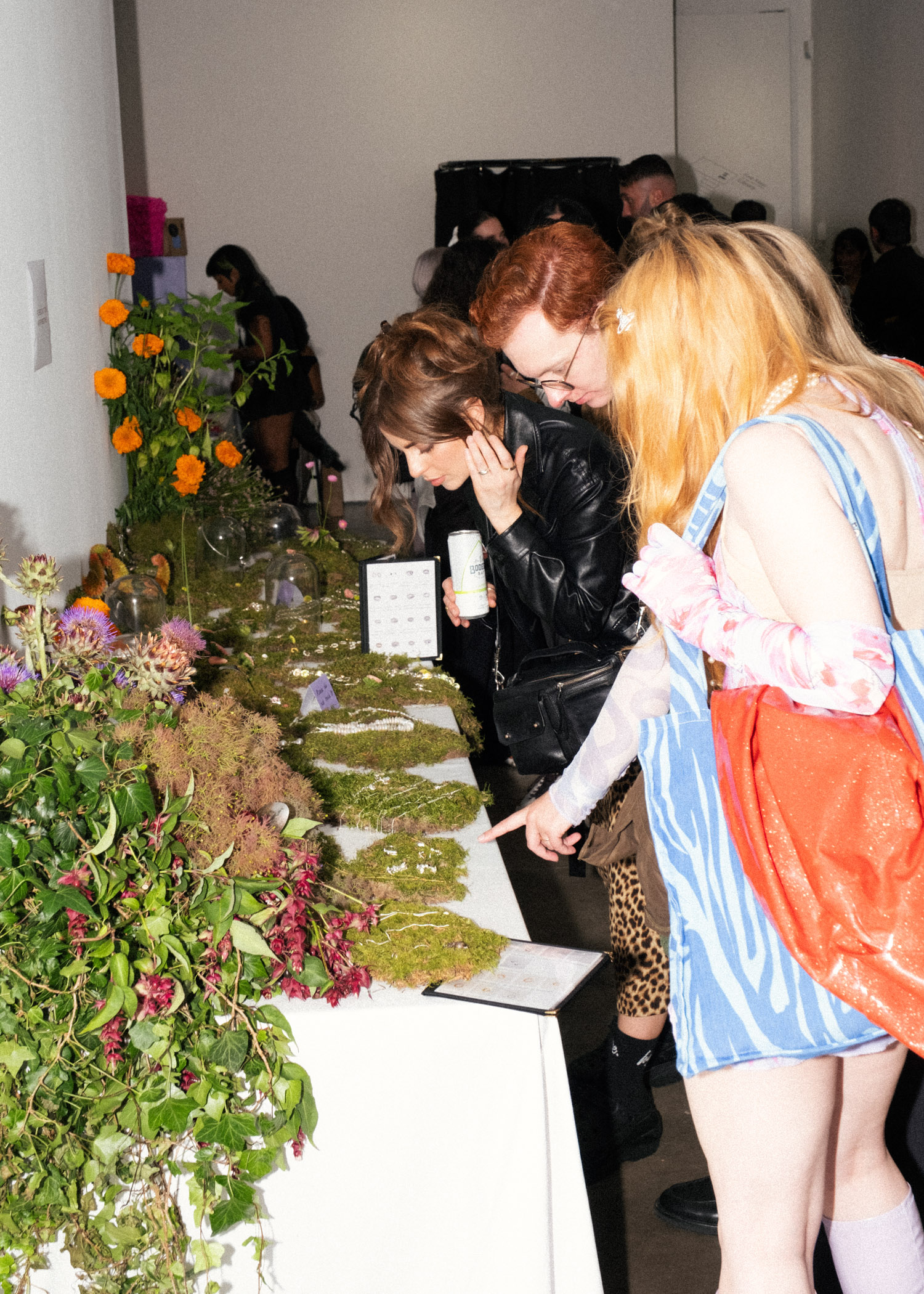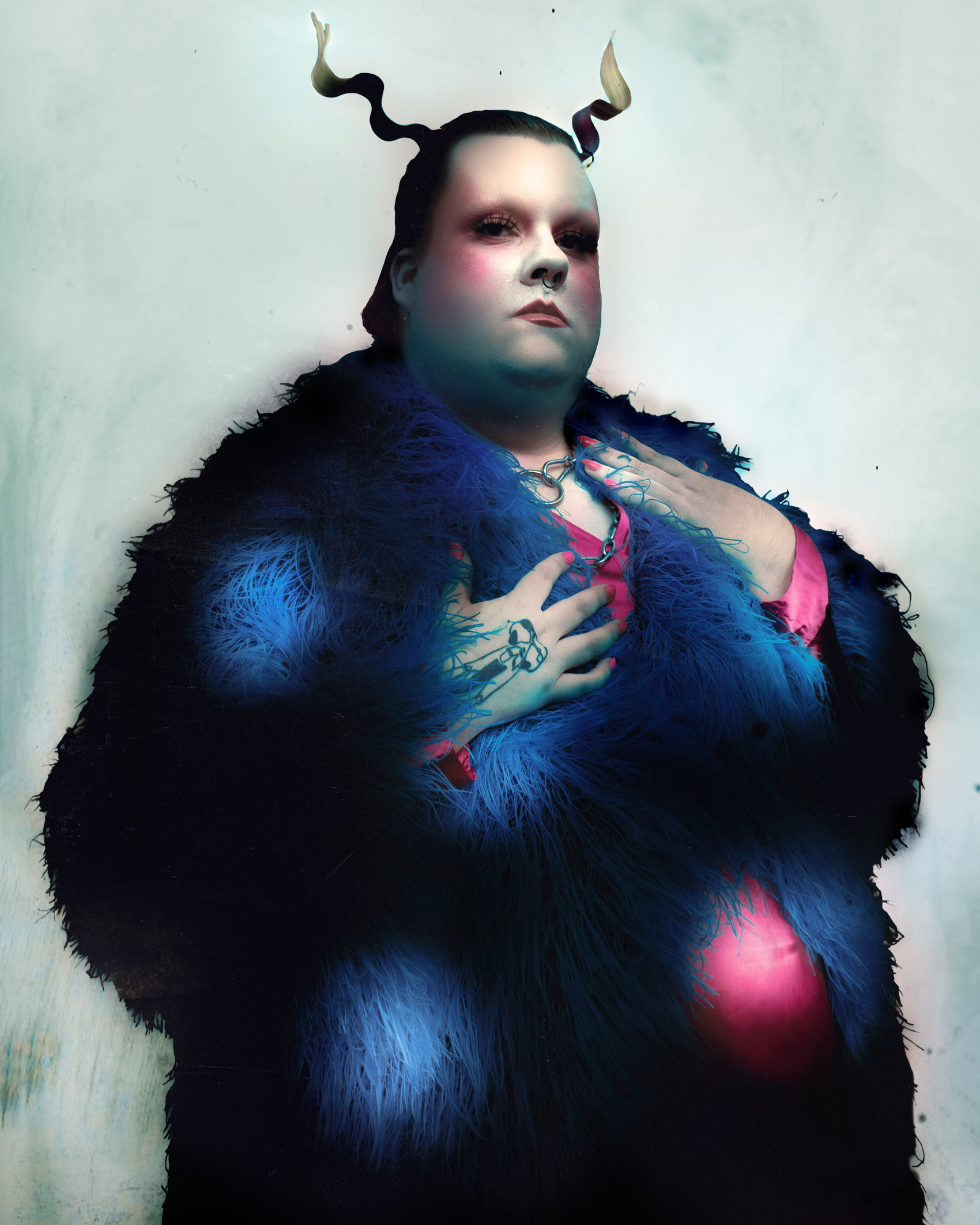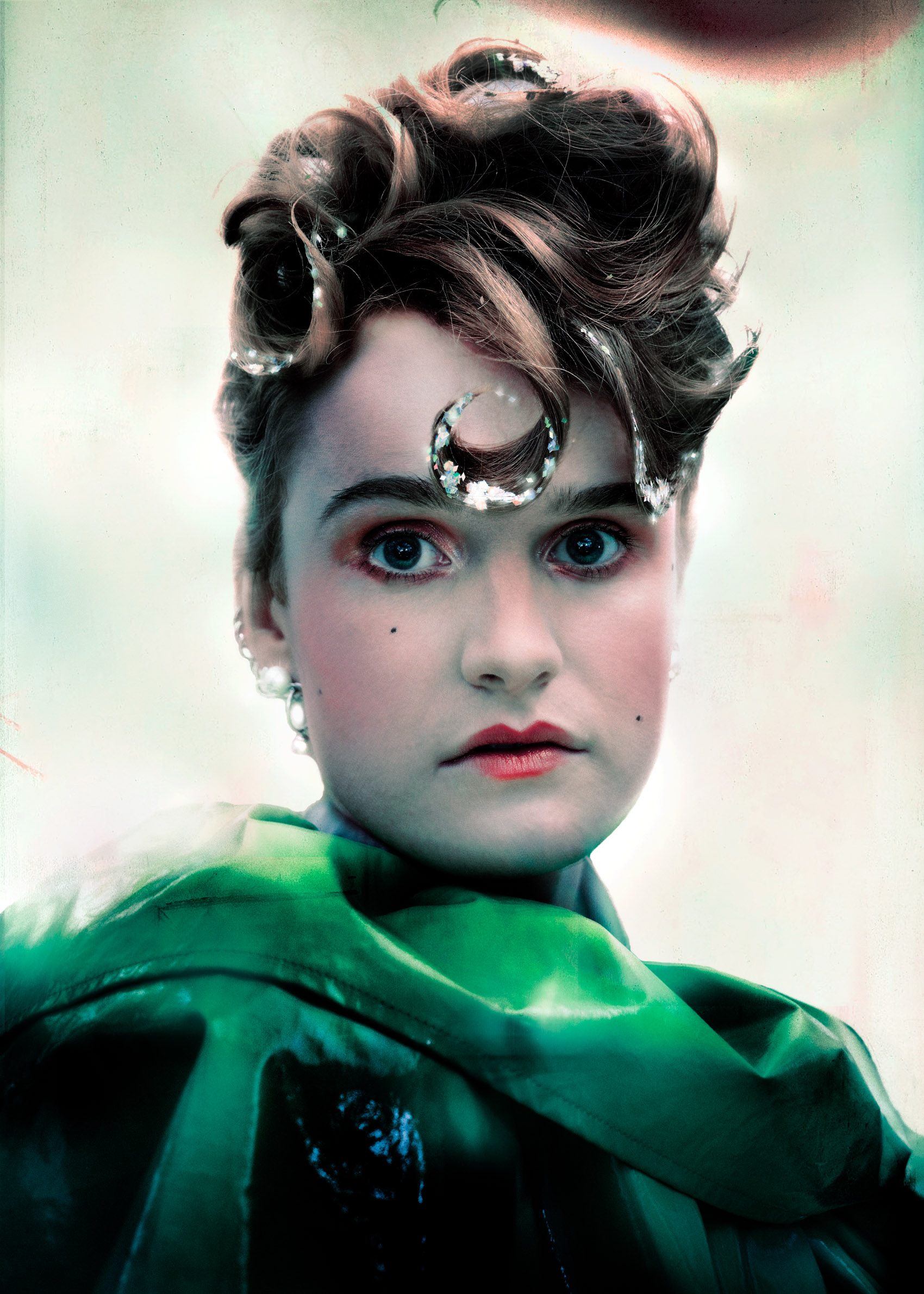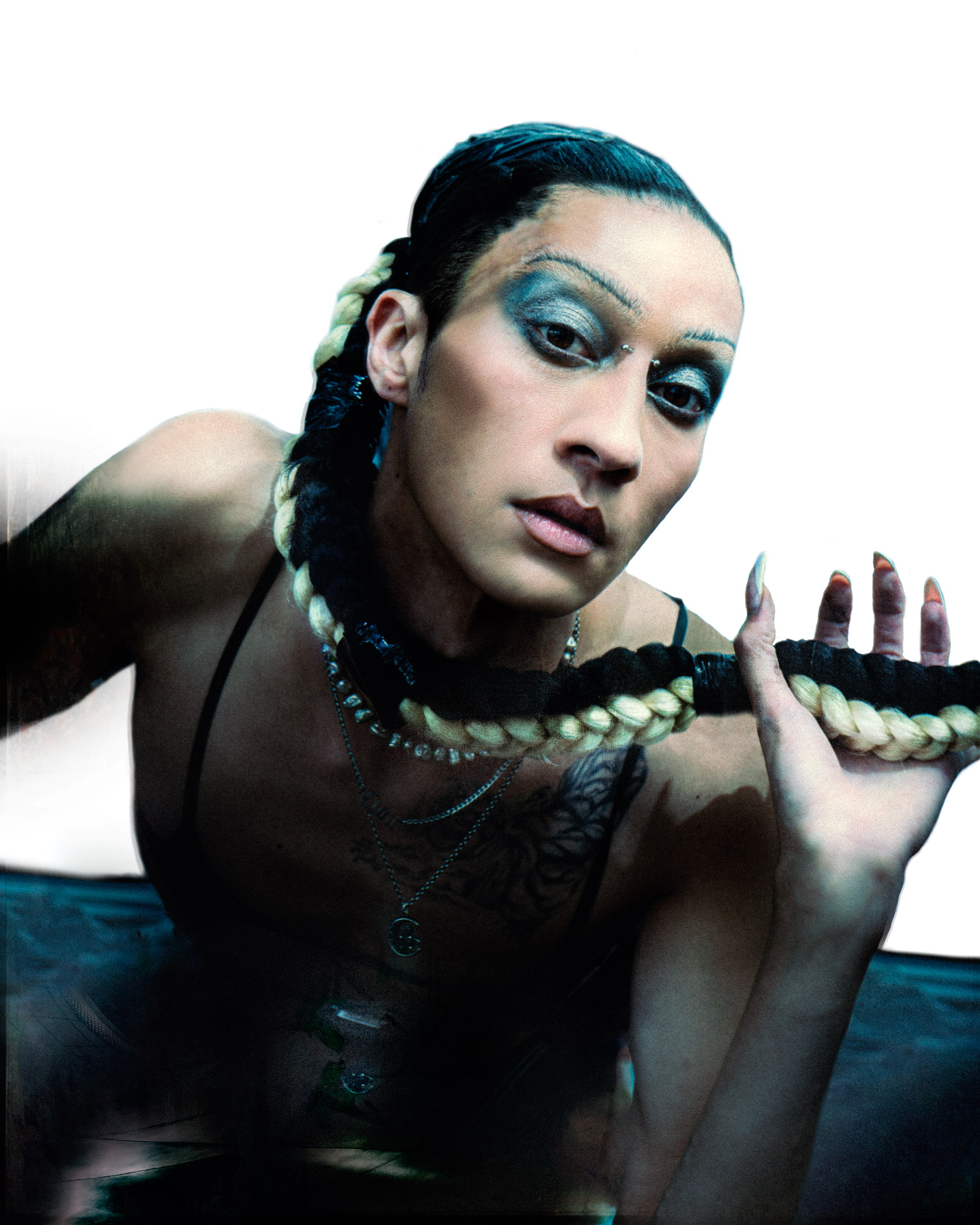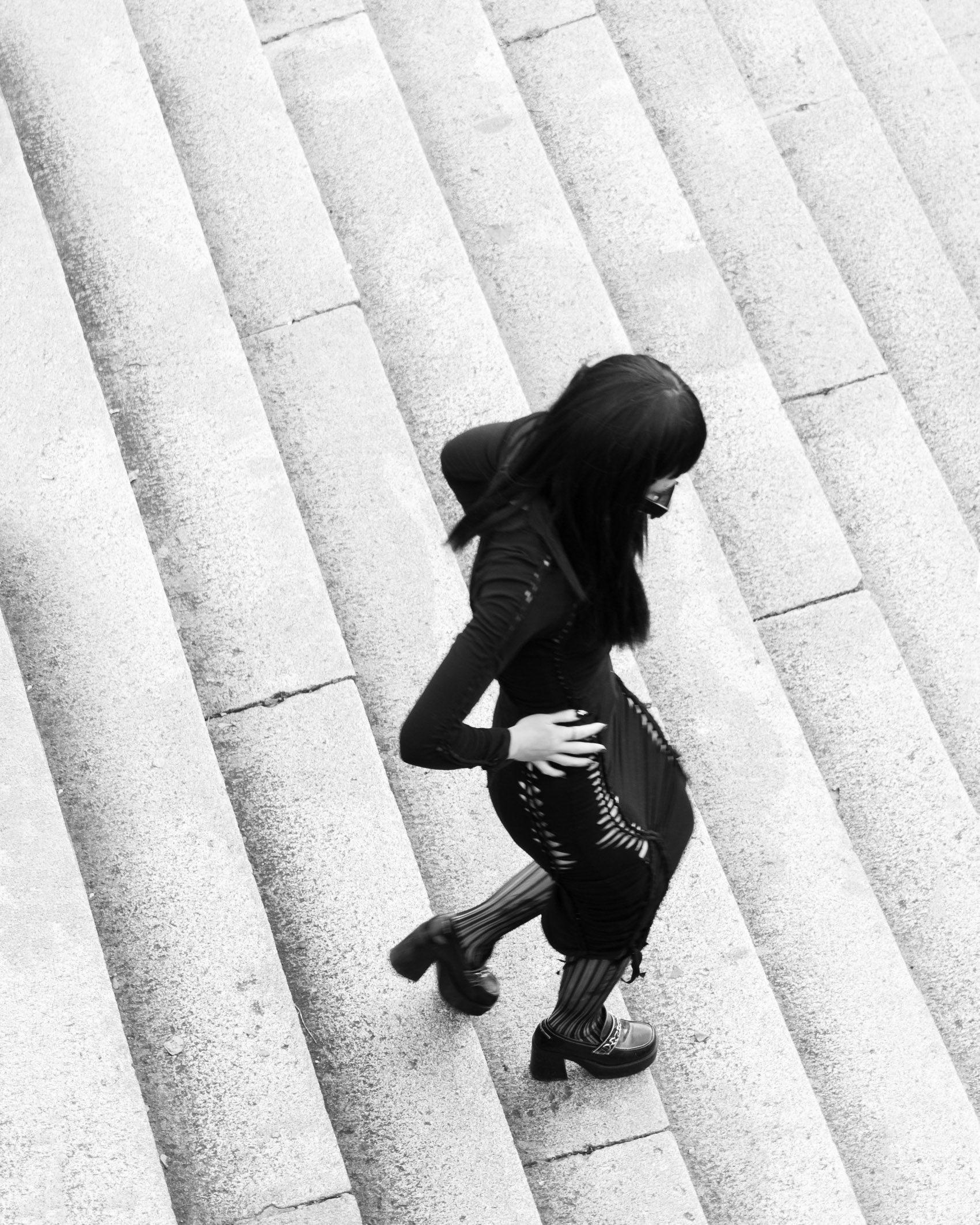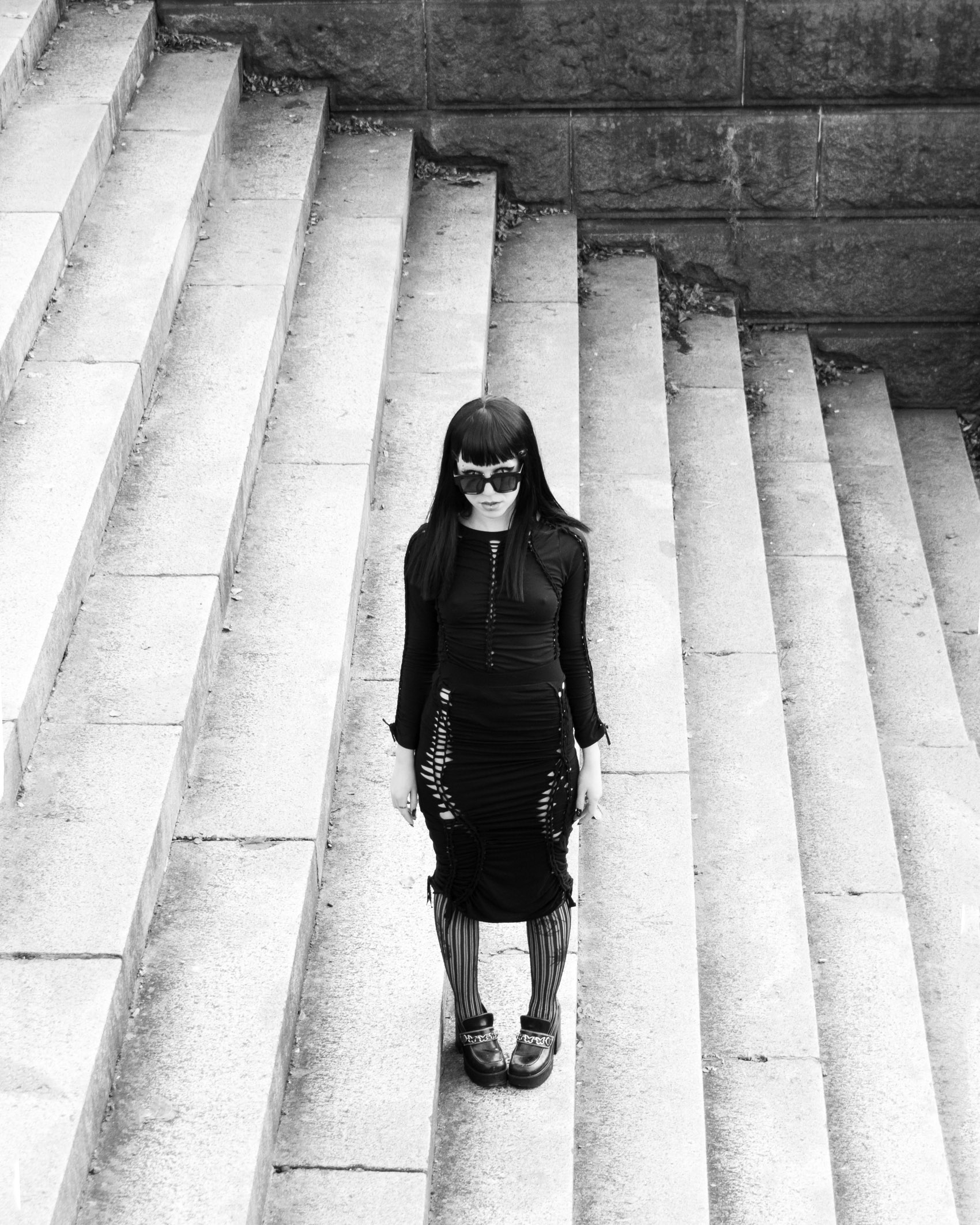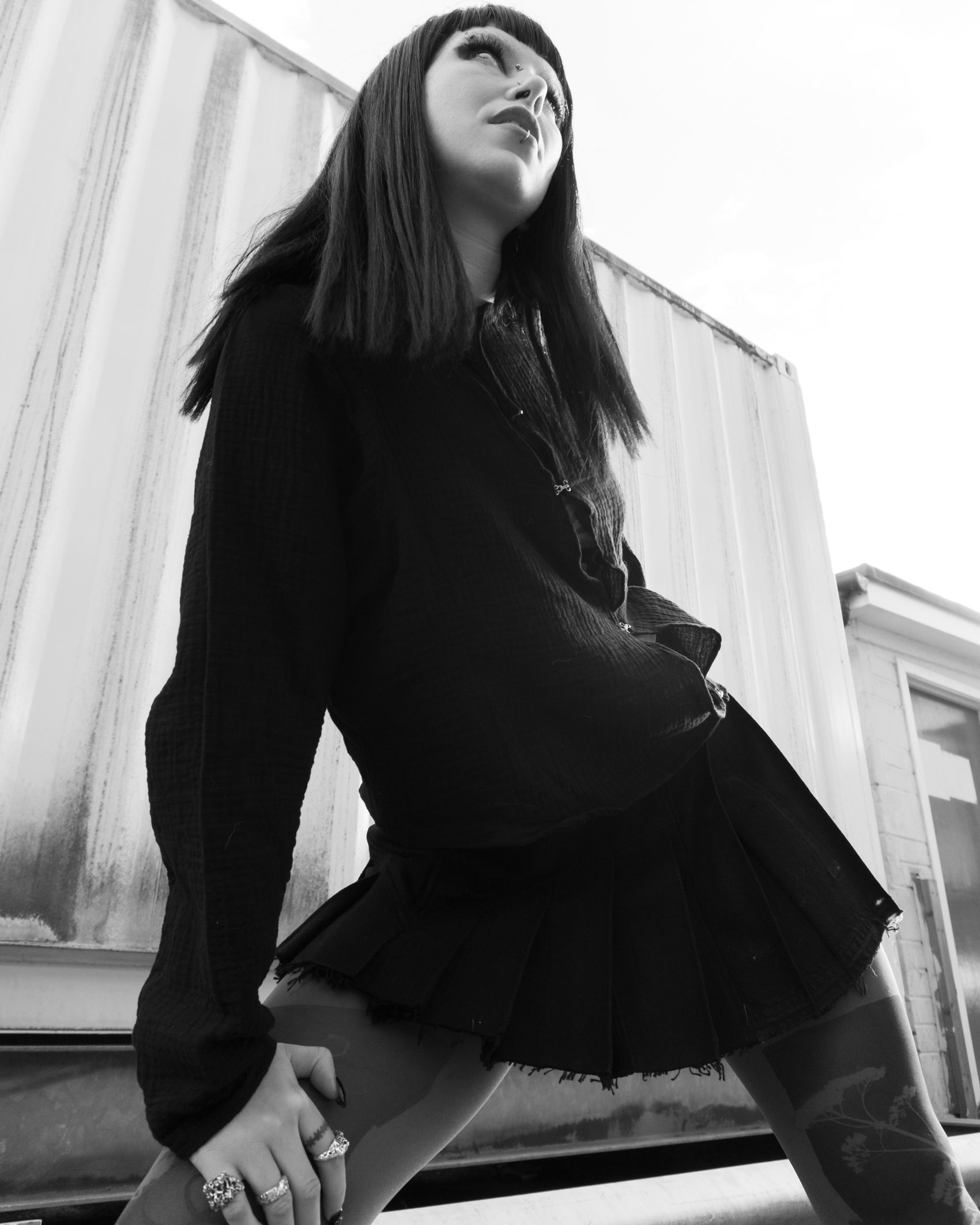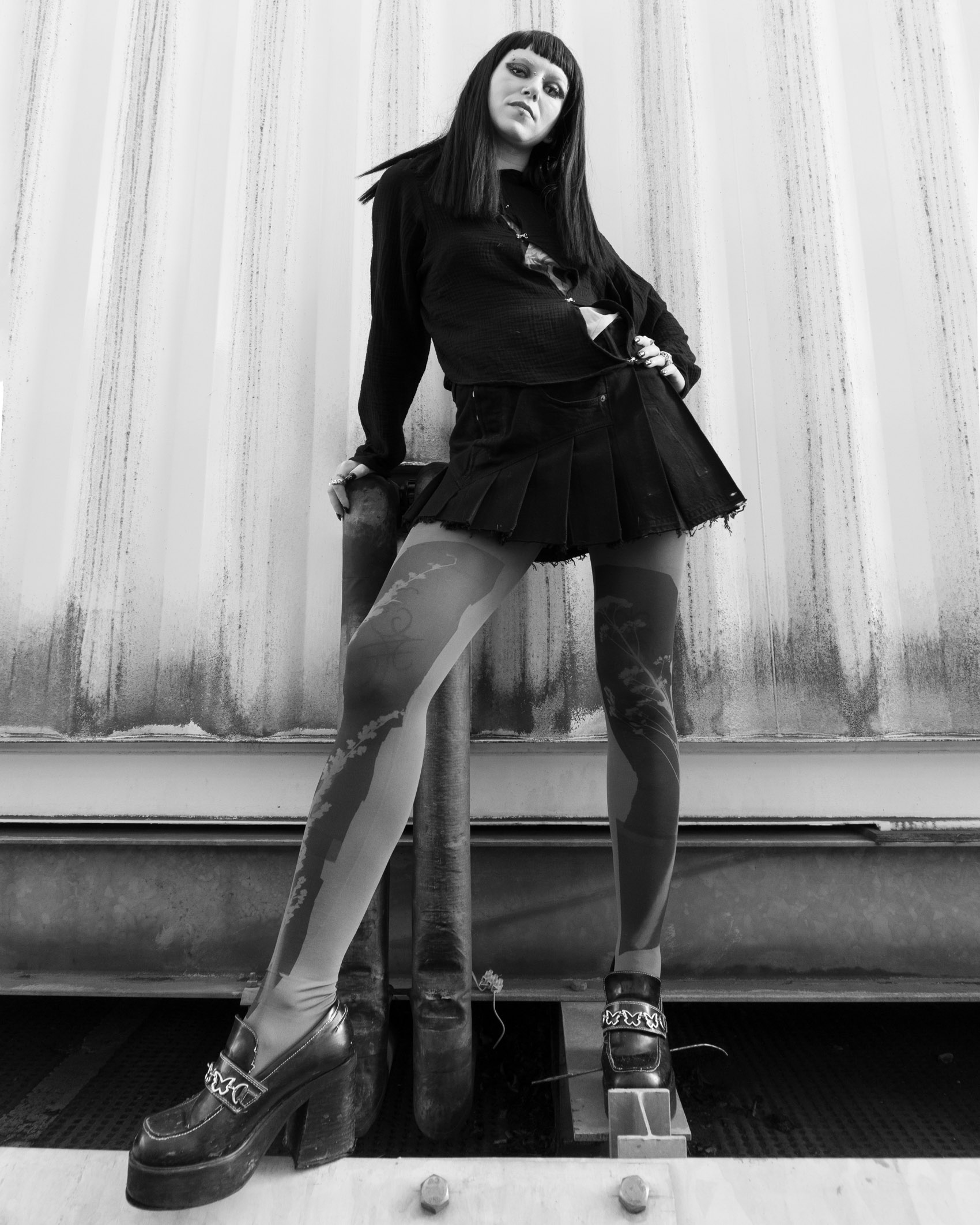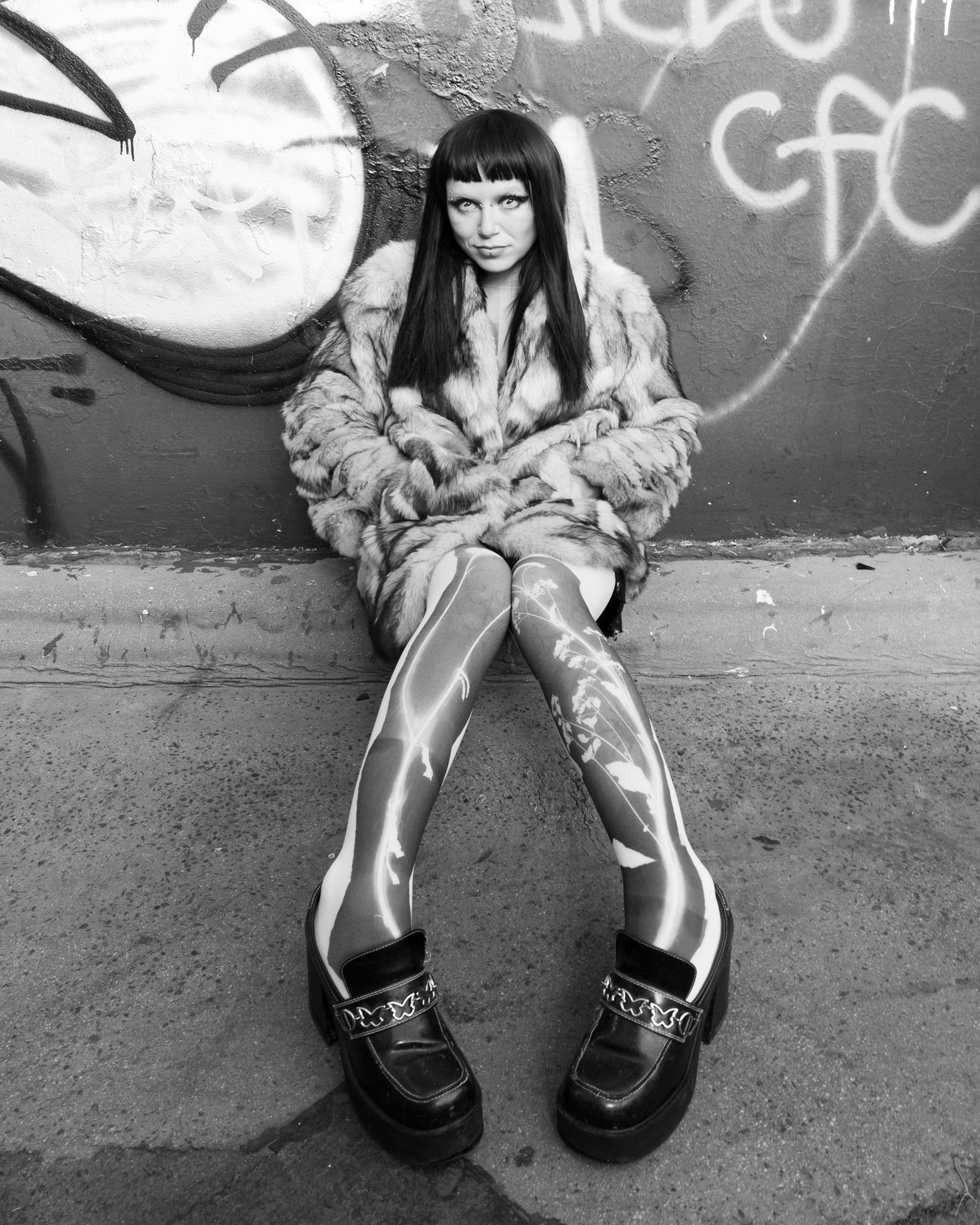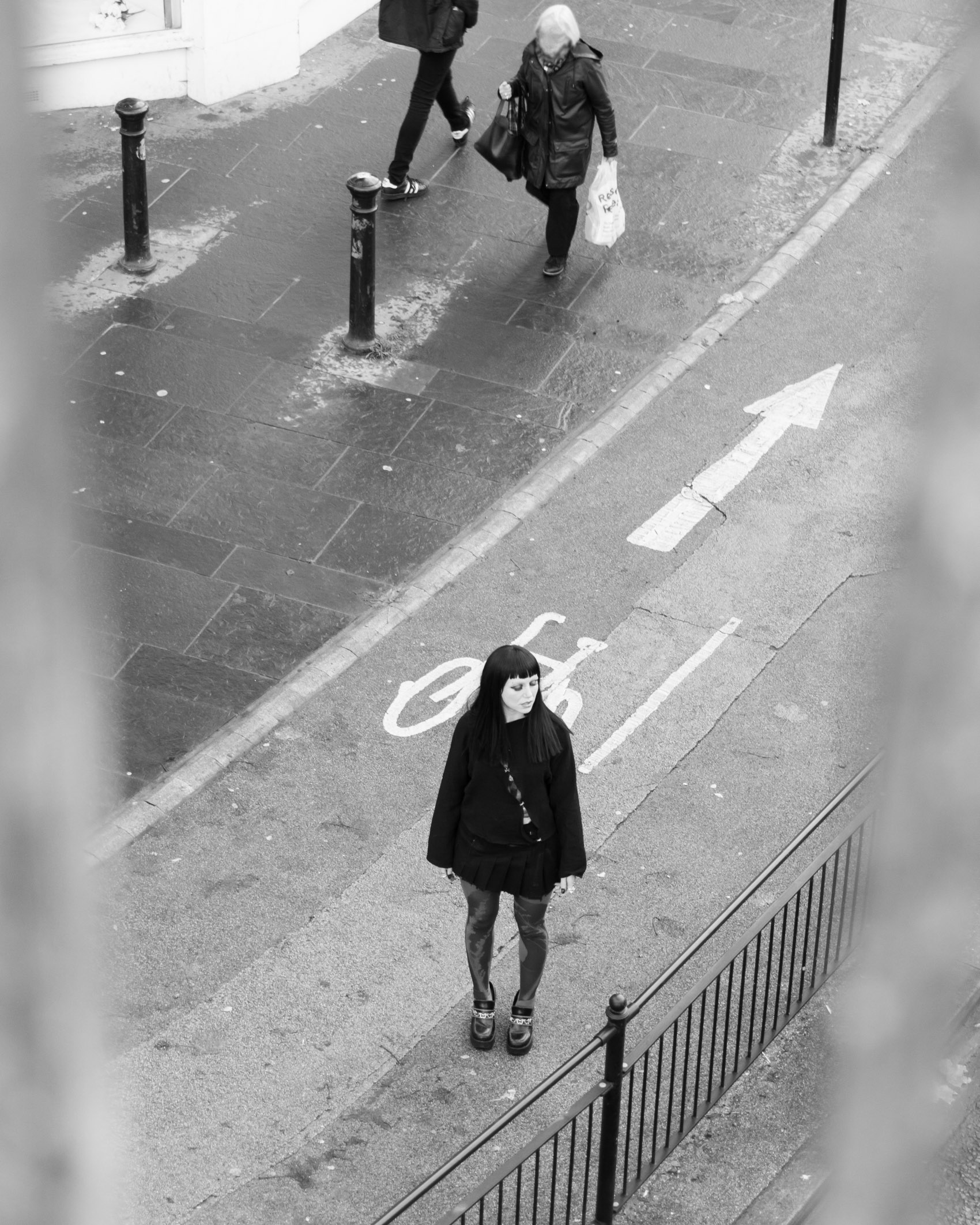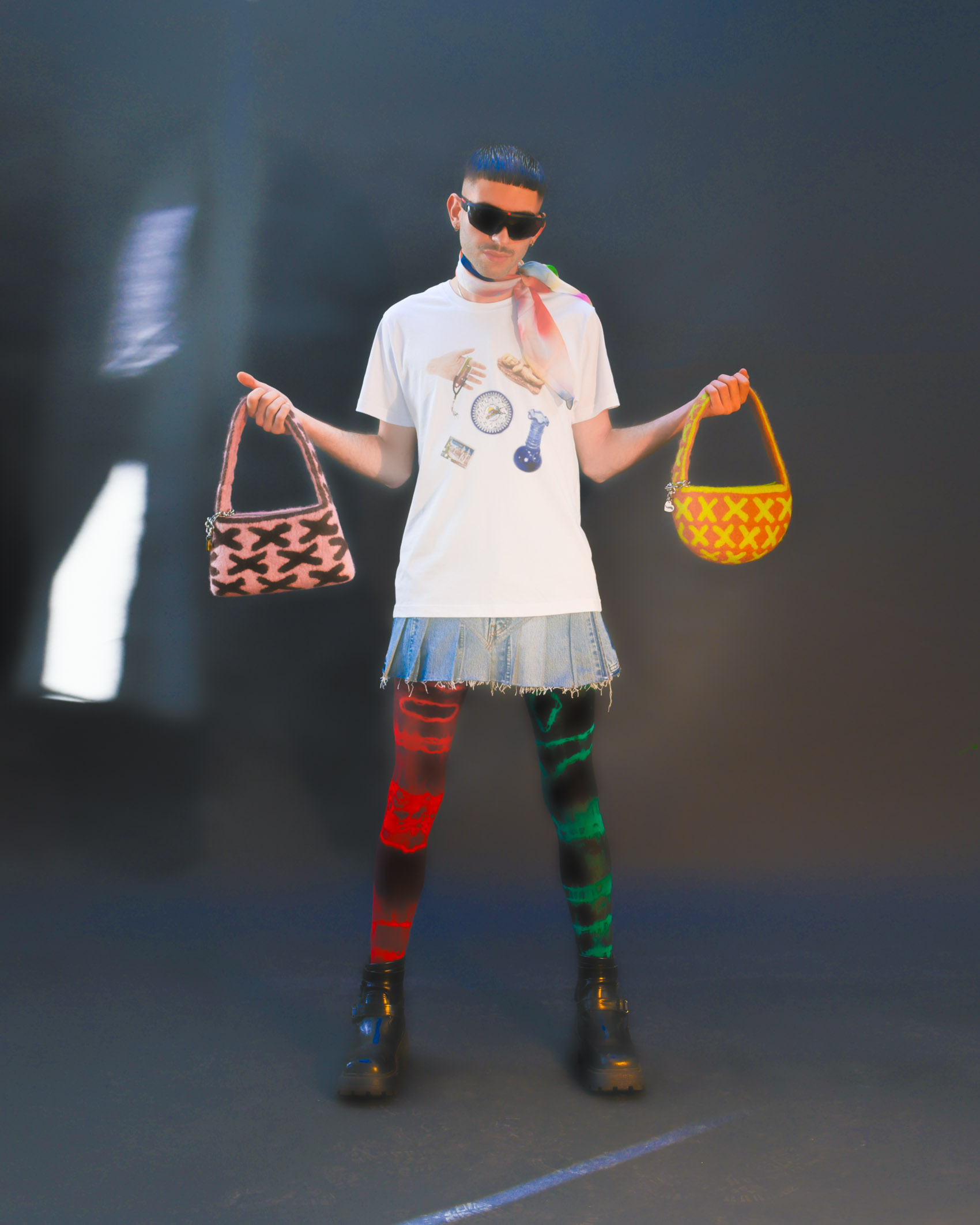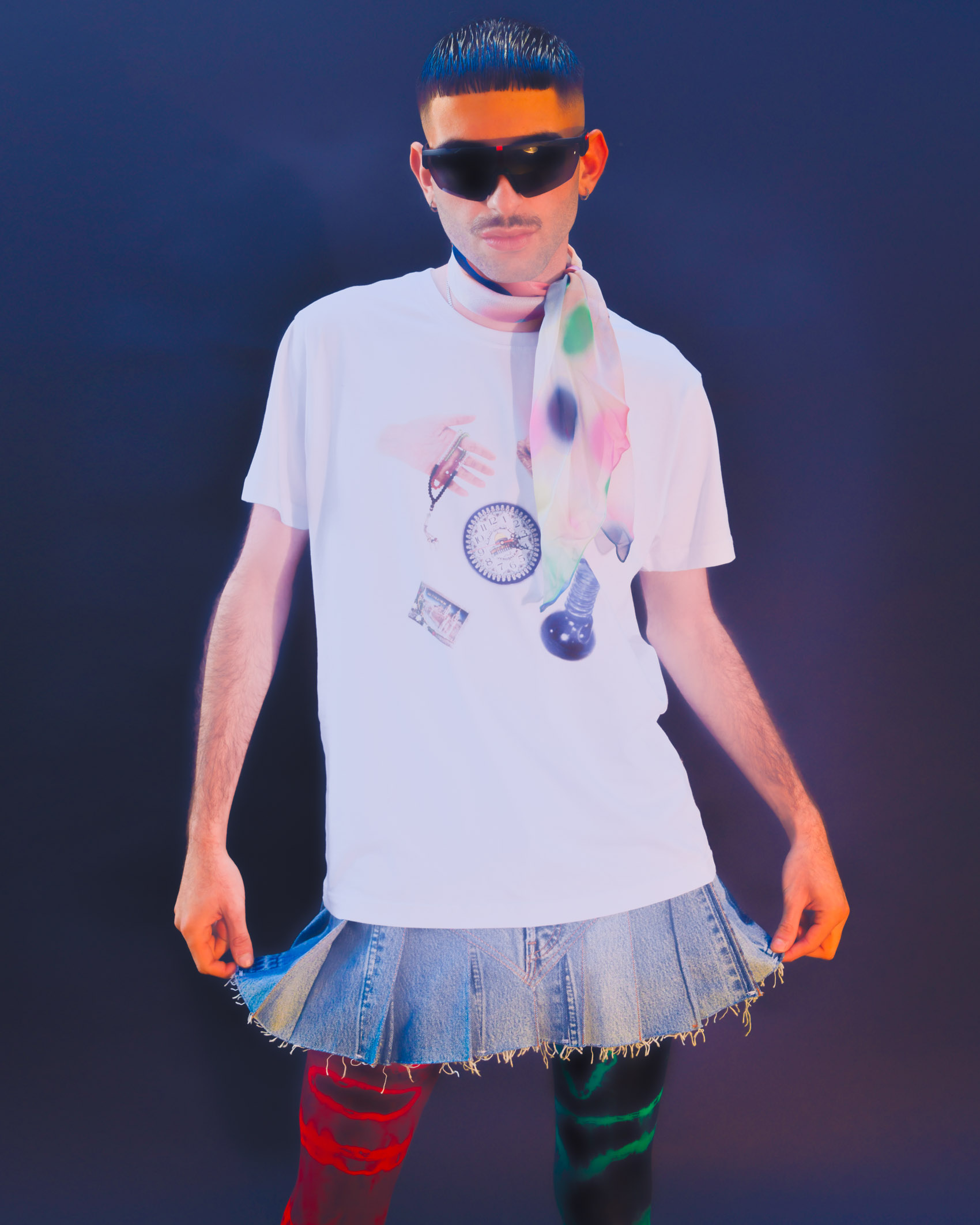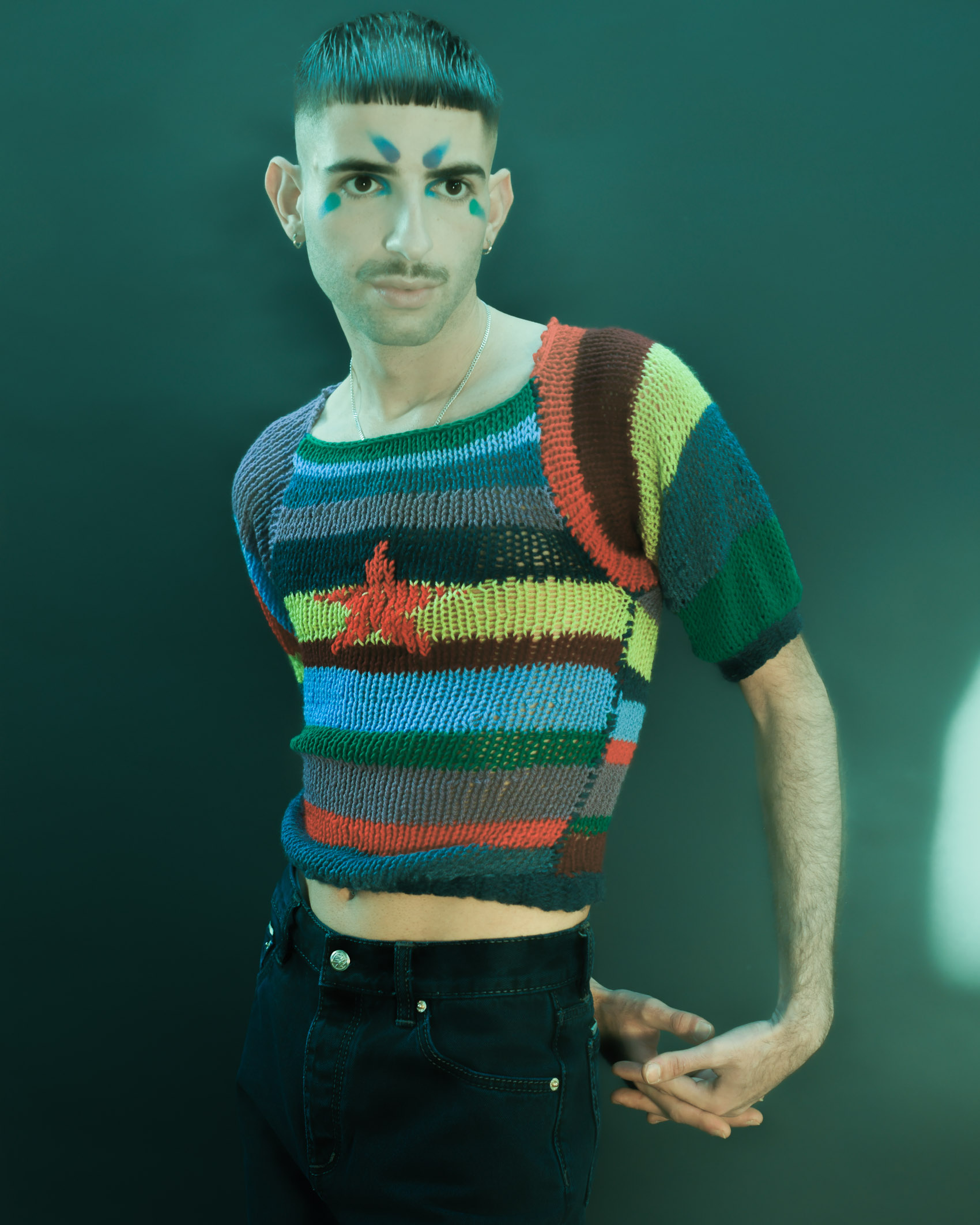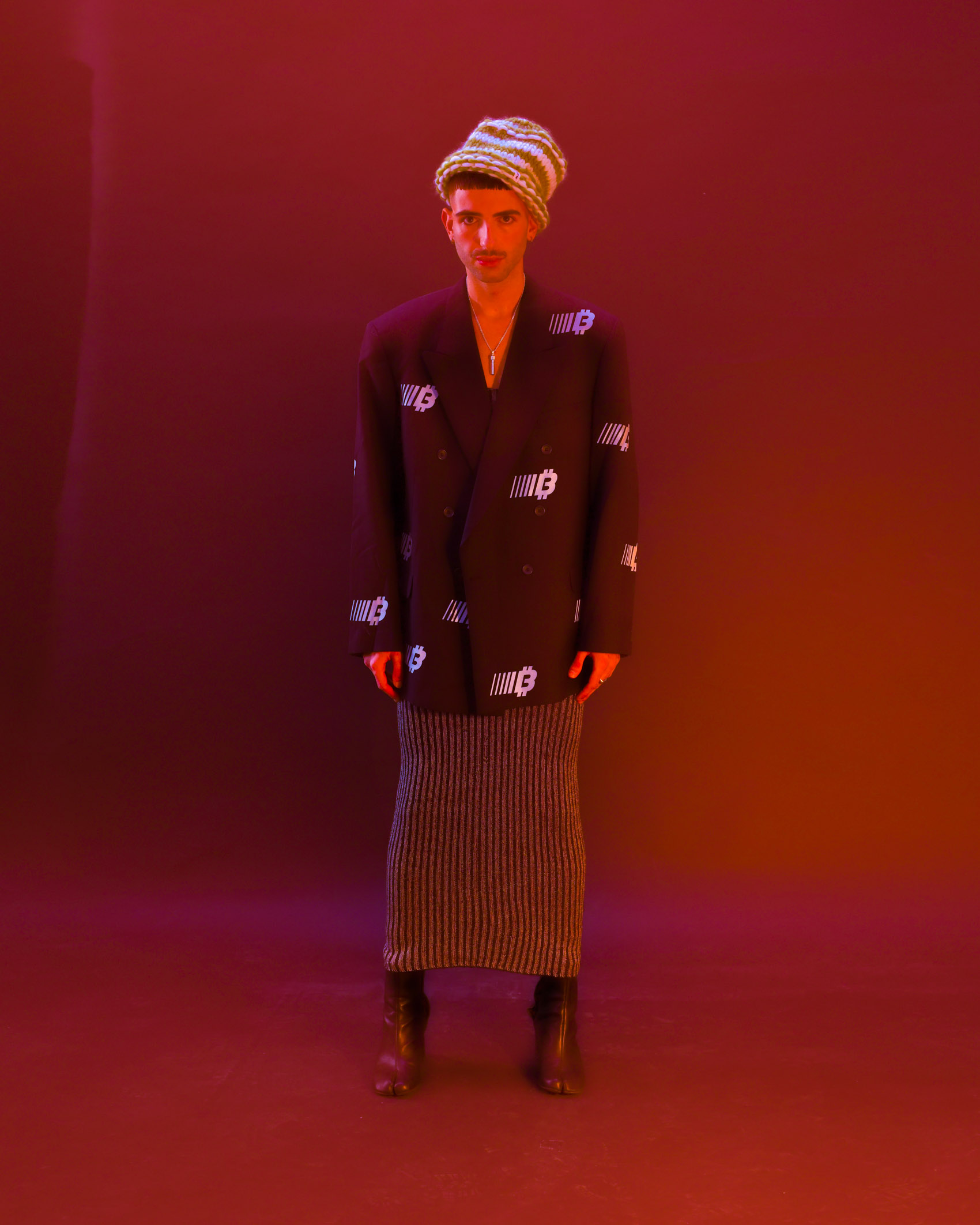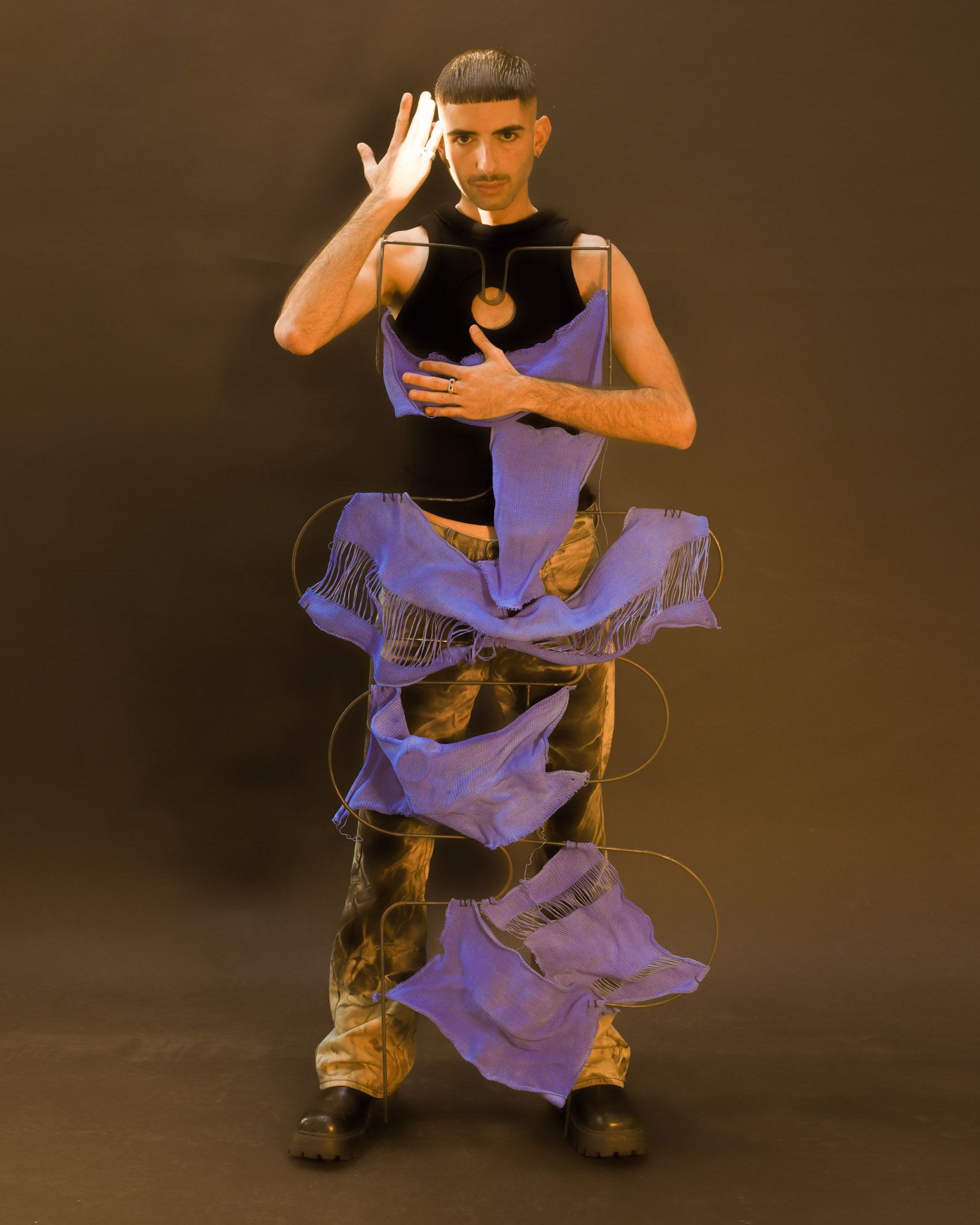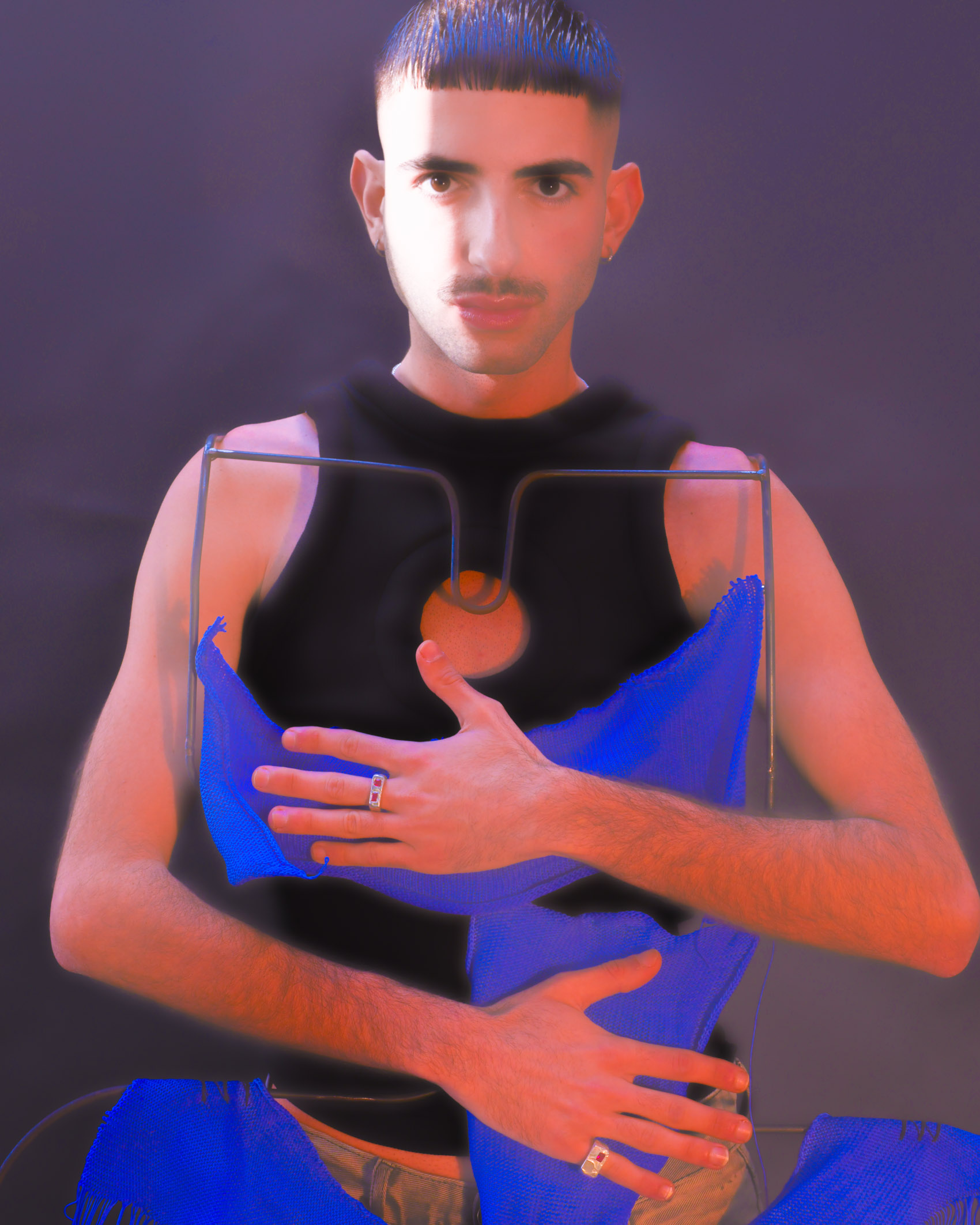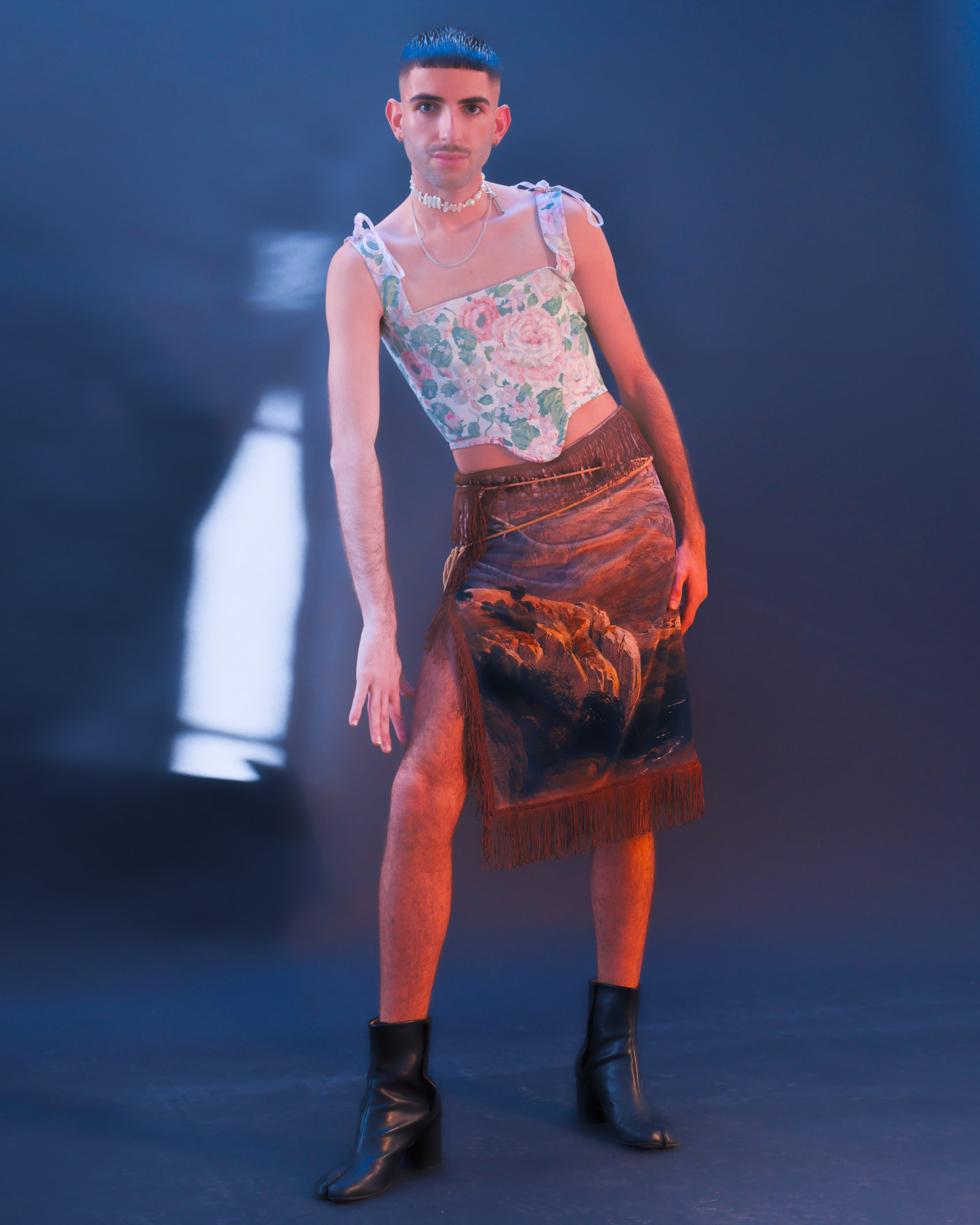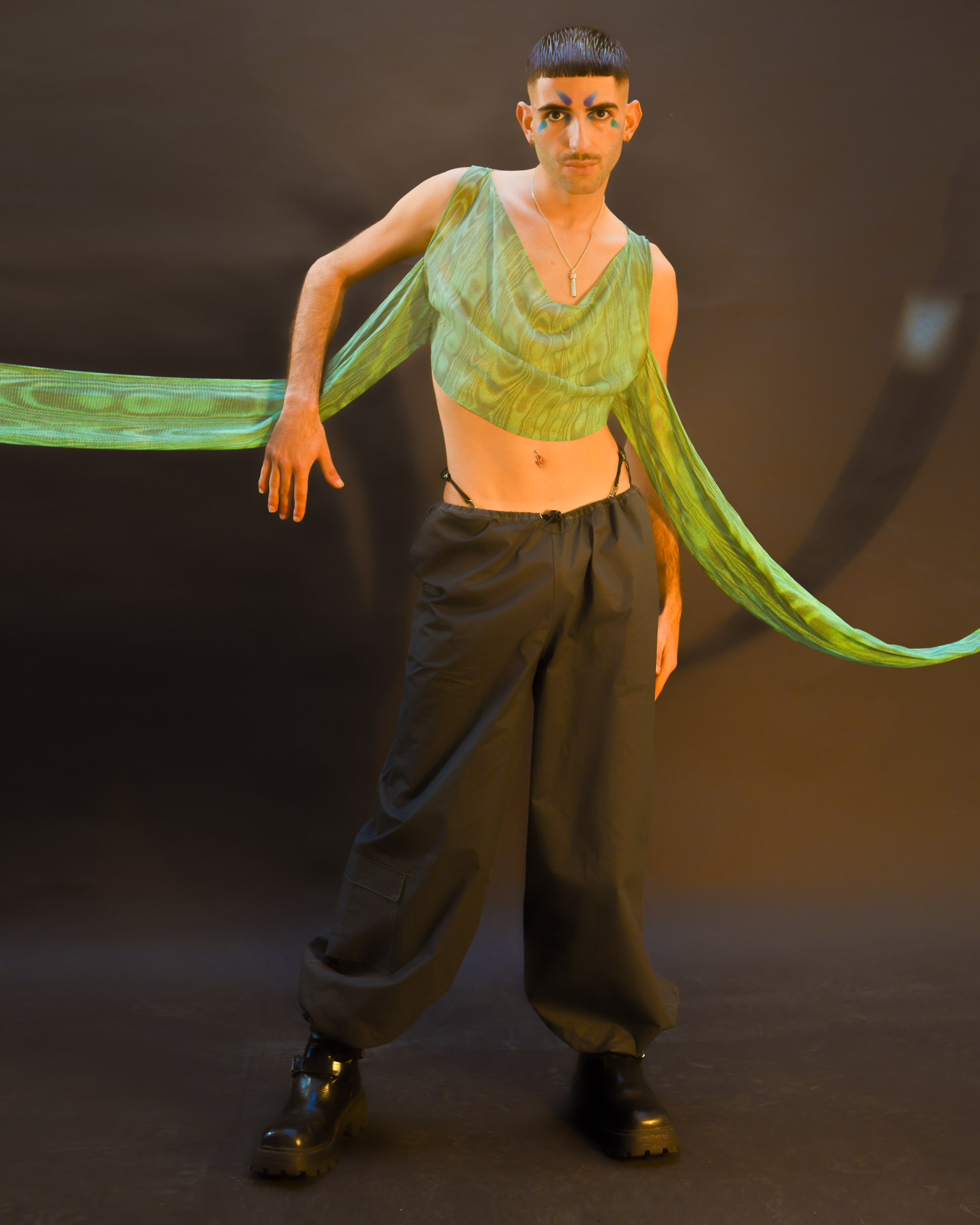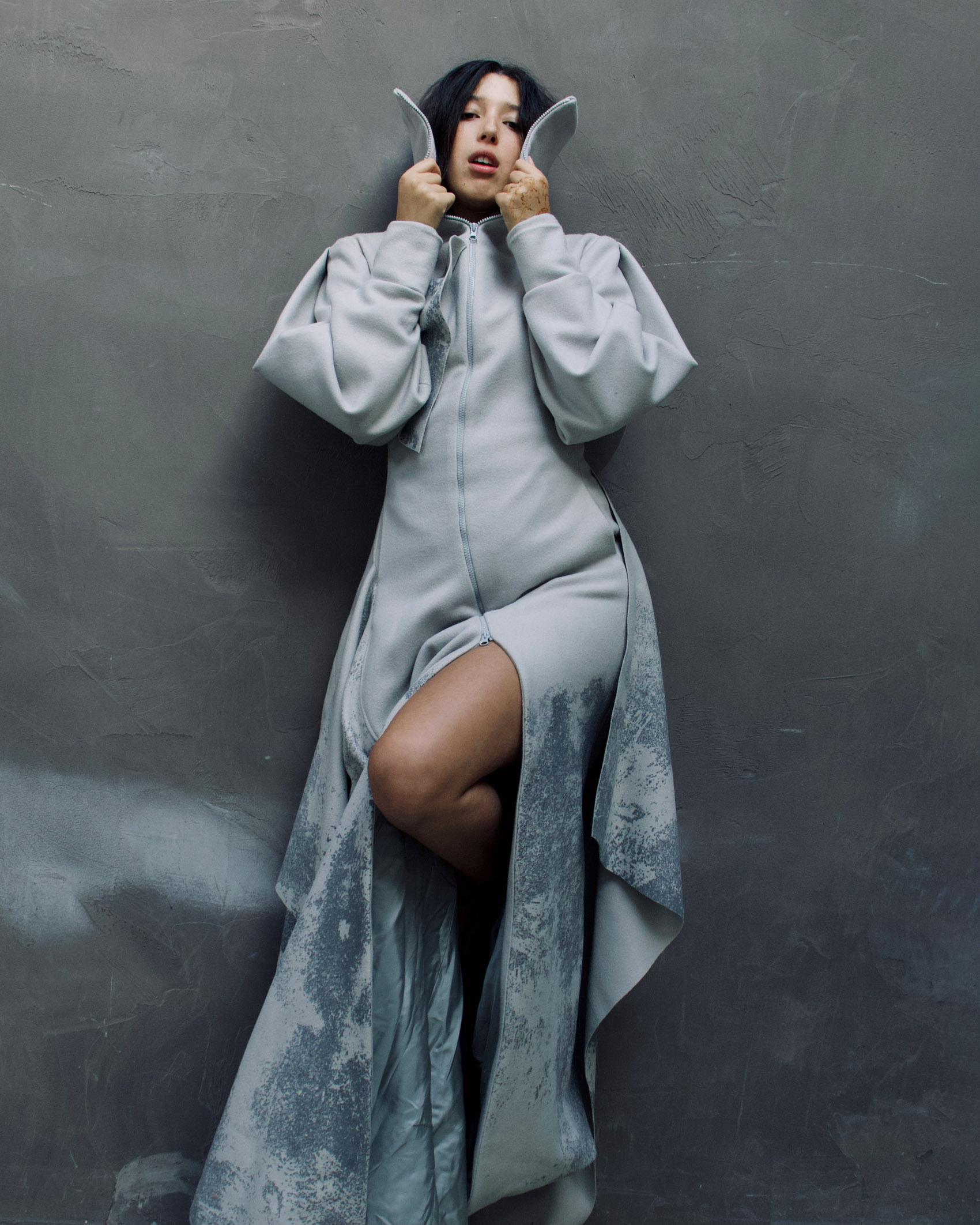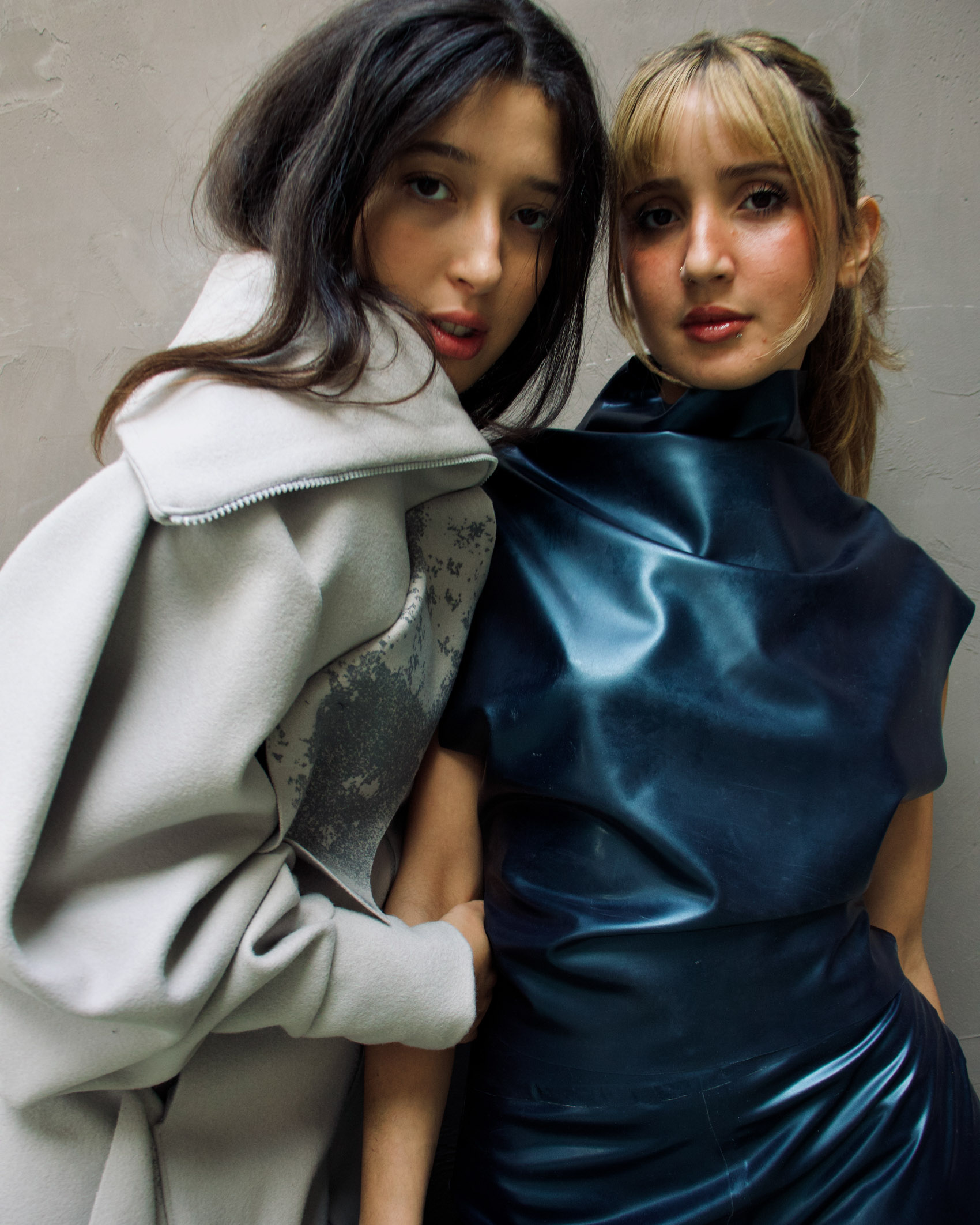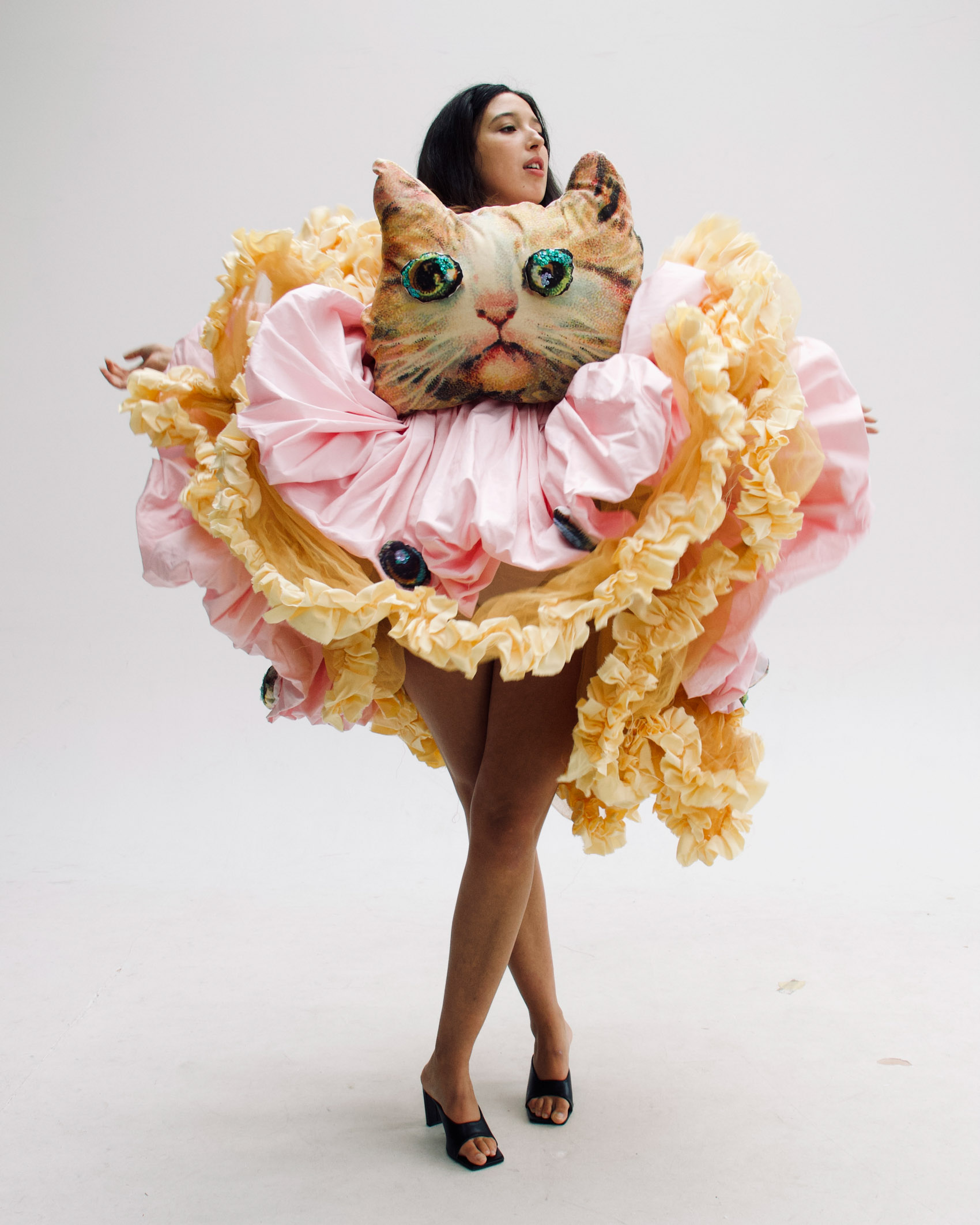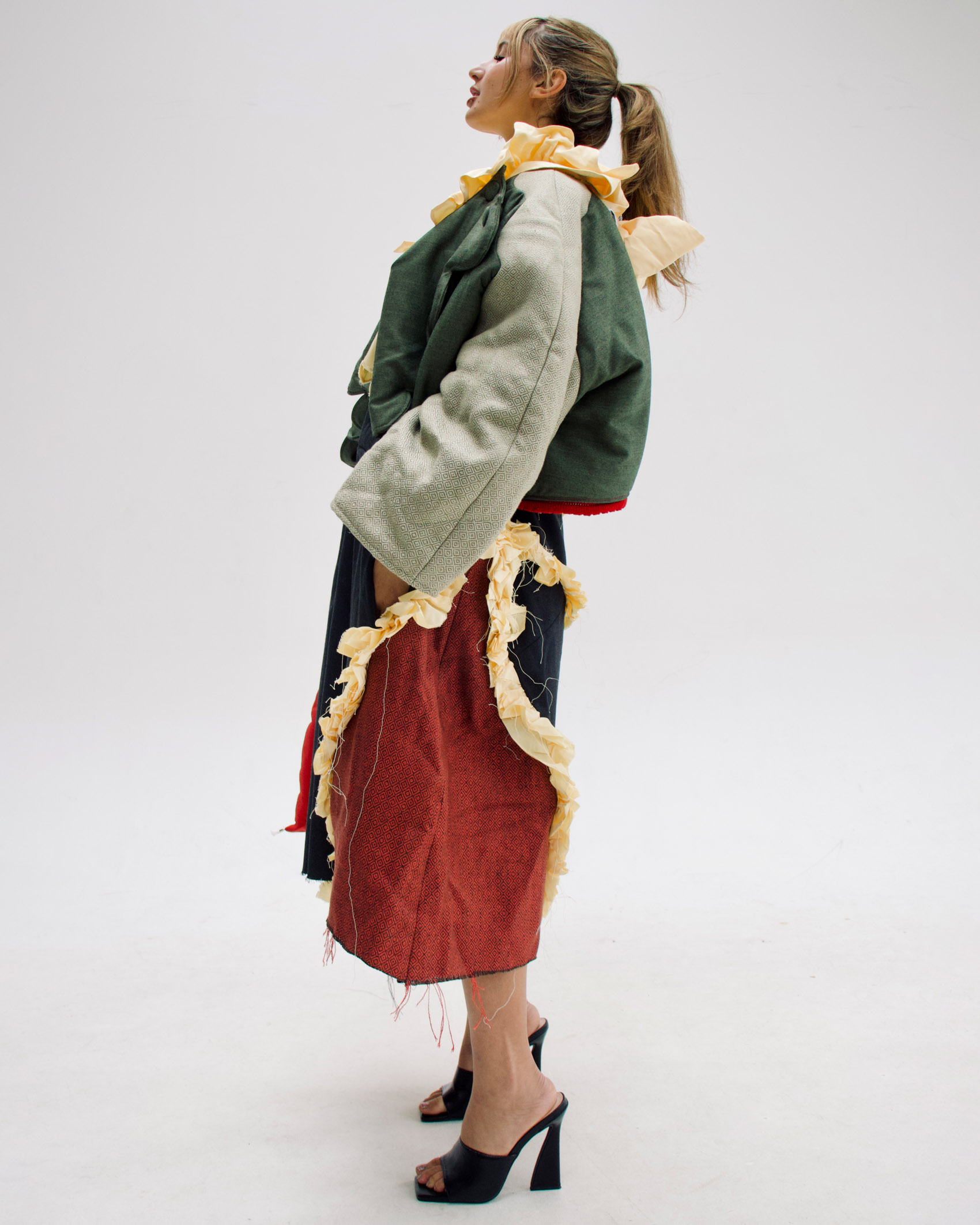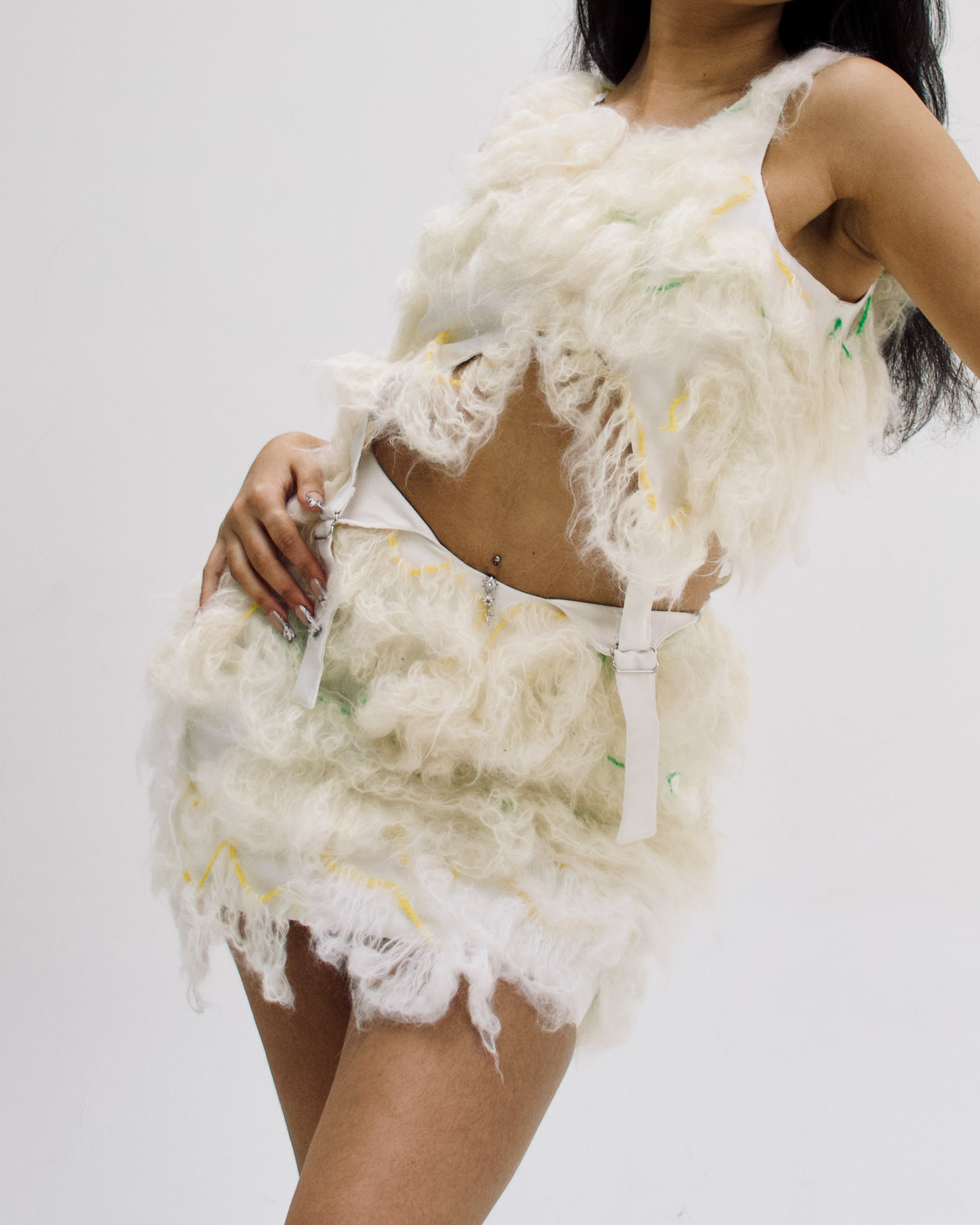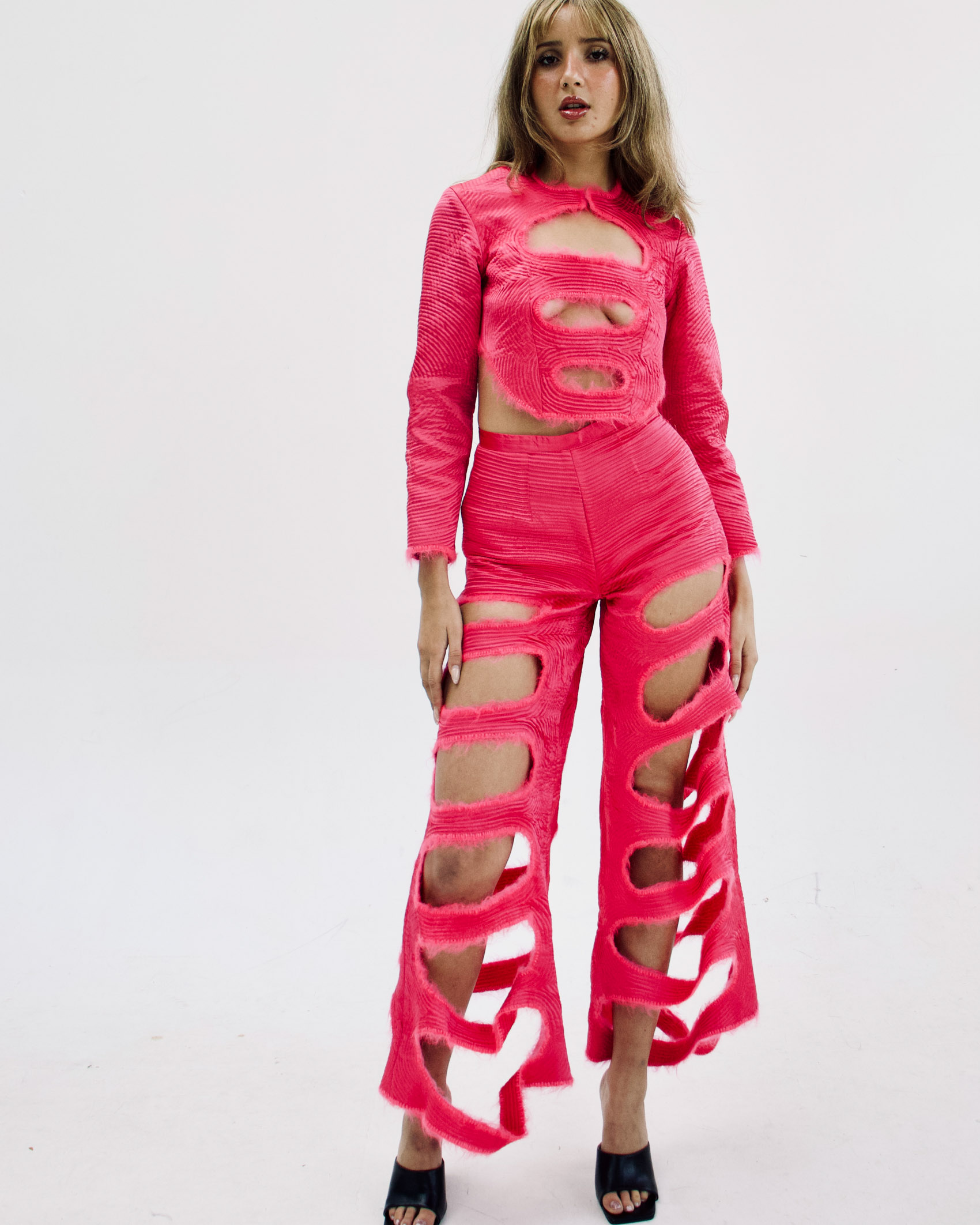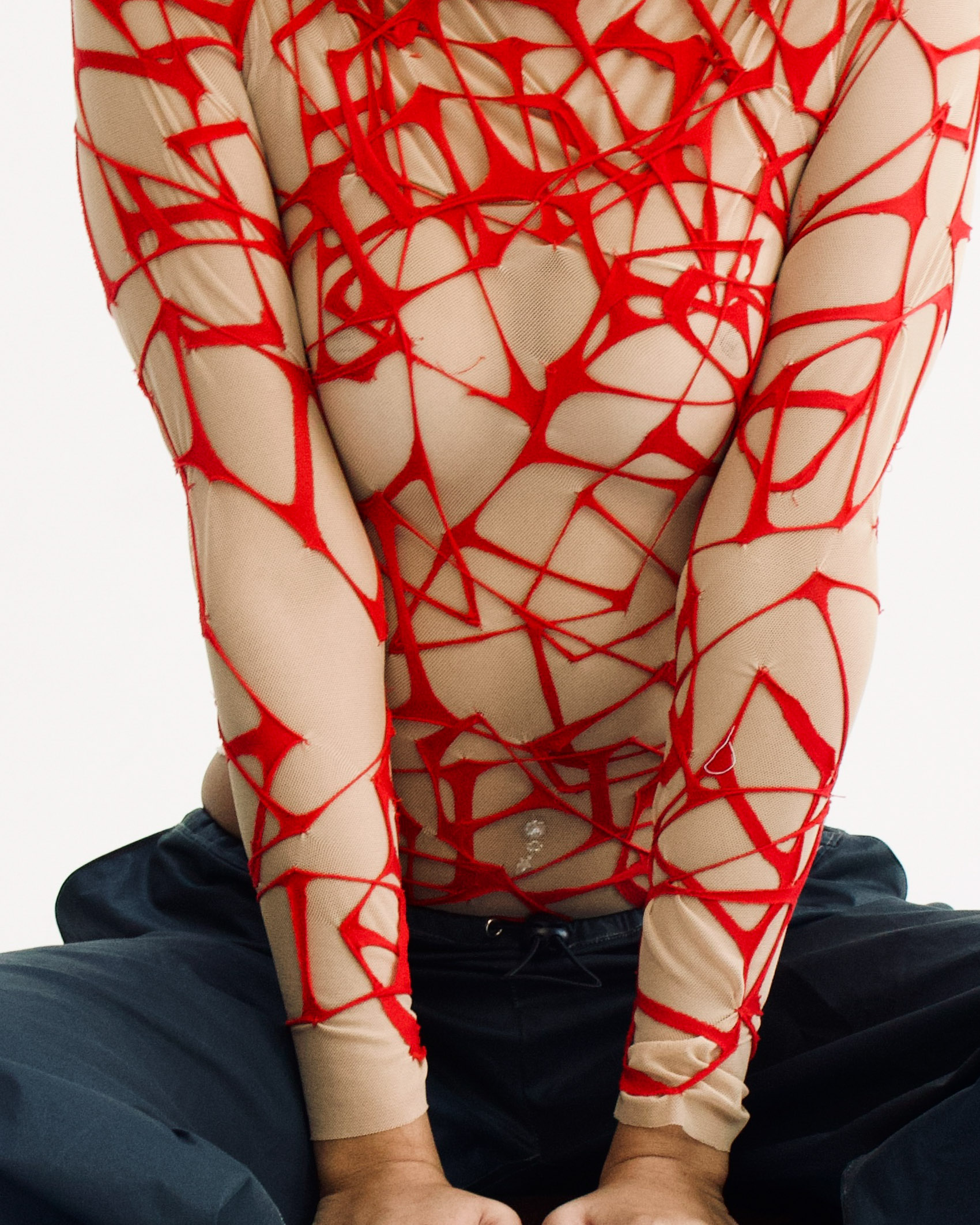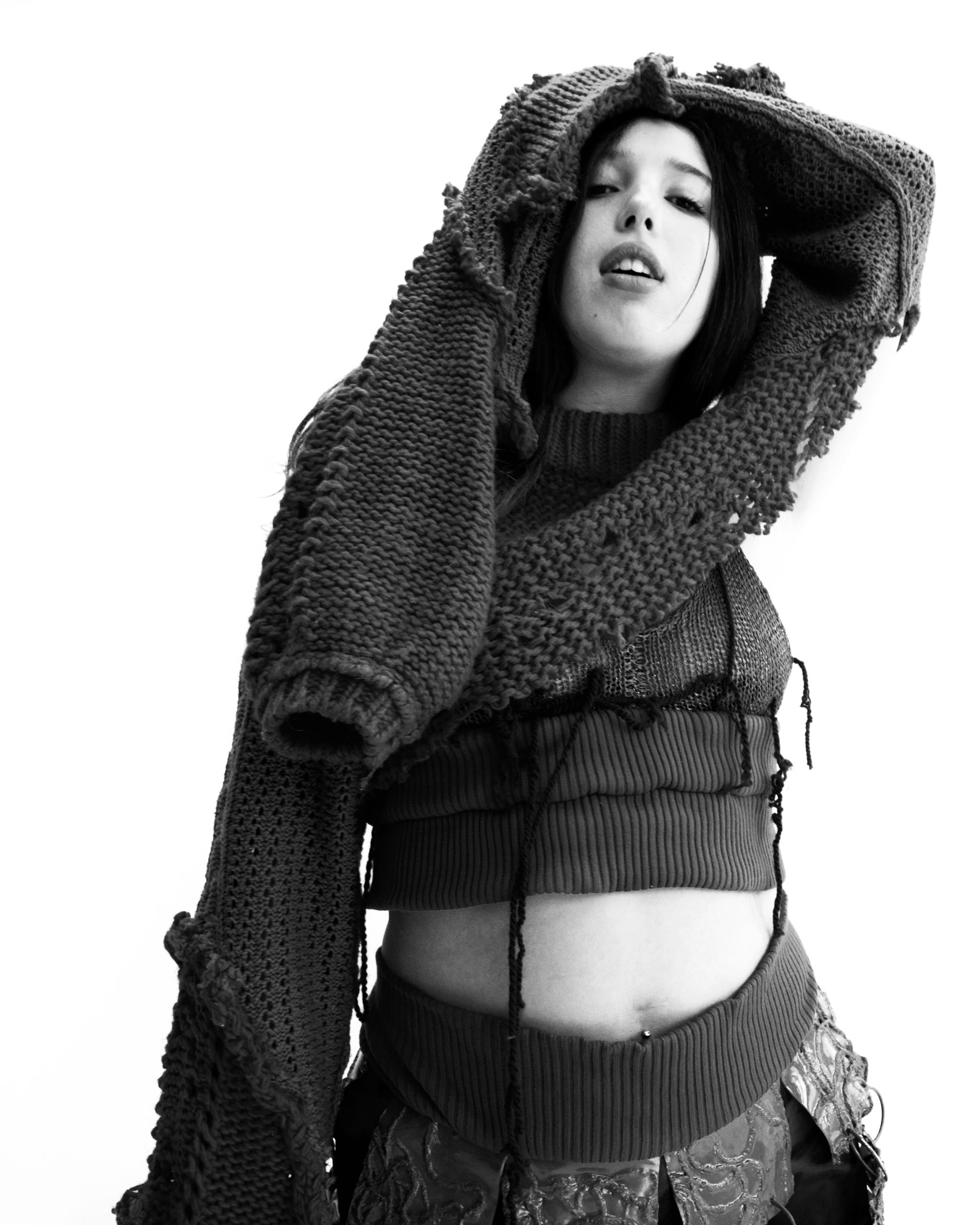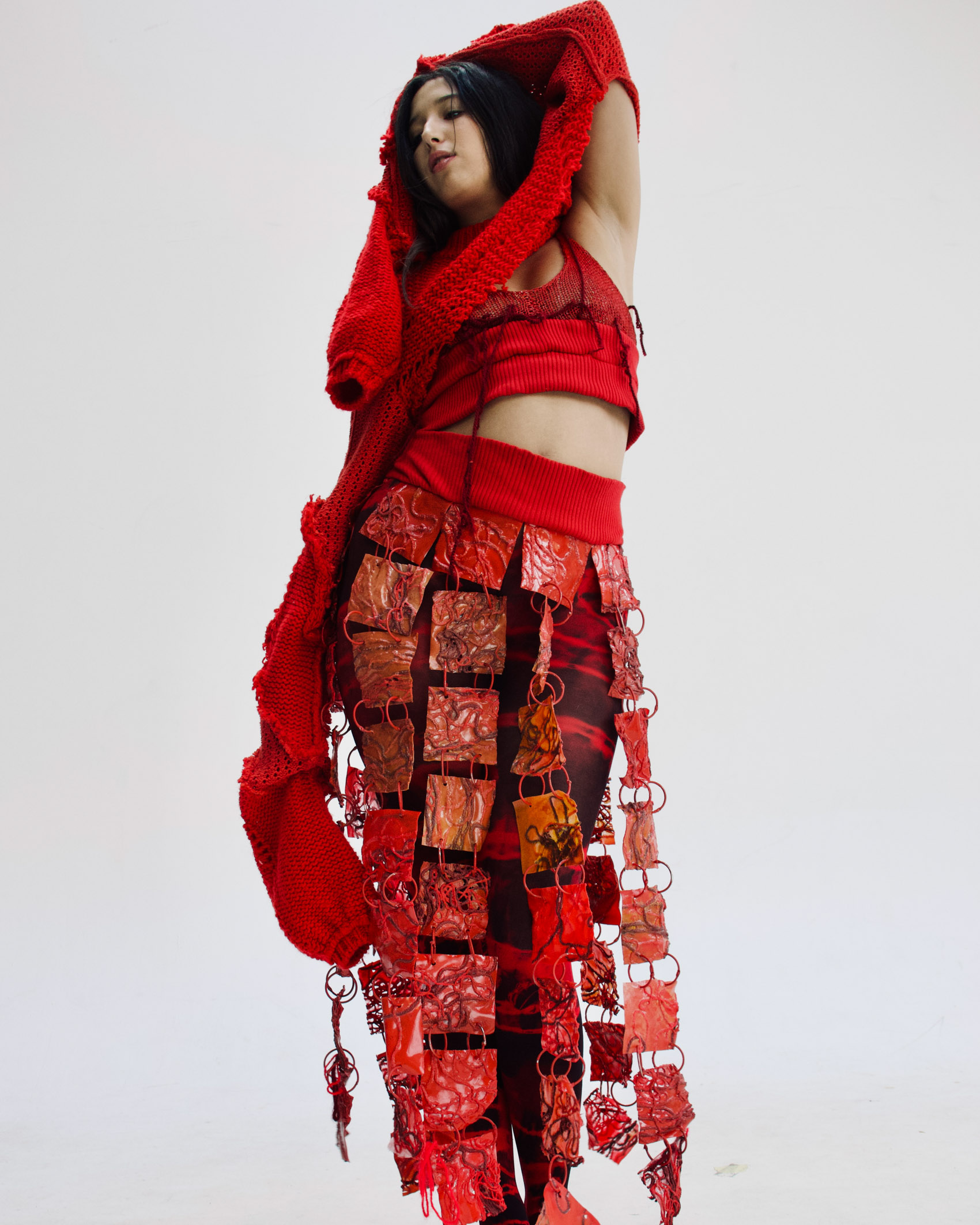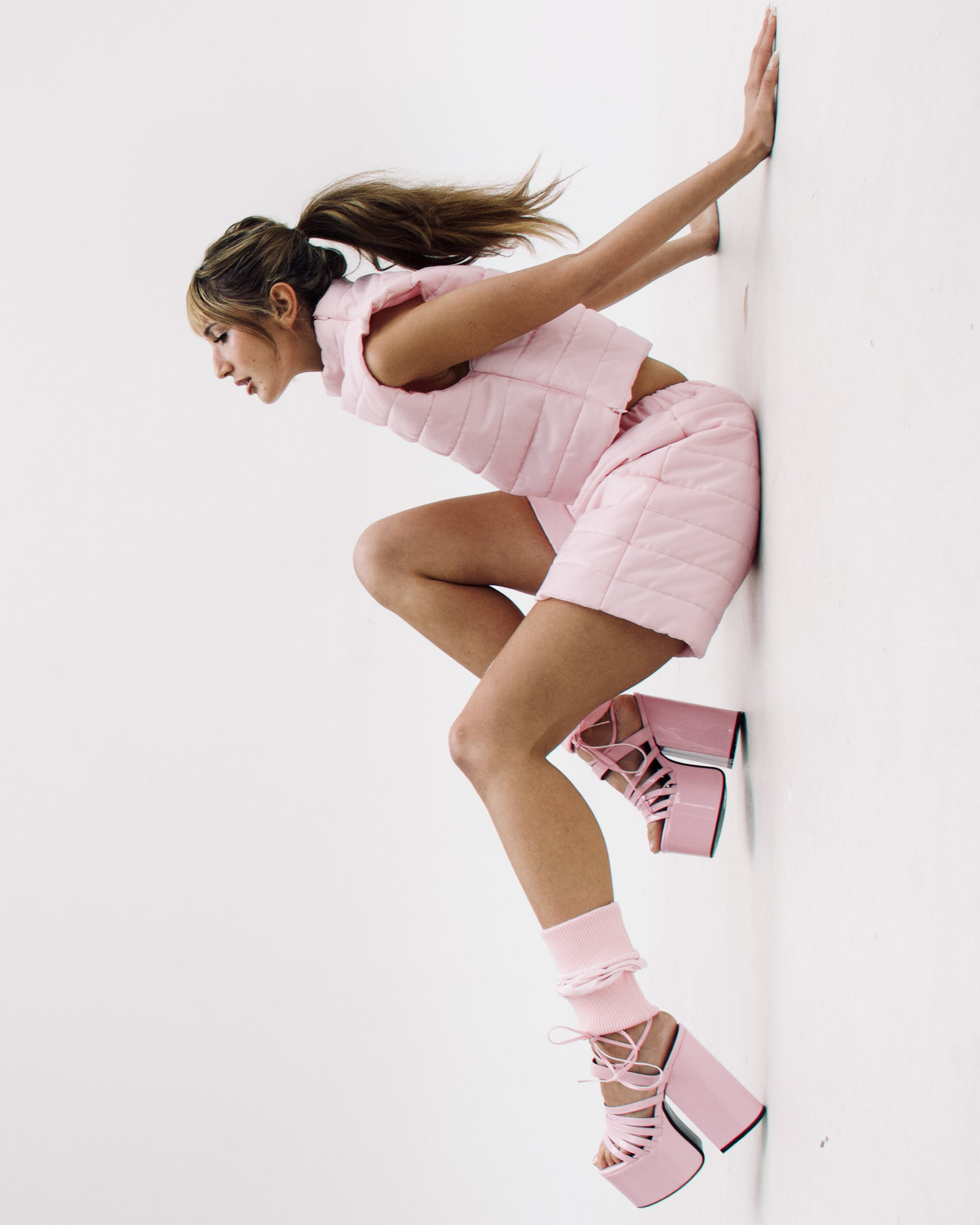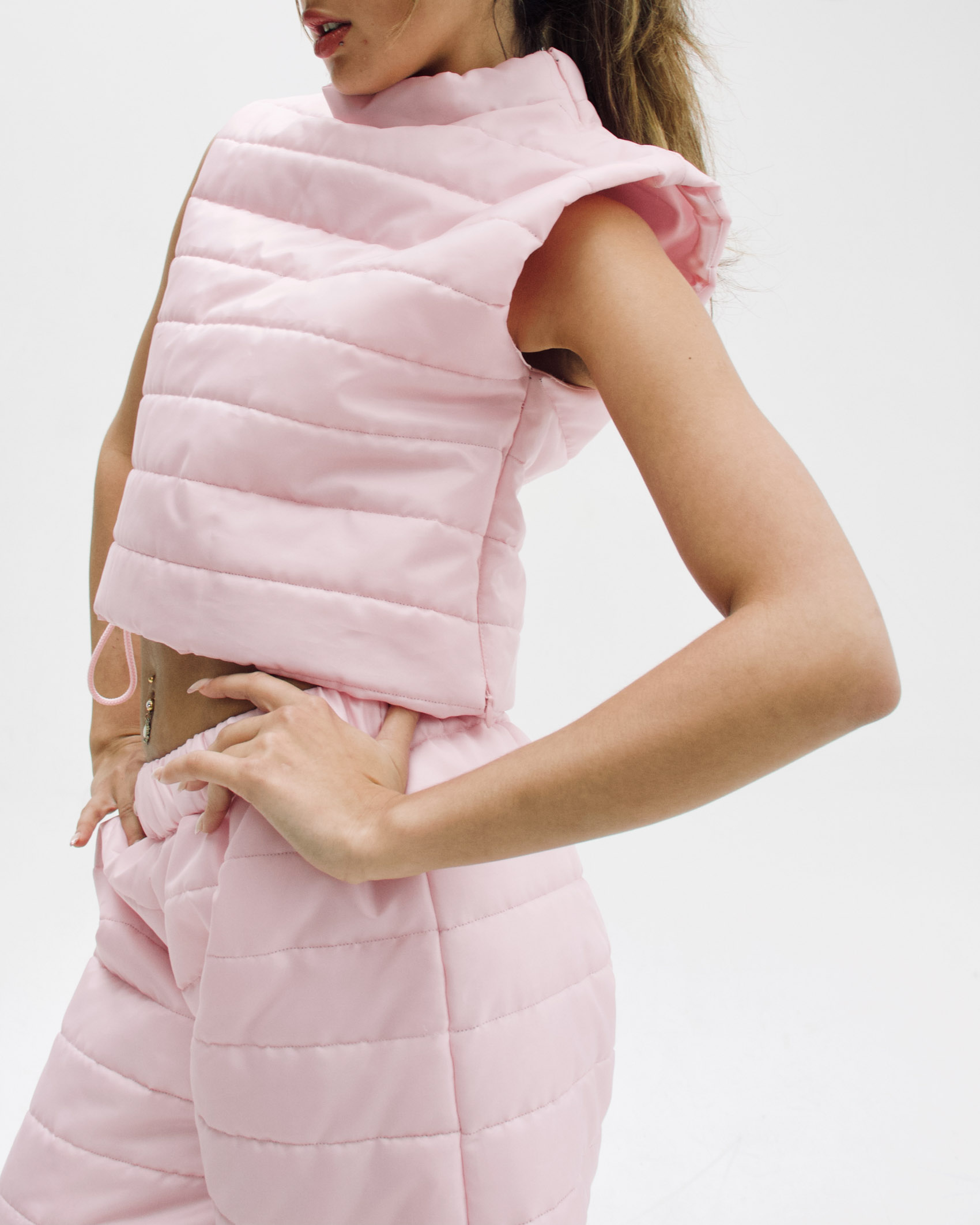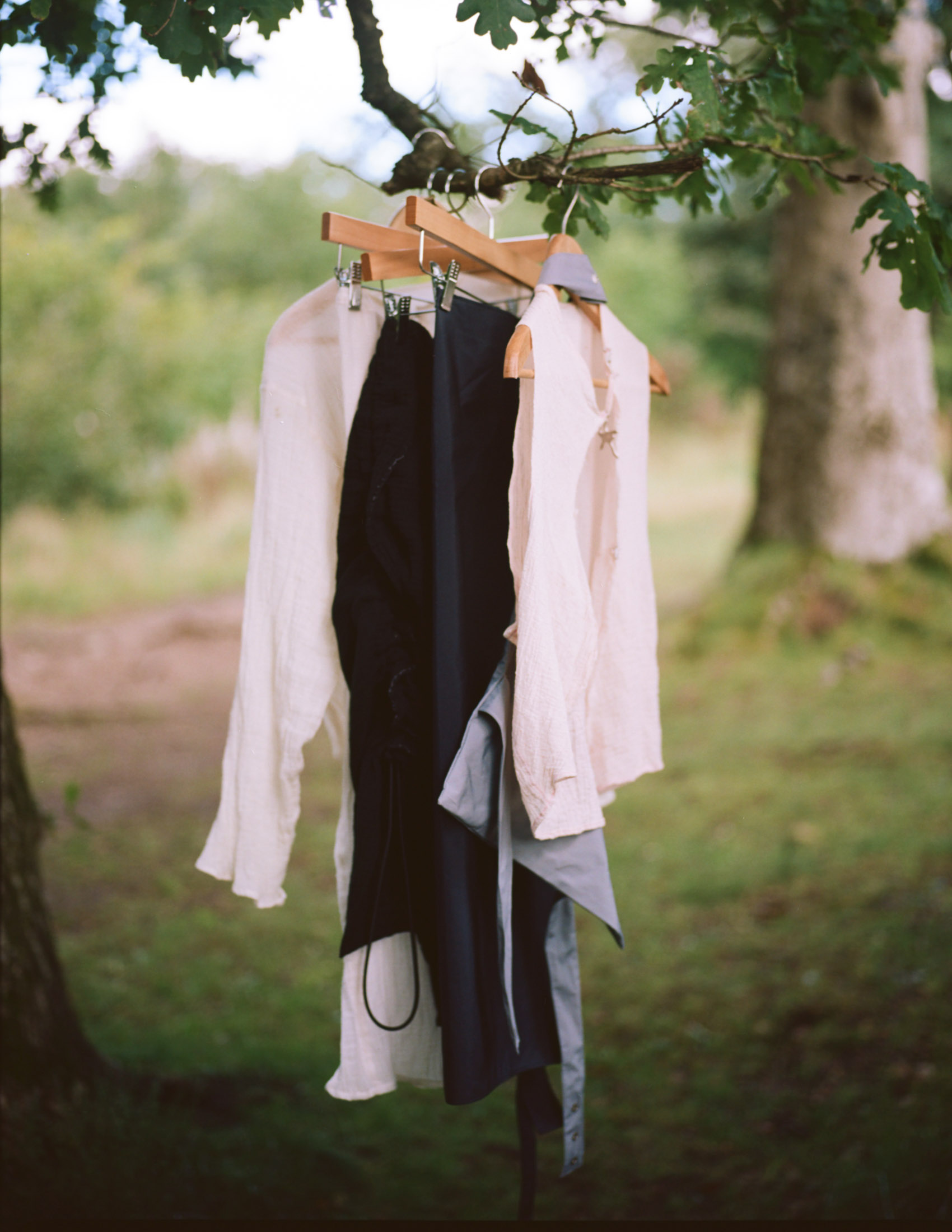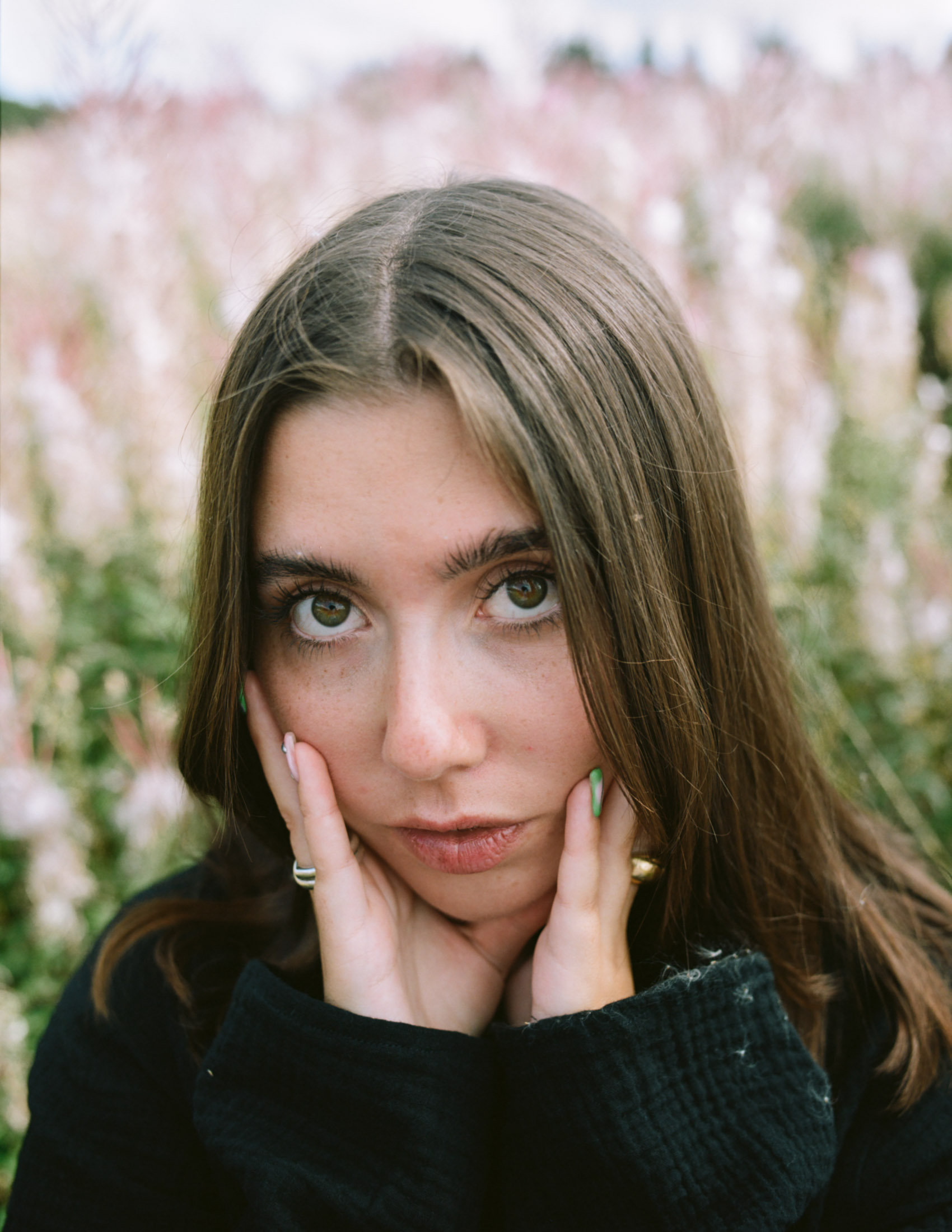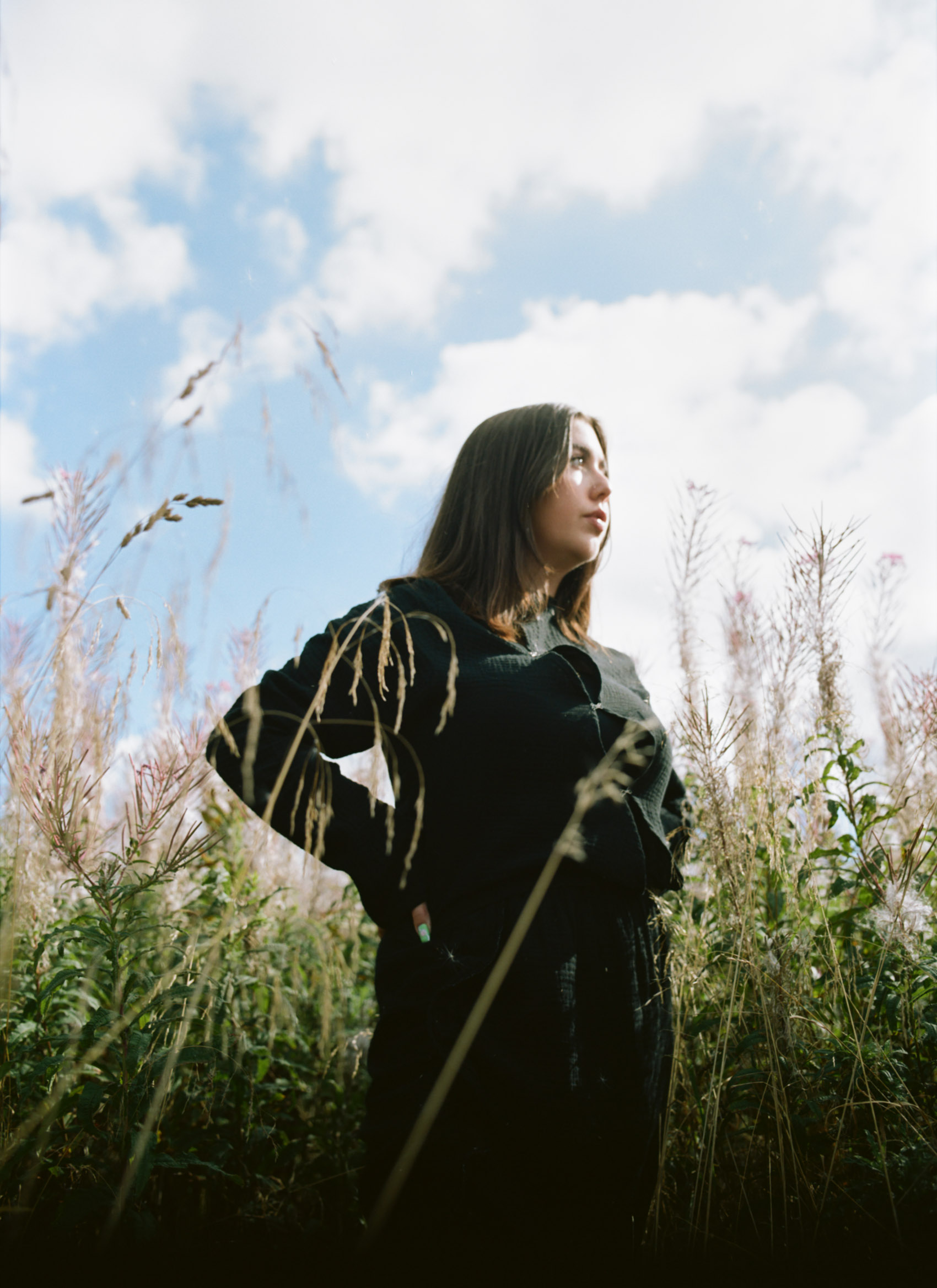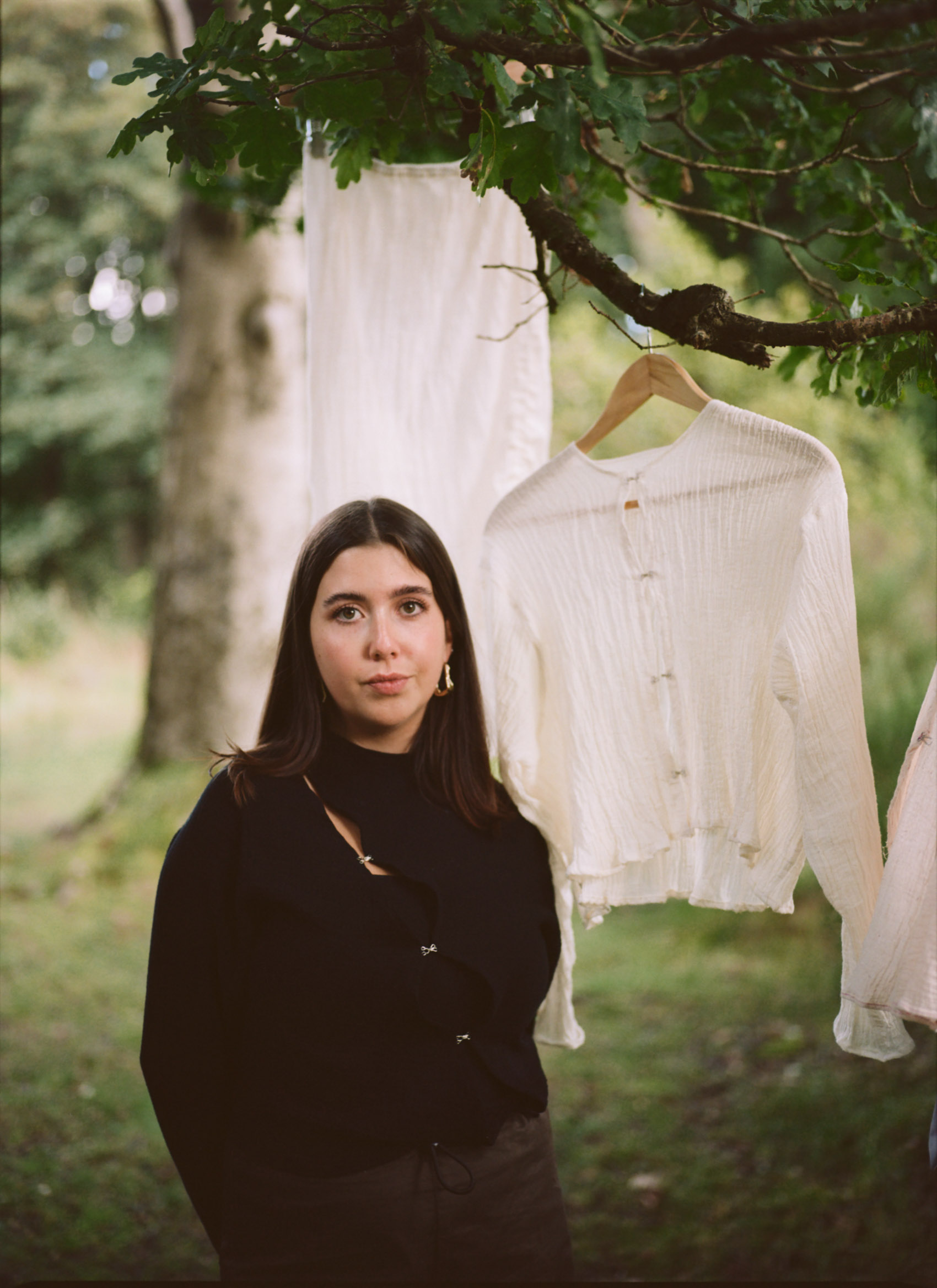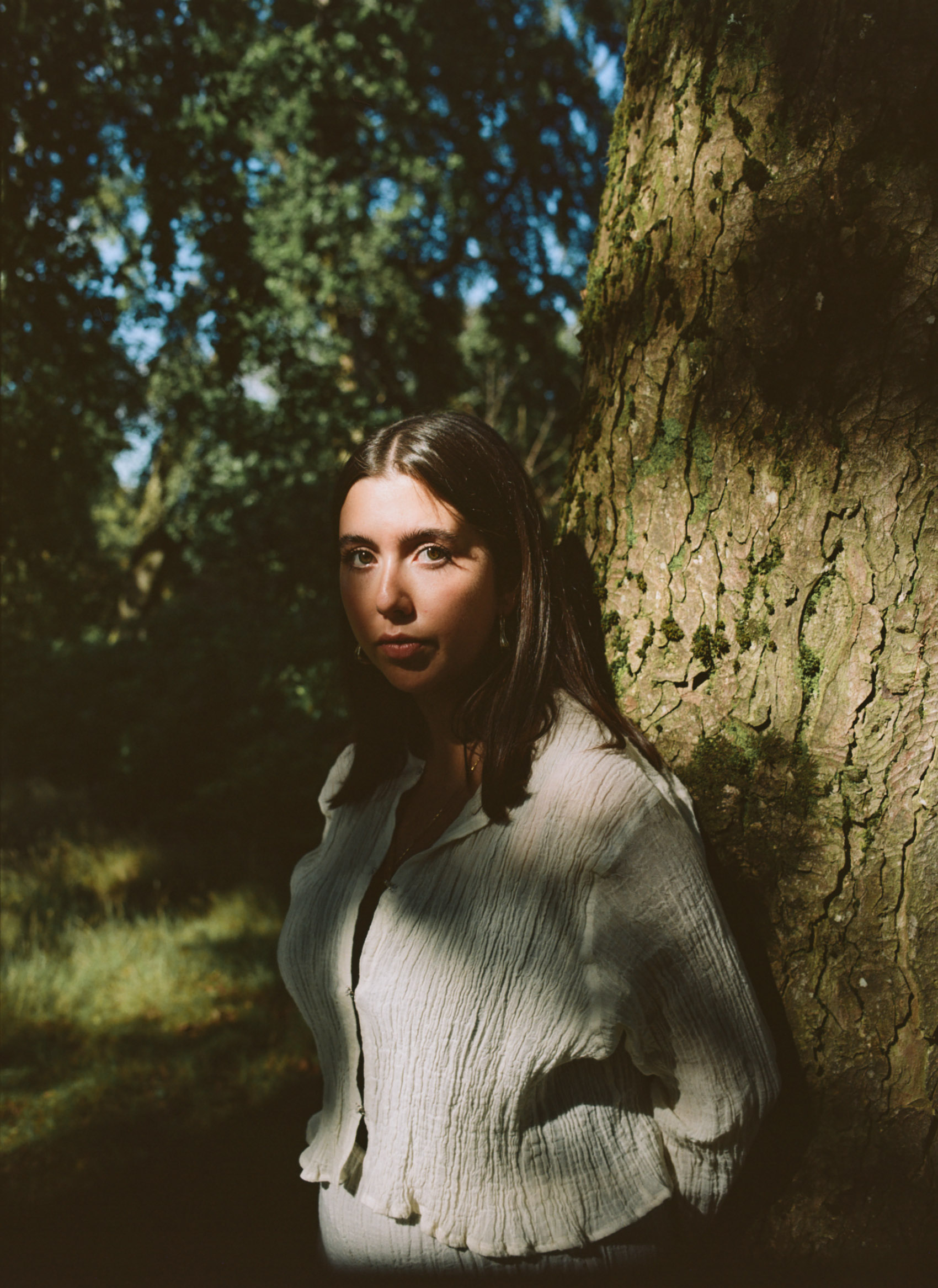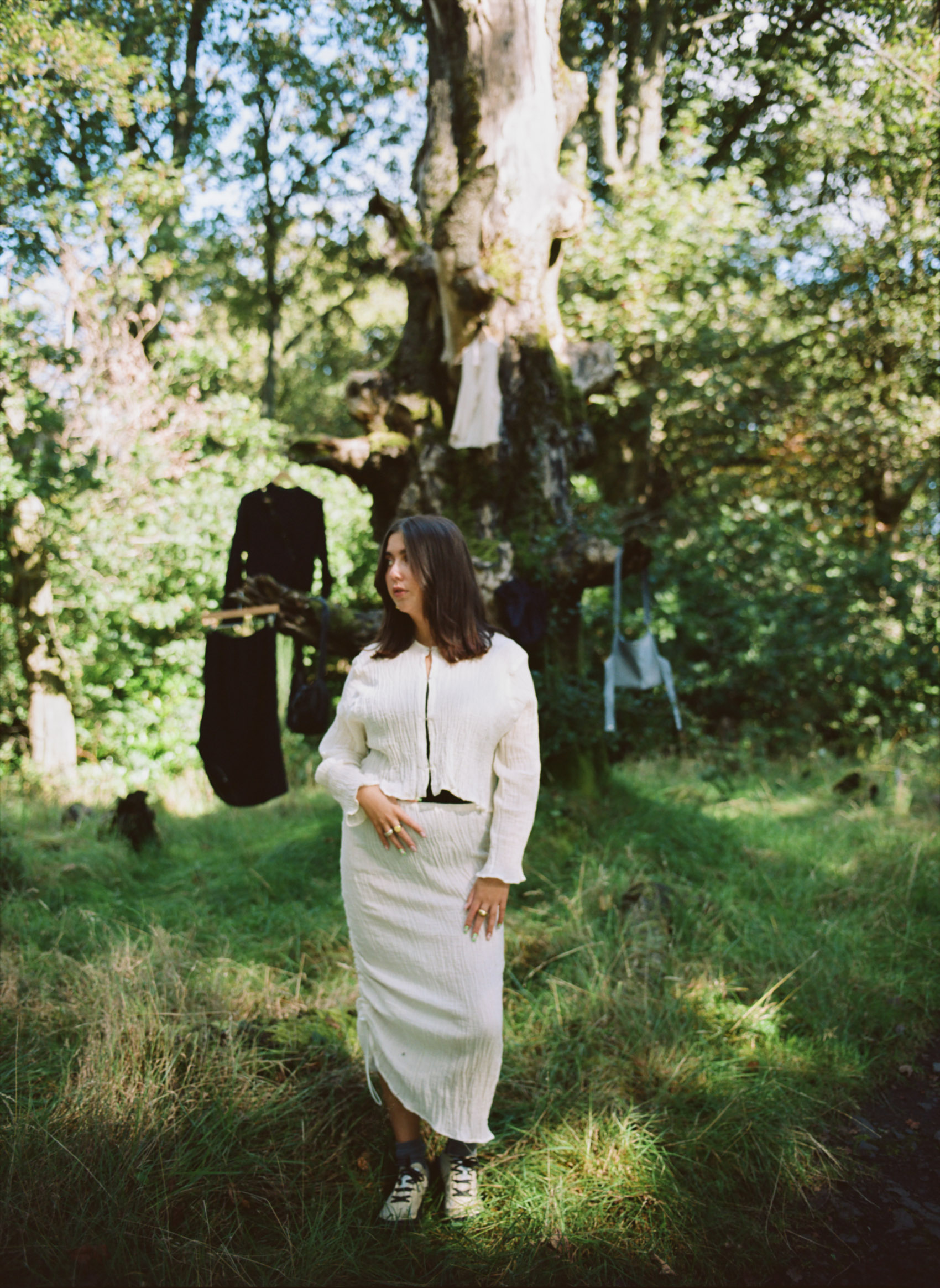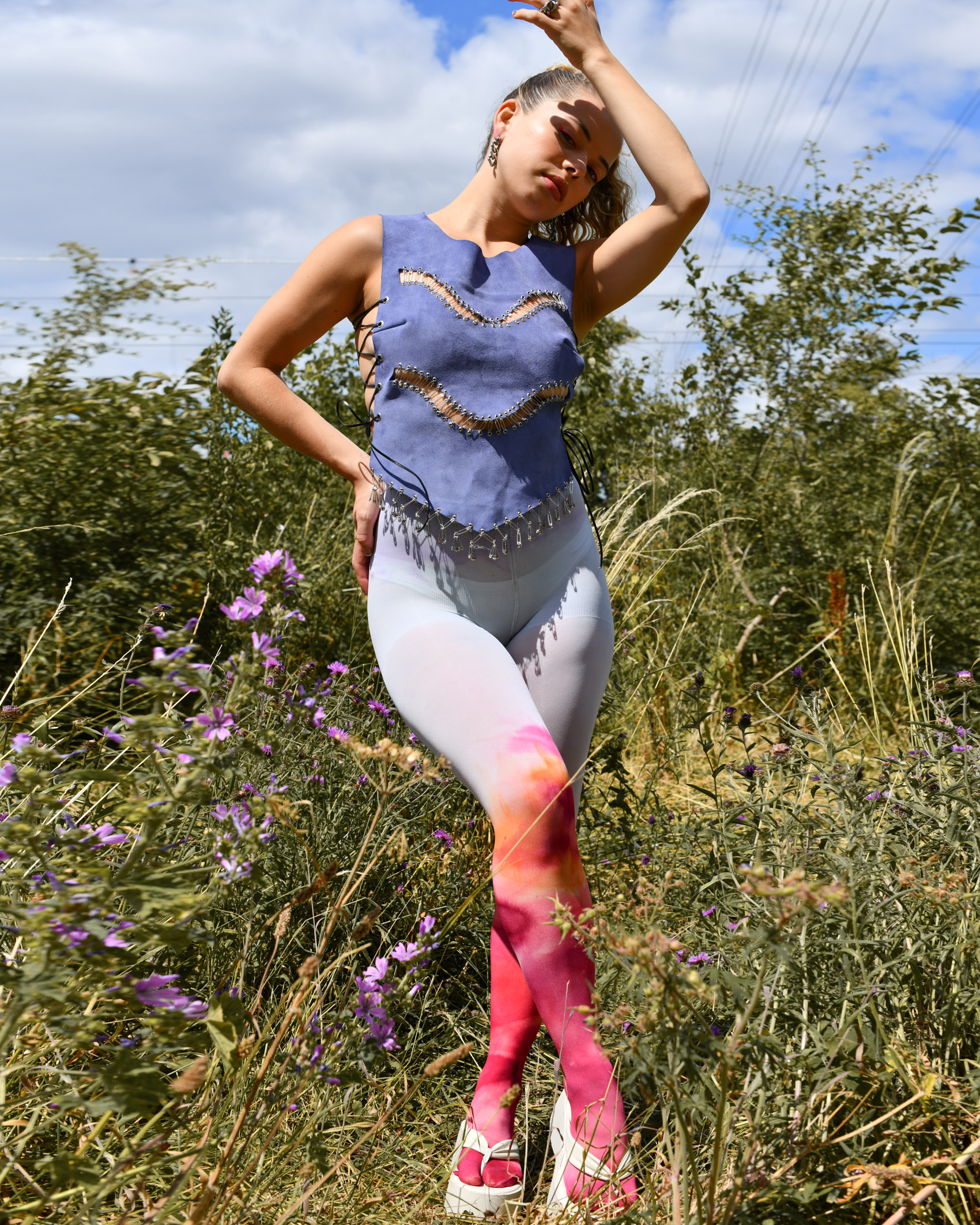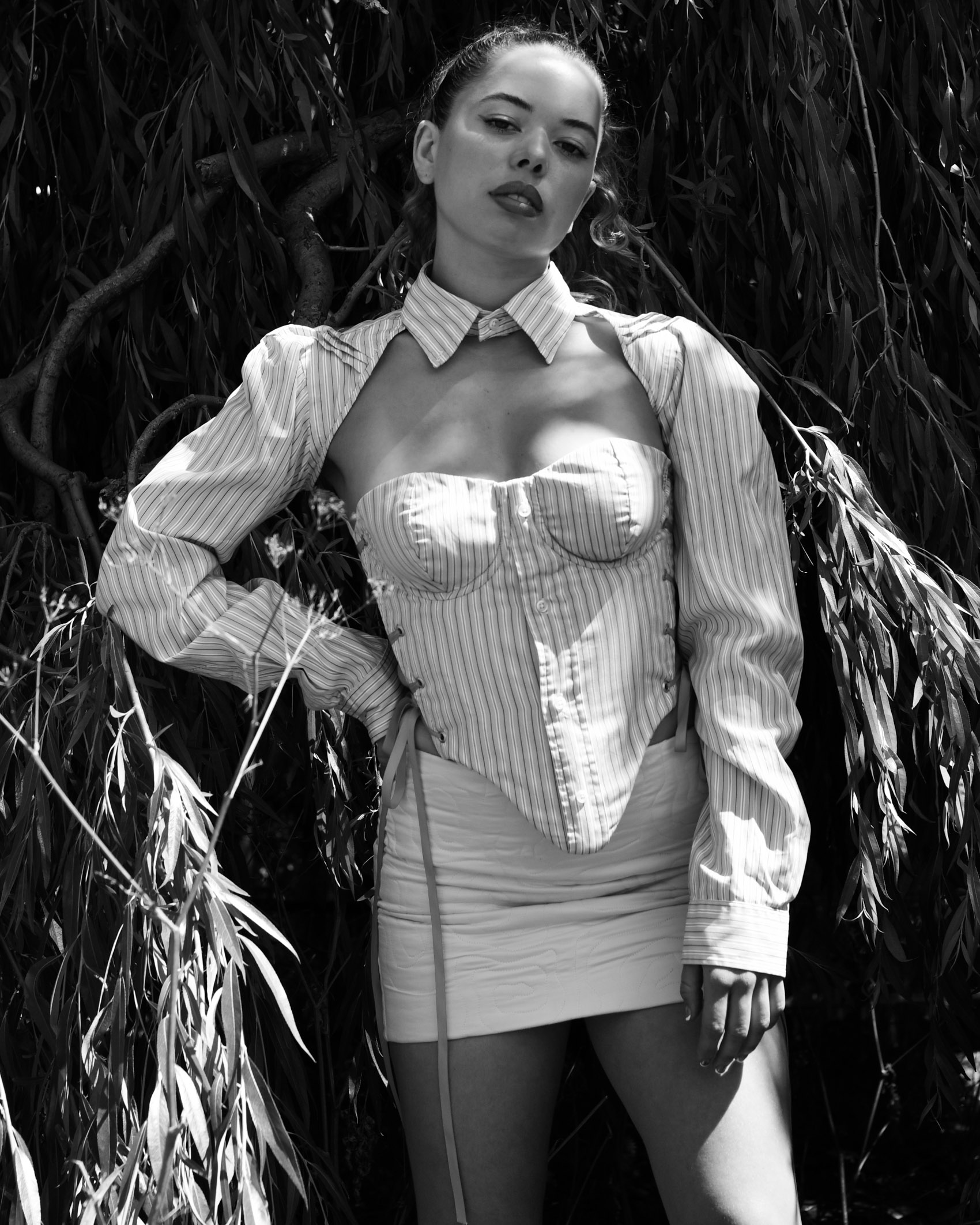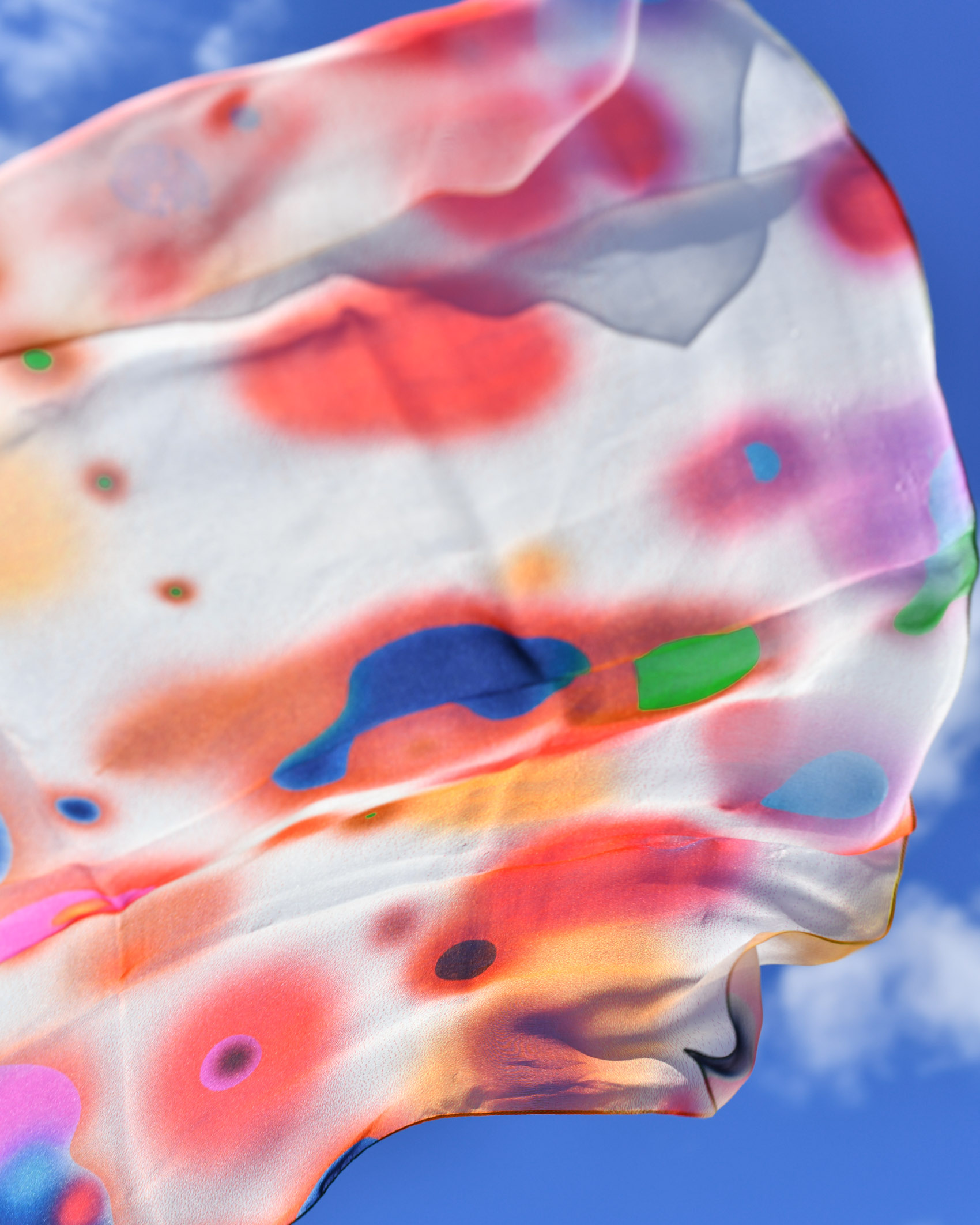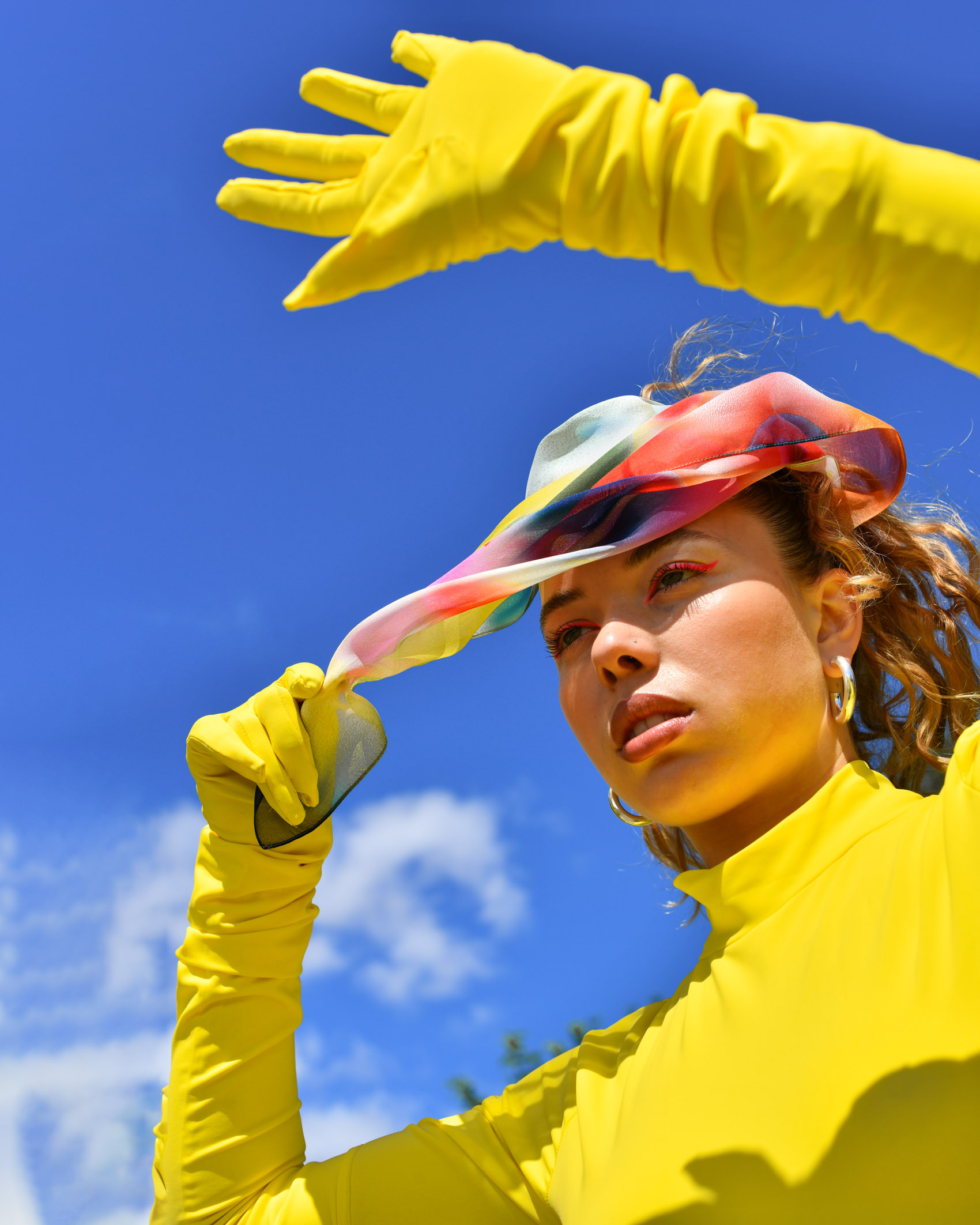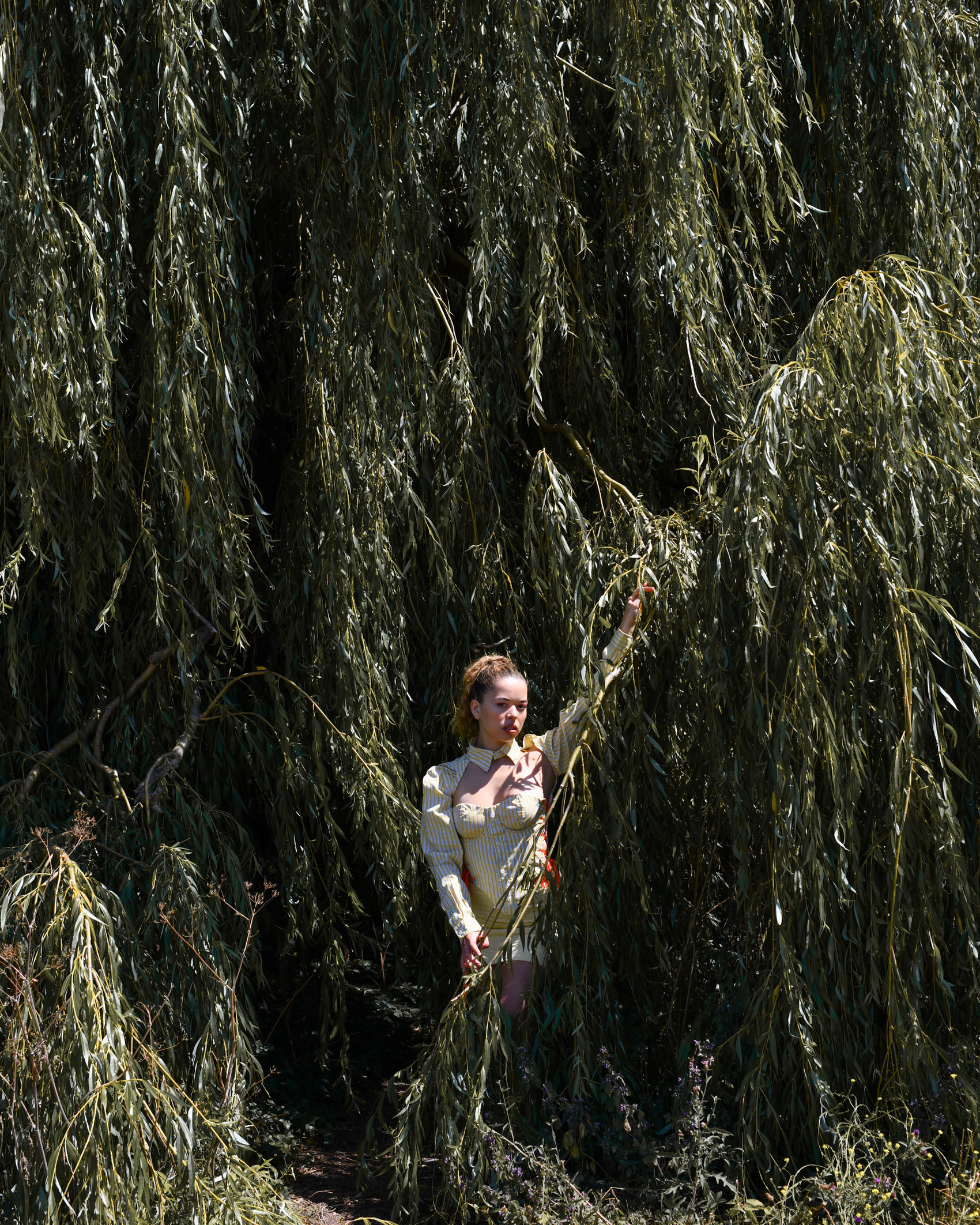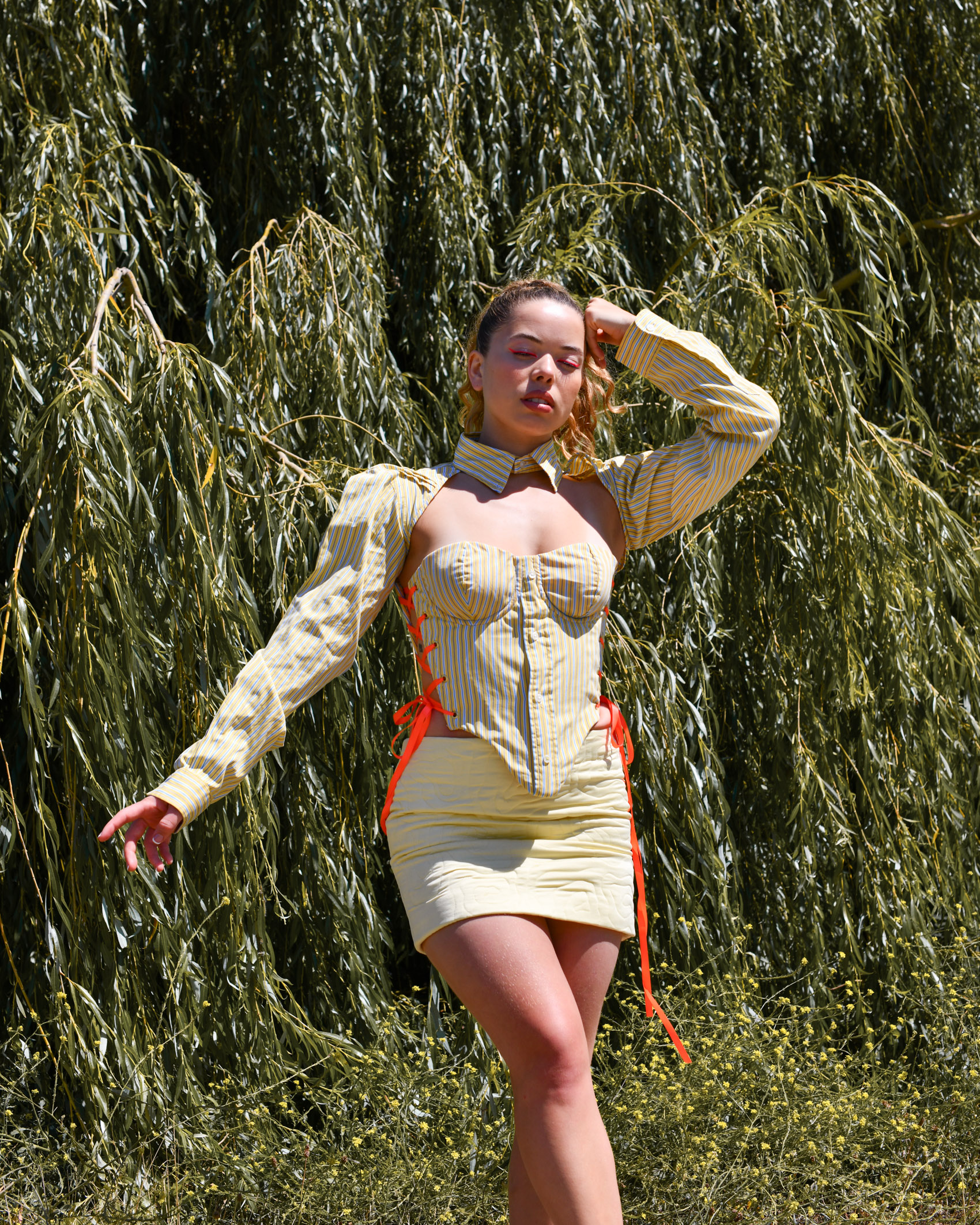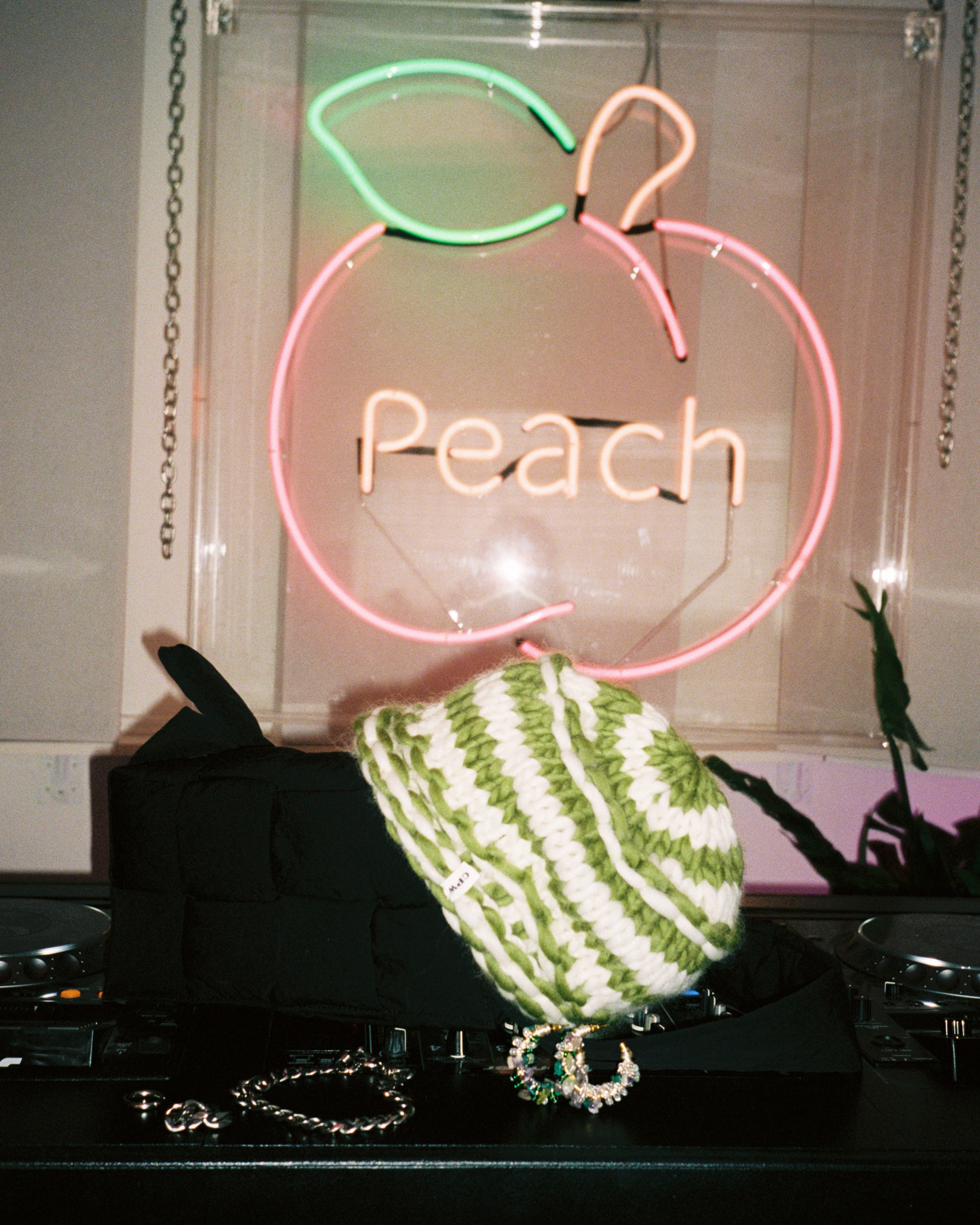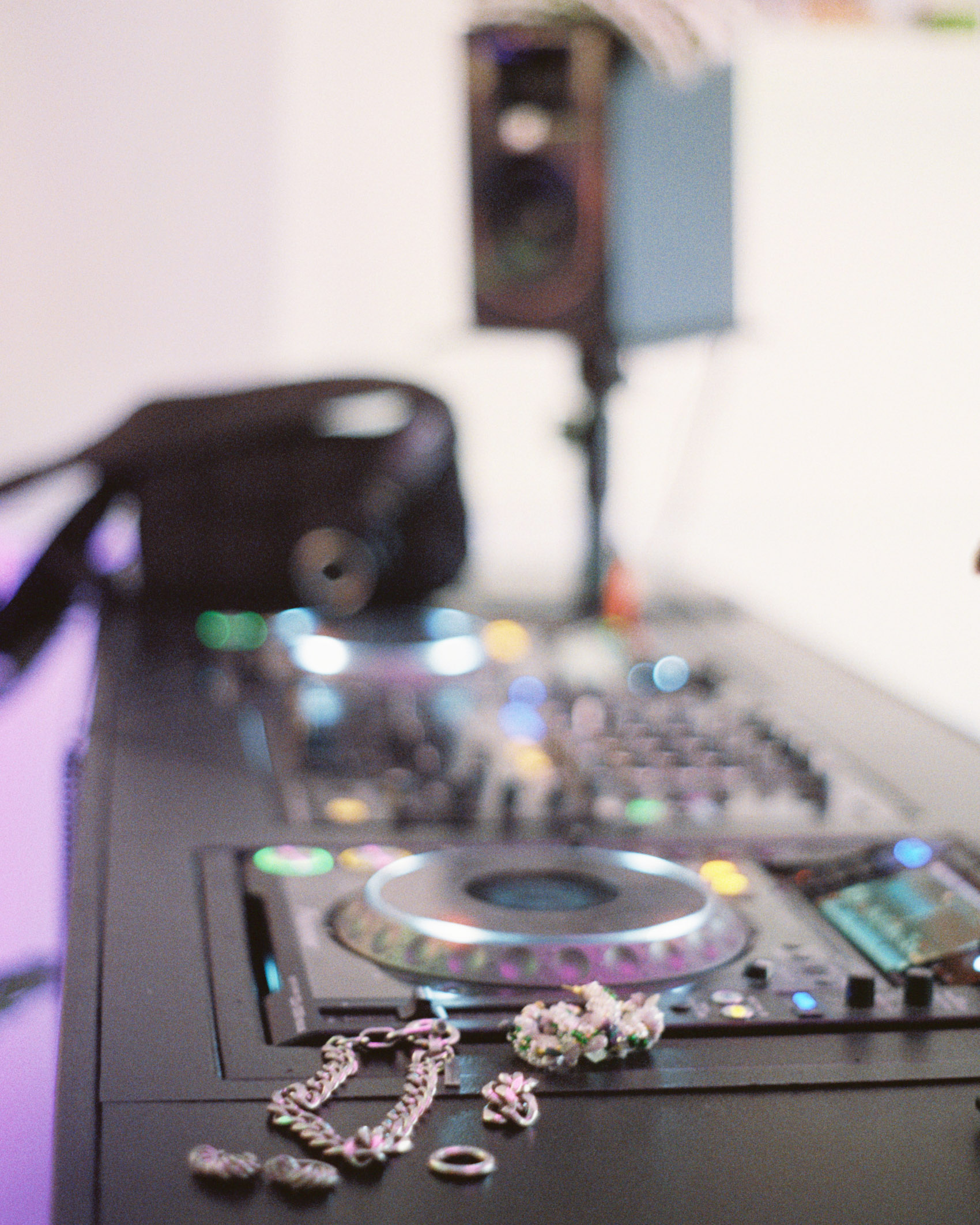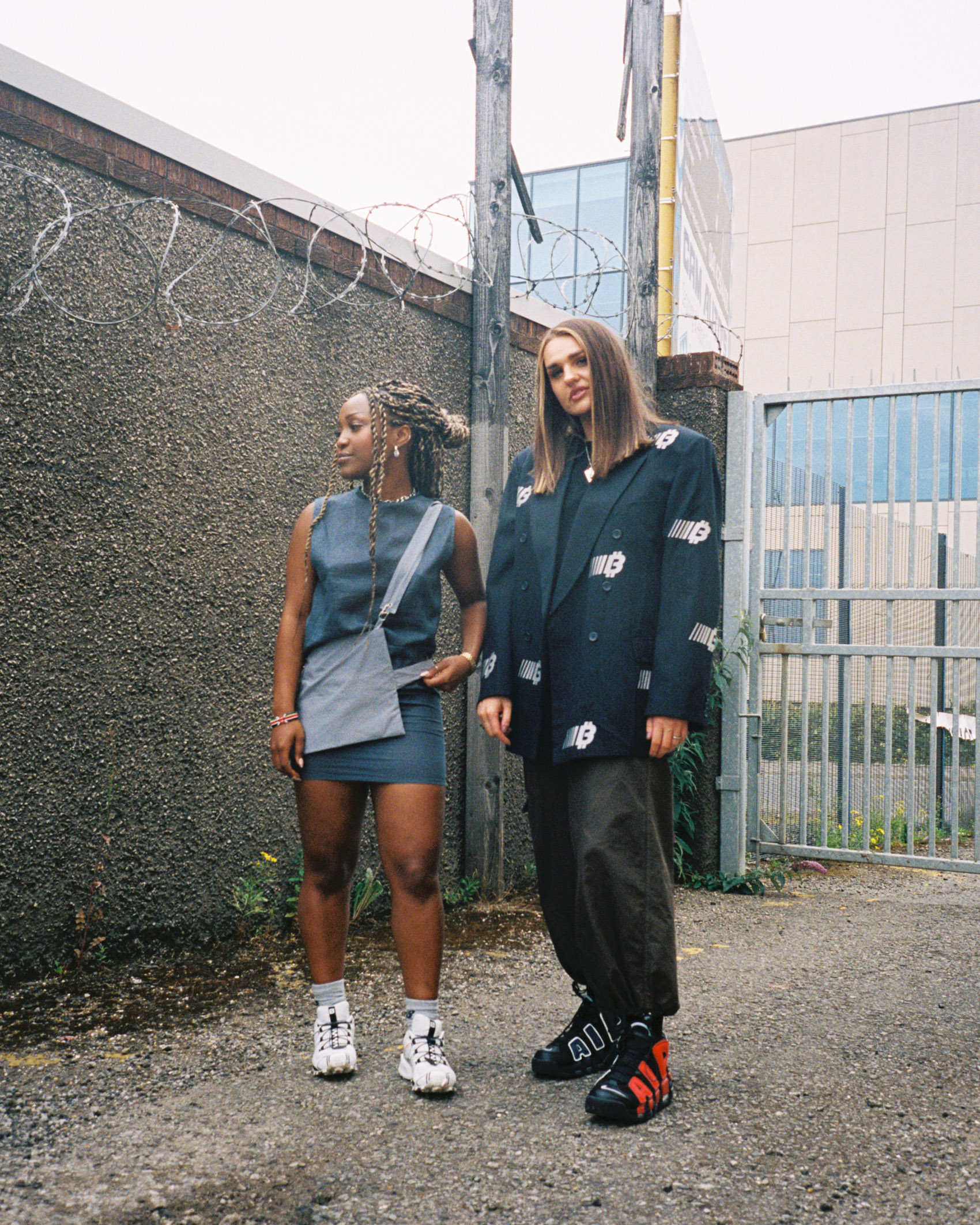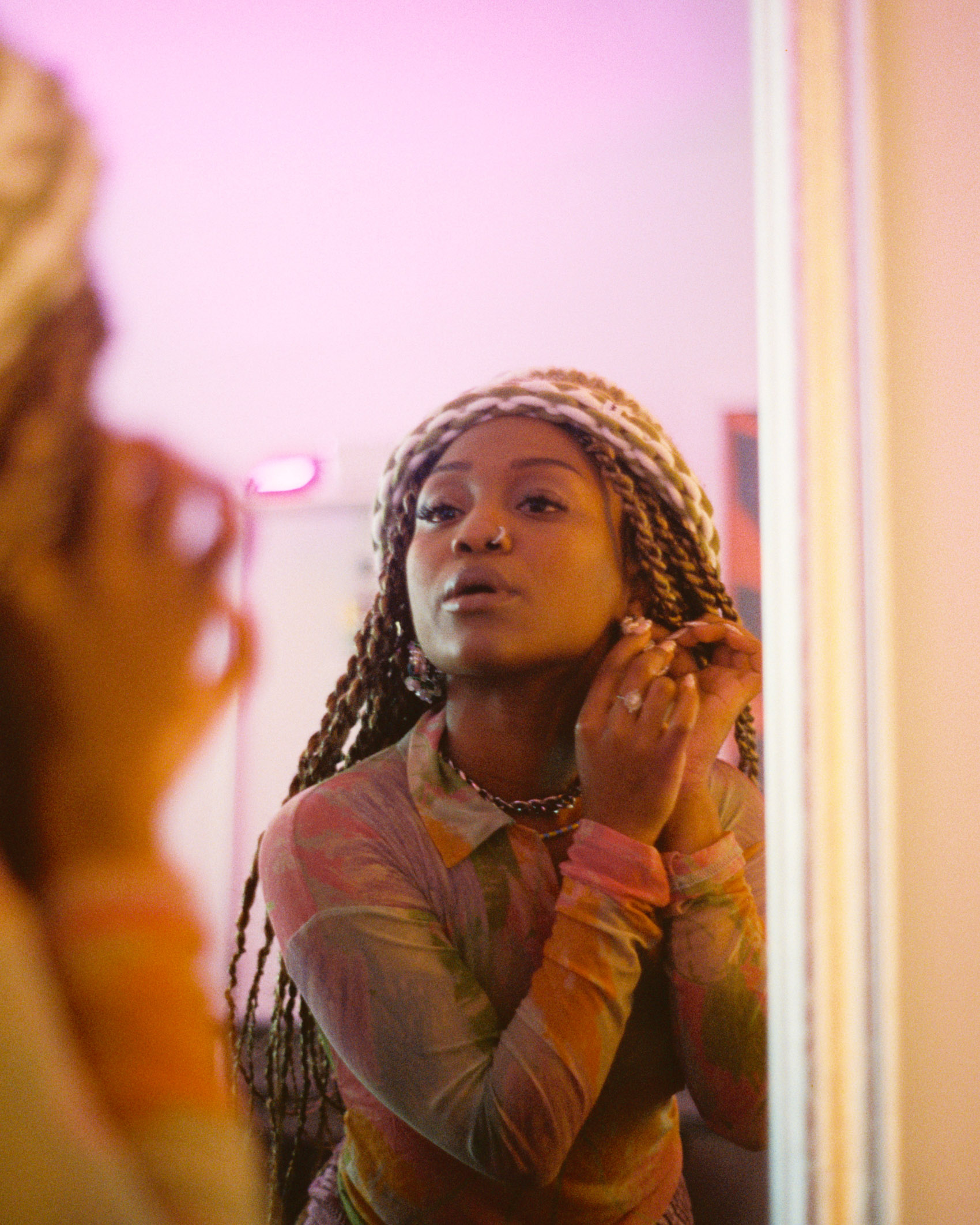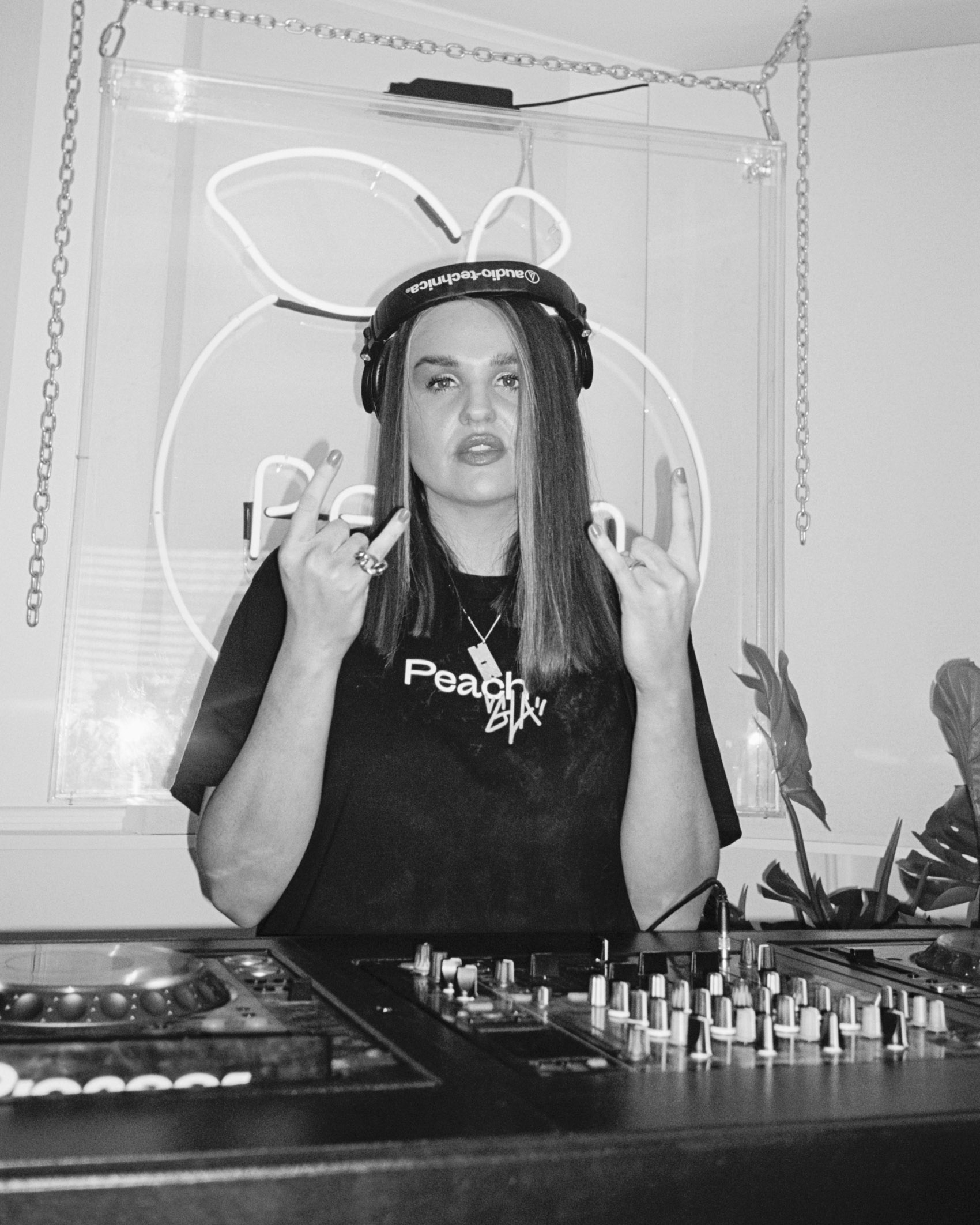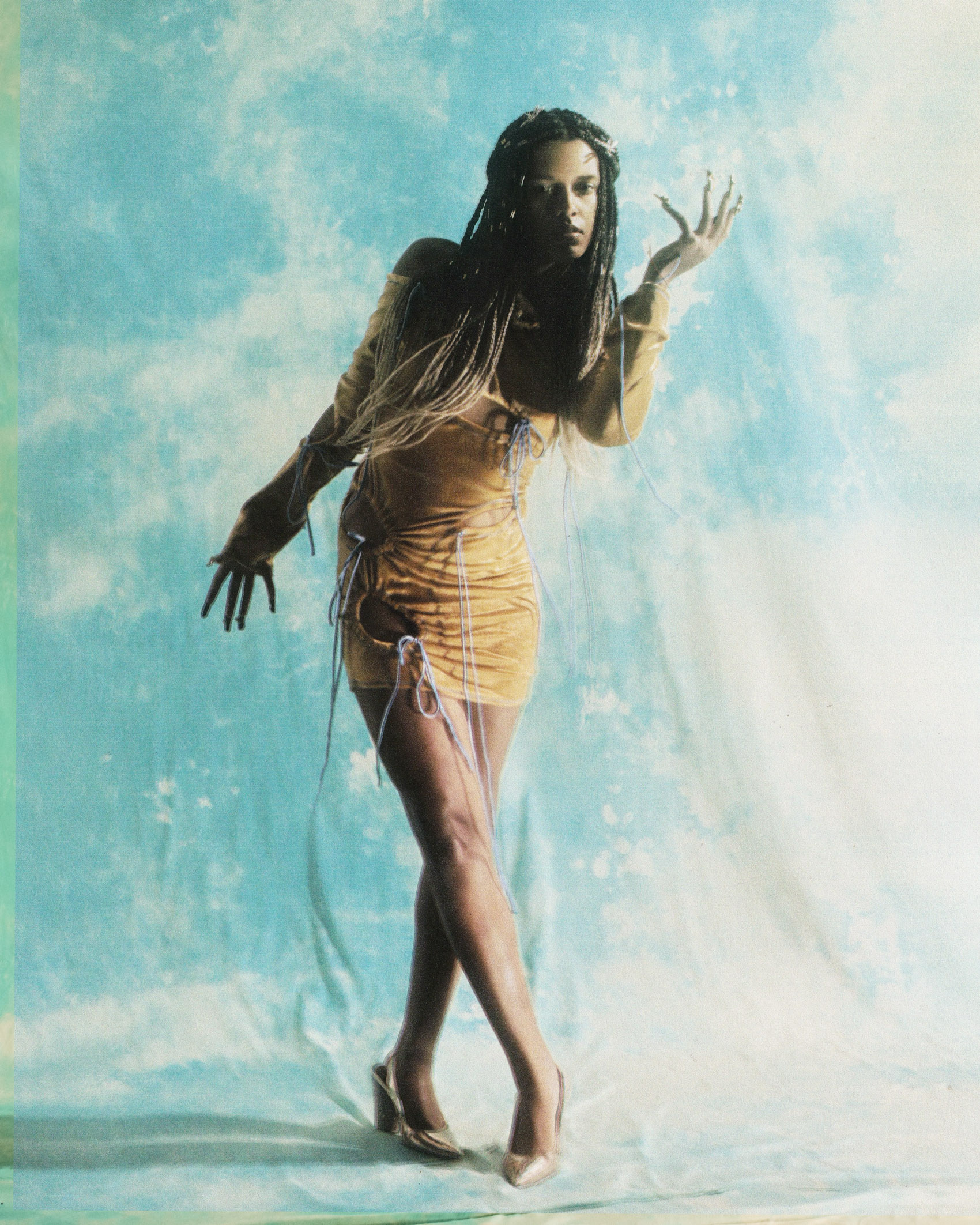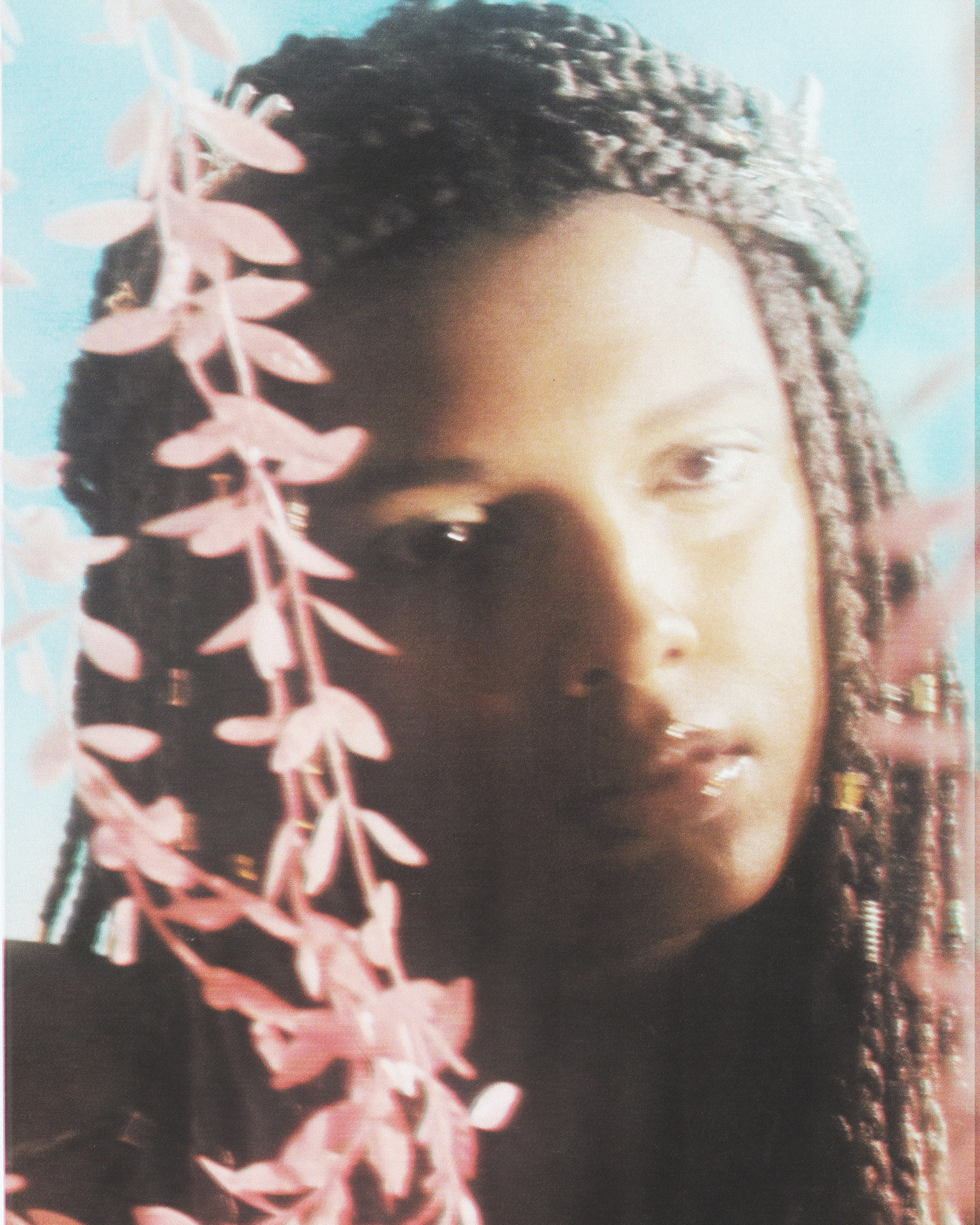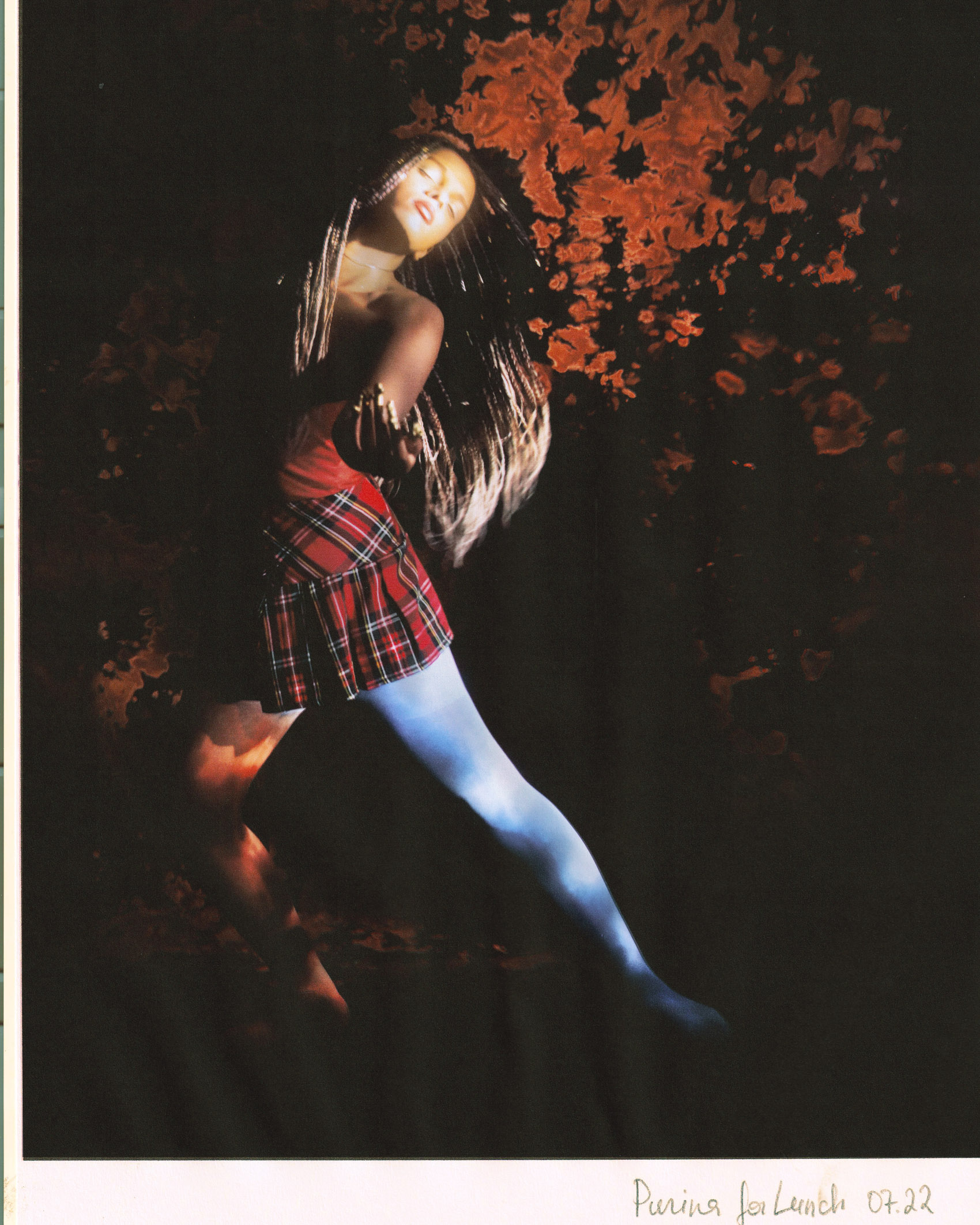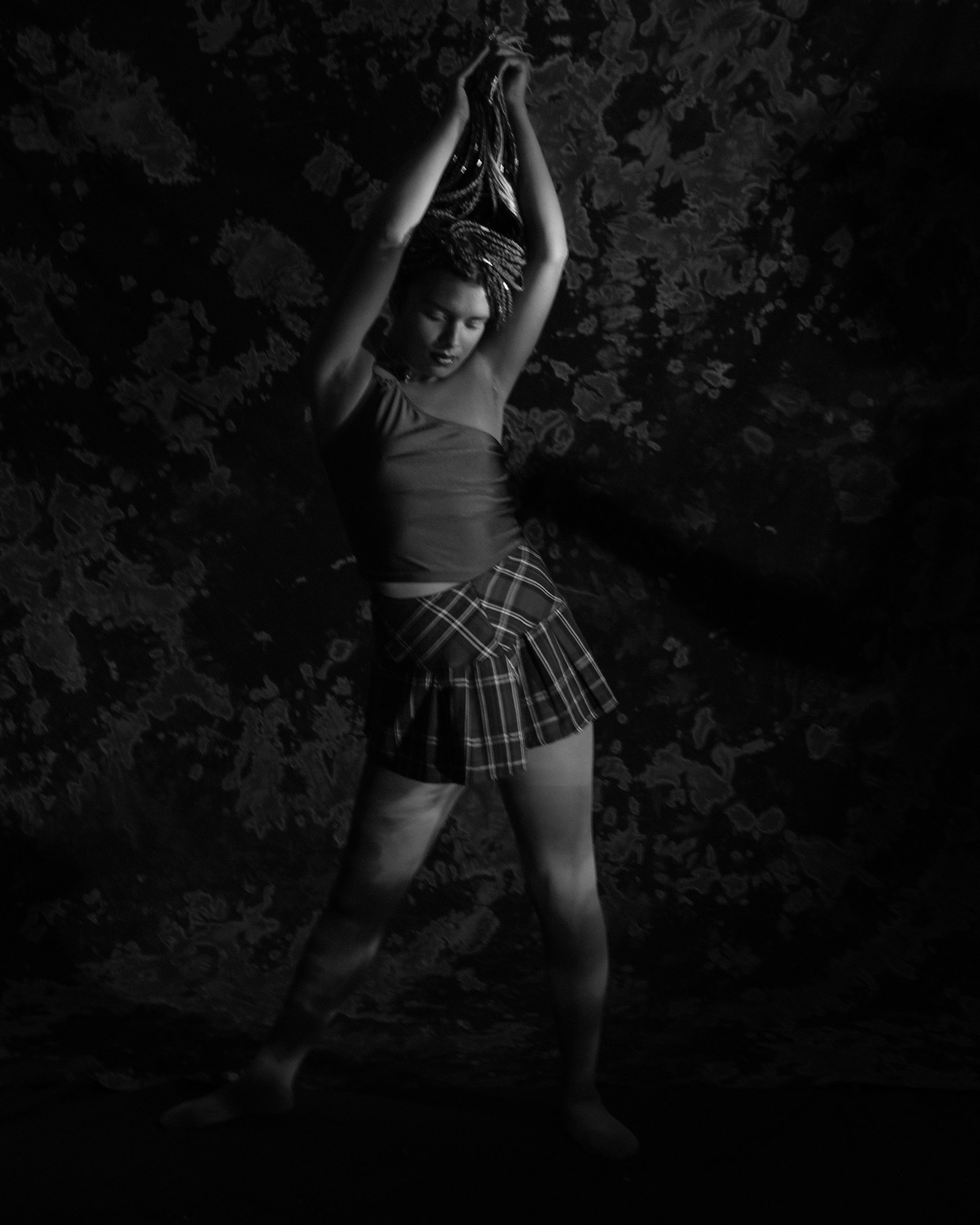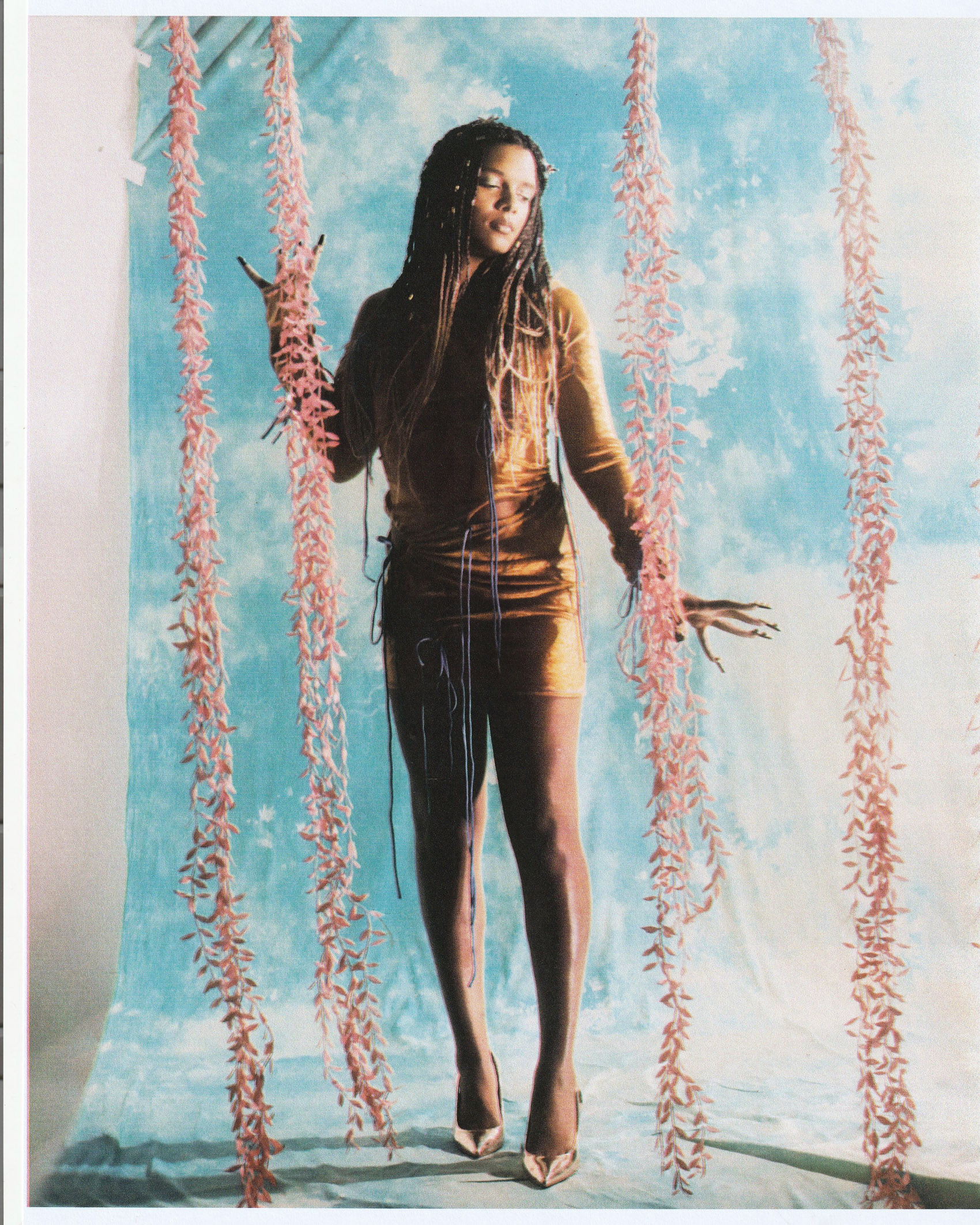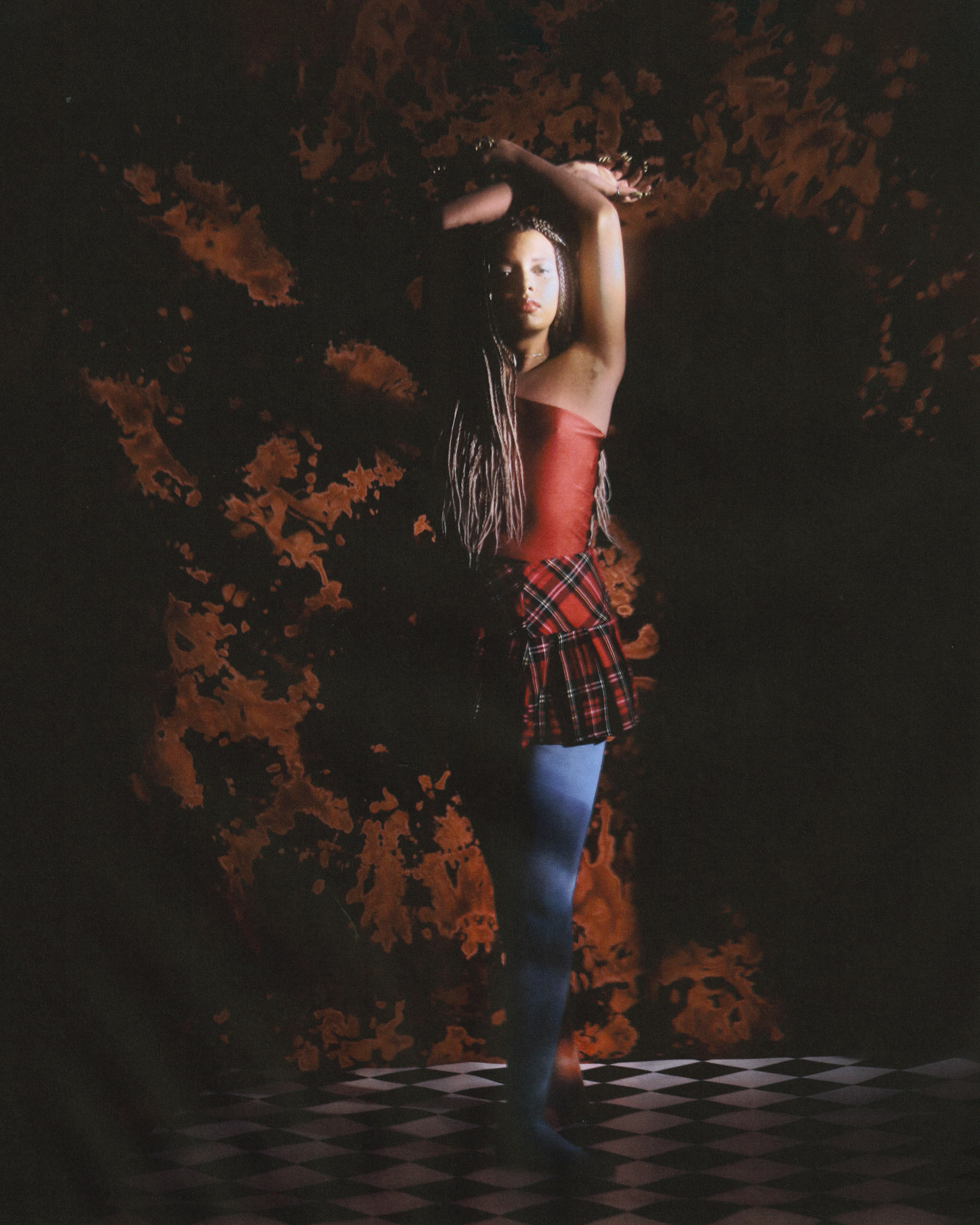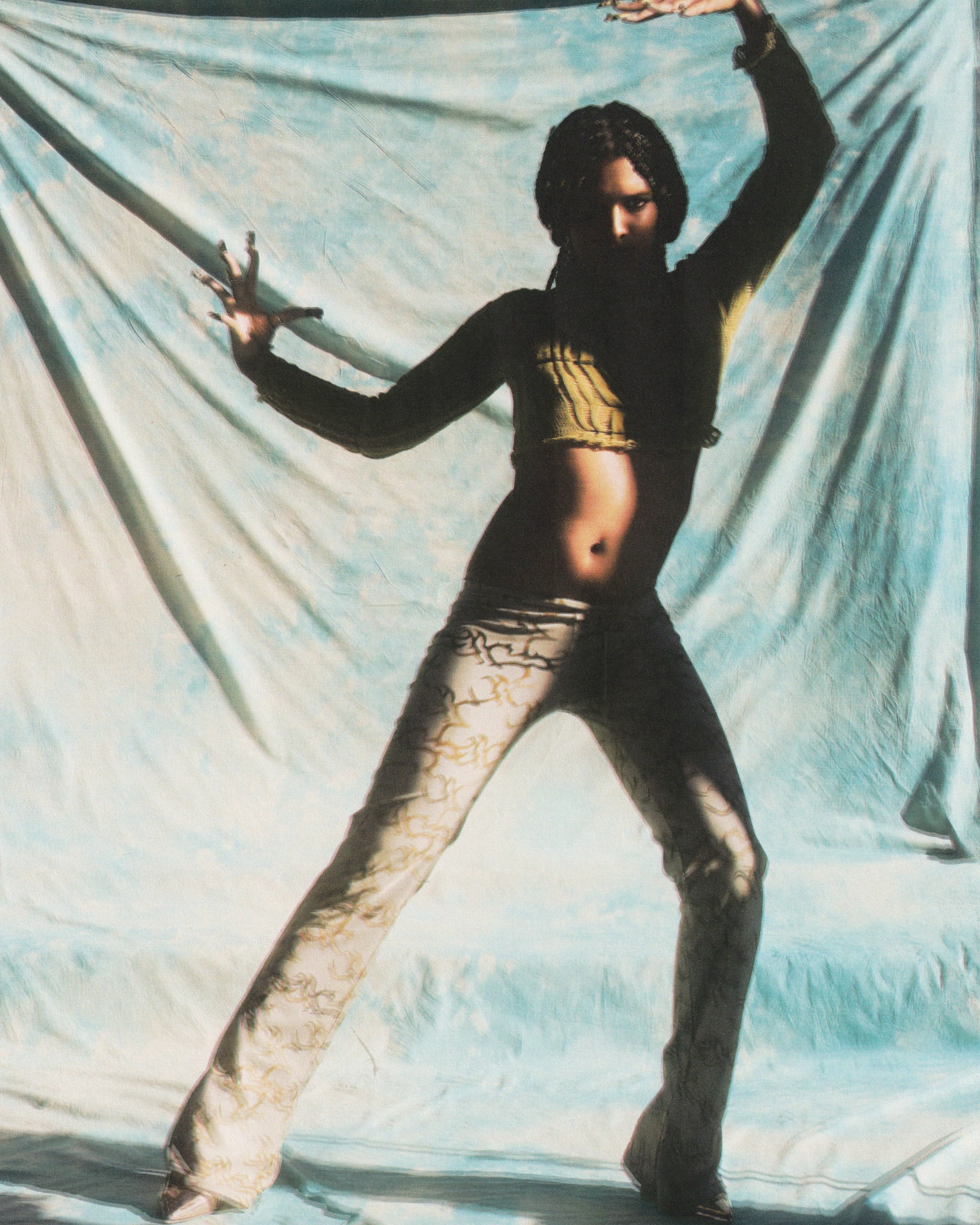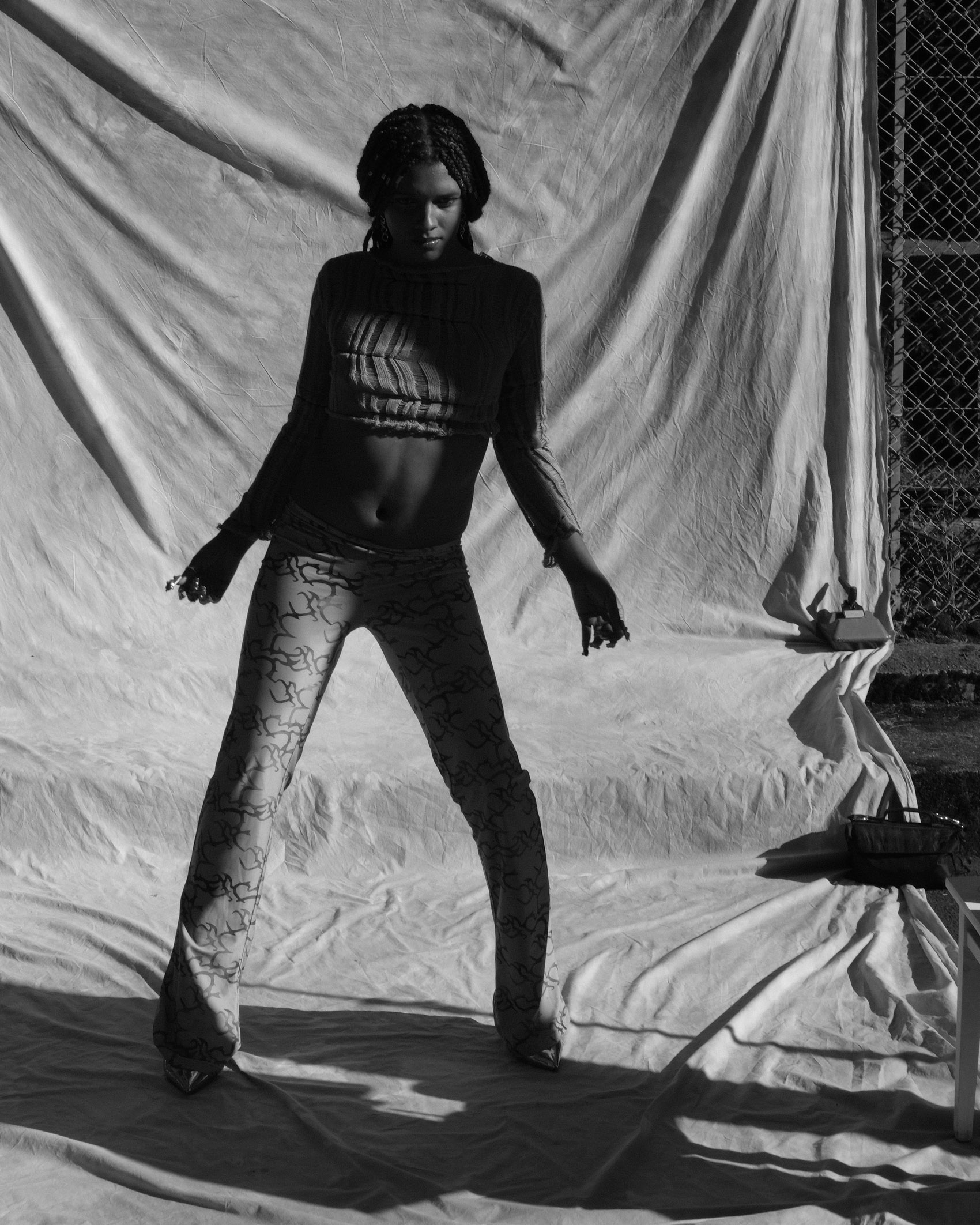IN TALKS with NIKHITA
28.09.23
Photography: Kate McMahon
Styling and words: Graham Peacock
Set Design: Isabella Atan
Photo Assistants: Mark McKinlay & Luka Windsor
One listen to Nikhita’s catalogue unmistakably denotes a Scottish star on the rise. In recent months, the Edinburgh-based musician has found herself under the spotlight of BBC Scotland Introducing, and landed a place on BBC Asian Network’s Artist of the Week. With a voice that cooly moves between hypnotic and soulful, Nikhita has been turning heads with a string of single releases and performances in her home city and beyond.
The musician’s influences are as extensive as her subject matter. R&B, dance, and soul provide the framework in which Nikhita explores family struggles and selfhood, mythology and relationships. It’s authentic and eclectic, moving and deeply reflective. It’s unsurprising, then, that with only a few single releases, Nikhita has managed to capture the attention of Scotland’s music scene, which waits in anticipation for the new music she talks of excitedly and passionately during our shoot.
Nigh on the release of this material, Nikhita joins us on a walk through the forest. Moving between cavernous rocks and overgrown shrubs, and as the sun sets, the Golden Child singer sinks comfortably into the setting, discussing her practice and teasing what’s to come. After a day spent with her, the appeal is clear. Nikhita embodies the best of the Scottish creative landscape – a love for what she does, and a desire to create with those around her.
It was so lovely working with you on the shoot, how did you find it?
I loved it! This shoot is definitely one of my favourites I’ve ever taken part in. It was so inspiring to feel the amount of thought that was put into every aspect such as the beautiful pieces I had the honour of being styled in, the location, lighting, set design- and the overall vibe of working with such a lovely team of creatives.
When we were planning this shoot we wanted it to feel very ethereal and otherworldly. That’s how your music sounds to us. How do you describe your music?
Ethereal and otherworldly is a great description. The other day my partner asked me if I had a superpower, what would it be? I told him it would be to be a Siren. That mesmerising, spellbinding, dreamy quality is what I like my music to have sonically, as well as telling a story lyrically.
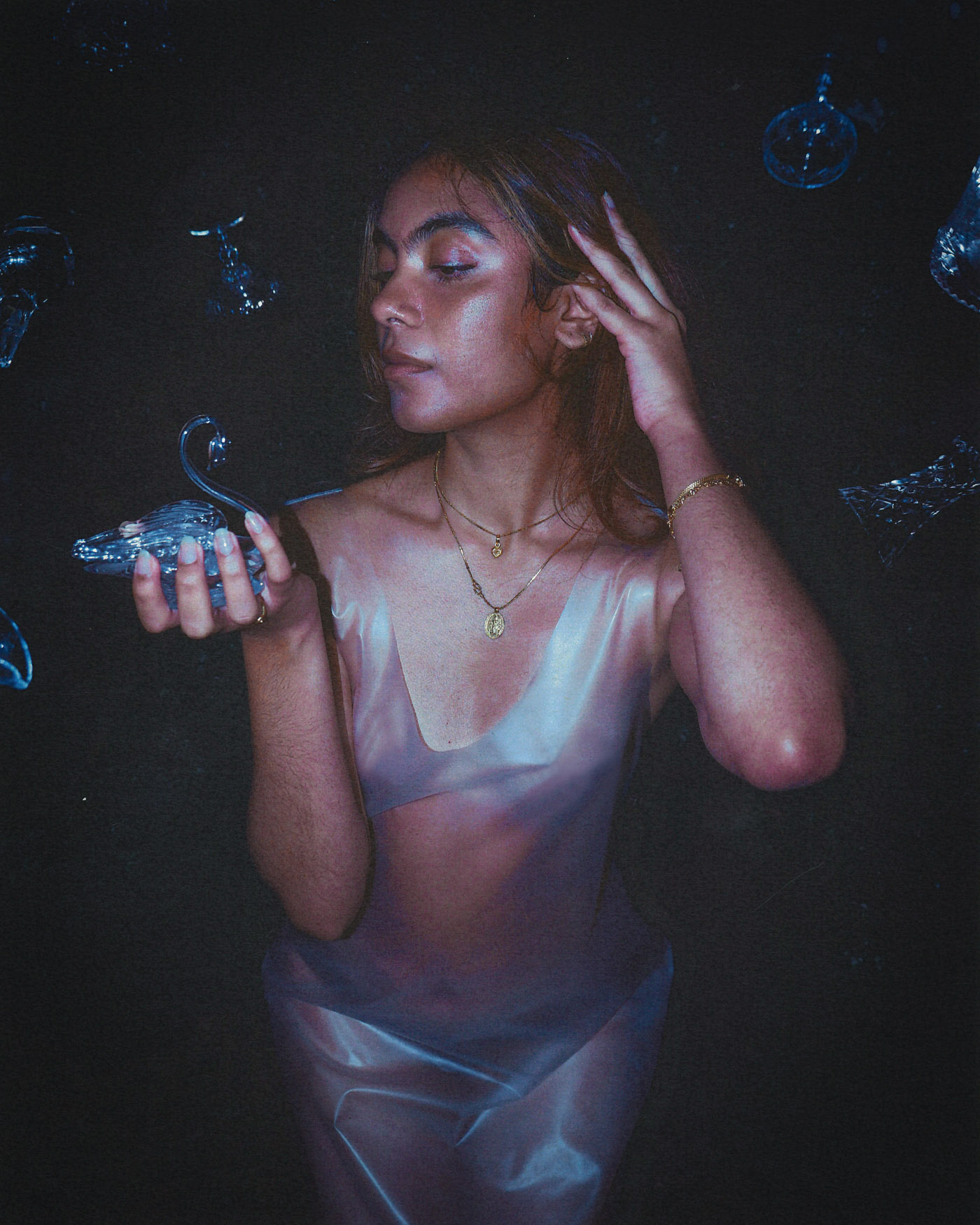
How much of what you write is based on real life?
A large part of what I write is based on real life. When I first got into writing and making music, it definitely was – and still sometimes is – a form of therapy for me. It allowed me to explore some heavy thoughts in my mind, by writing out my stream of thoughts, turning them into something I saw with an inspiring perspective.
However, inspiration for me comes in many forms, may that be real life situations, nature, literature…and on and on! One of my favourite songs I am working on at the moment is based on the passionate yet destructive relationship of two fictitious characters in a book I just finished called Cleopatra And Frankenstein. It’s a bestseller at the moment, but definitely not overrated – I highly recommend you read it.
Your latest single Golden Child is about a family relationship, and a family struggle. It’s refreshing to hear music about the complexities of familial love, was this something you consciously chose to explore?
Yes, the complexity of familial love is something that’s prominent in my life, so writing Golden Child really felt like getting some weight off my chest.
The song explores the clash between cultural and queer identities, which can really cause complexities in traditional families.
Seeing how many people have resonated with this song has made me very emotional in the best way. Having conversations with others who have grown up in a similar environment where our identities are not accepted or understood by those we love or are expected to makes us all less isolated in the feeling
You blend so many different influences together in your music, they overlap so beautifully. Other than music, where else do you go to for influence?
Thank you. To me, chords hold such a range of strong emotion, and when messing around on my guitar, I tend to come up with the direction of a track. Other times I will start lyrically, and then piece the music together. The process varies really. And when I have formed the chordal and melodic basis of a track, I will be able to start hearing what other sounds the song needs, to form the arc and tell the story, that’s what music production is, and I’m developing my ear for sure. I’ve worked with some super talented producers who help my demos come together into fully formed ideas.
The sound you create is really soothing. Does writing make you calm, or does it stress you out?
When I’m in the flow, writing brings me so much peace, but something I struggle with are the moments of mental overexertion where I feel like I don’t have the space to be creative. This can be a very stressful thing, but I think it’s important not to hold yourself under the pressure to be constantly creating as an artist, as inspiration and space can be something that fluctuates.
When you perform, what kind of atmosphere are you aiming to create with the audience?
Transporting. I aim to make my audience feel like they are lost in a dream, and create a relaxing, yet thought provoking environment, so they listen lyrically as well as sonically. Music is like meditation to me, and that’s the feeling I aim to create in my shows.
During the shoot you mentioned your upcoming music. What can we expect?
No set dates yet, but the next track I have set to release may be my favourite track I have created so far! I have been working with a close friend (and very talented producer) Leon Morris, to create a track with influences from nature and struggles with mentality. Working on music with Leon is so great because he is able to materialise exactly what I envision, as well as adding so many other crazy, and powerfully subtle elements. The feel of this track is actually very reminiscent of the visual aspects of what we have created in this shoot. I am very excited to share!
IN REVIEW the LUNCH POP-UP
14.09.23
This summer, the second LUNCH Concept POP-UP descended on the Scottish capital at Stills Gallery. Located just off the world-famous Royal Mile, during Edinburgh’s busy festival season, we welcomed 40 designers into the gallery space.
The idea for our ongoing series of POP UPs stems from our aim to offer the unique chance to browse independent designers in a physical environment. Building on our Glasgow POP-UP in February 2022, our Edinburgh POP UP brought together our friends, collaborators, and partners from across the city and further afield.
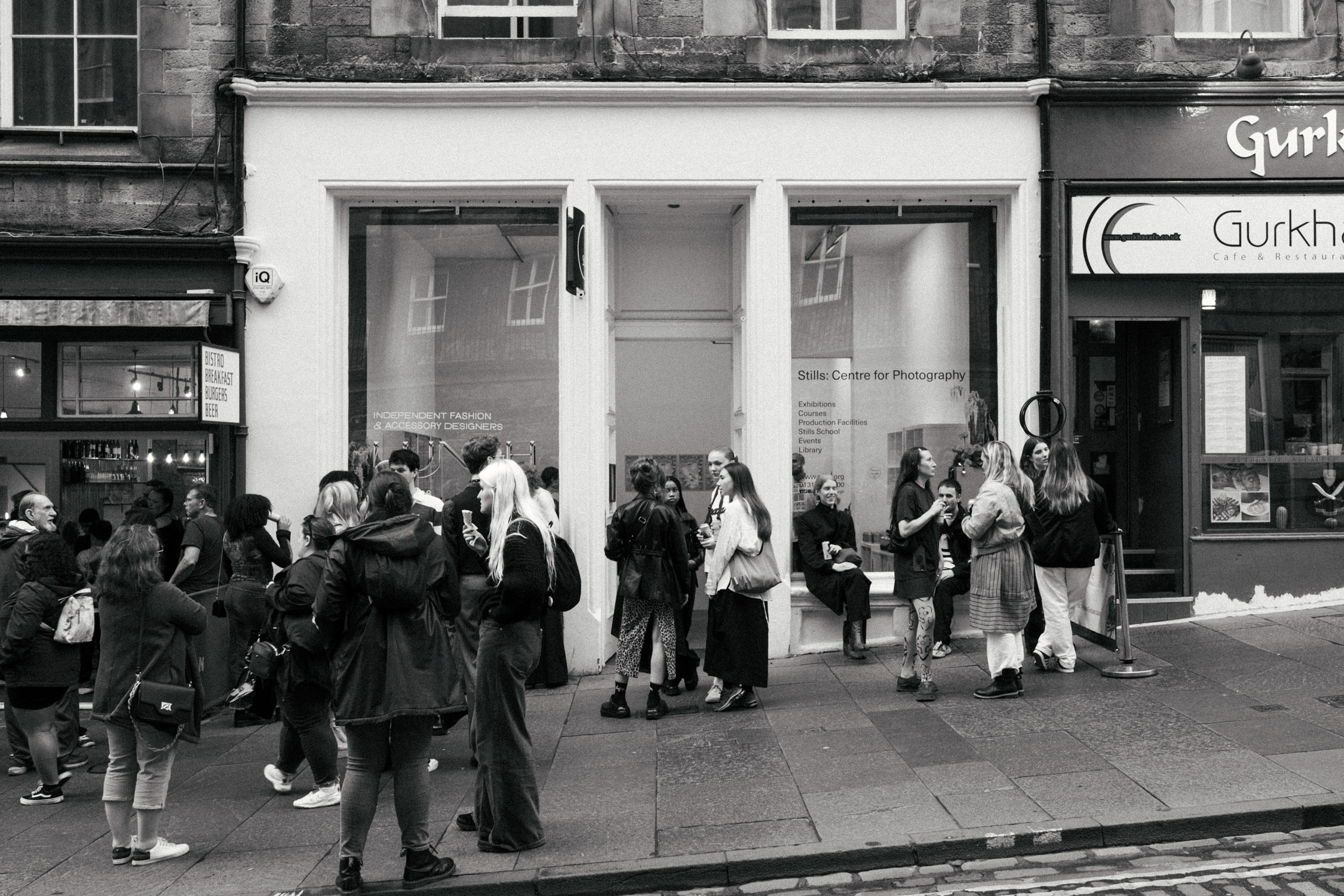
Our Glasgow POP-UP was a celebration of our home city, and the artists in it. For our stay in Edinburgh, we brought some of our favourite creators with us. RIPE, the magazine haven native to Glasgow’s Barras Market, took over the Stills bookstore. PAS.COS returned with grills and jewellery consultations. Glasgow’s G41 Gems offered appointments for their signature tooth gems. Olivia Rose stopped by for her own unique shopping experience. Also returning was Sophie Mahandru, florist and set designer who transformed our Glasgow POP-UP space into a beautiful, surrealist feast of fashion and nature, and this time around sculpted the beautiful PLANET LUNCH.
Beyond a shopping experience, our Edinburgh POP-UP offered the important opportunity to celebrate with the growing creative industry in Scotland the beauty of their creations in a shared experience. Captured by Stephen Lister is a selection of images from our opening night: a gorgeous party with long term collaborators and new friends we wish we could relive.
We’d like to give a huge thank you to everyone who attended, visited the POP UP, stopped to chat with us about their love for our designers’ work, and helped support an industry we care so deeply for.
And if you missed out on coming along this time, you won’t have to wait long to hear about the next one.
See you soon.
Love,
Bethany, Tamara & Graham
IN TALKS with PONYBOY
03.02.23
Hair: Ponyboy
Photography & Set Design: Kyle Crooks
Styling & Words: Graham Peacock
MUA: MV Brown
Featuring @okaylourdes, @apieceofcabbage, @fran.k____, @samanthamaria268, @araecullen
Photo Assistants: Isabella Atanes-Enepi, Kate McMahon & Nova Needham
With thanks to Limitee PR and Dandy
Scotland’s queer creative community needs Ponyboy.
Founded by couple Dill and Reece last summer as a hair studio, Ponyboy has quickly evolved into a multi-hyphenated queer space specialising in editorial hair, high impact spectacles, and elaborate nightclub productions.
Bringing together queer creatives from almost every corner imaginable in their showcases (art, music, drag, ballroom, fashion, and more), Ponyboy provides a framework for how a truly integrated creative network can help queer communities within cities blossom. Celebrating queer beauty, with an emphasis on the trans community, exists at the forefront of Ponyboy’s work. With an encyclopaedic knowledge of pop culture and historic fashion references, Ponyboy uses hair to indulge in fantasy and empower their clients, performers, and partygoers. Ponyboy understands the power of image, and the importance of safe havens. It is their equal celebration and adoration of Scotland’s queer community that has cemented them as a beautiful, unpredictable powerhouse.
This feature was shot by Kyle Crooks, with makeup from Glasgow makeup artist and Ponyboy resident, MV Brown. The names in this collaboration with LUNCH aren’t just mainstays of Glasgow’s queer creative world, they’re also Dill and Reece’s friends and frequent collaborators, adding an authenticity to Ponyboy’s work which is forever tangible in their output.
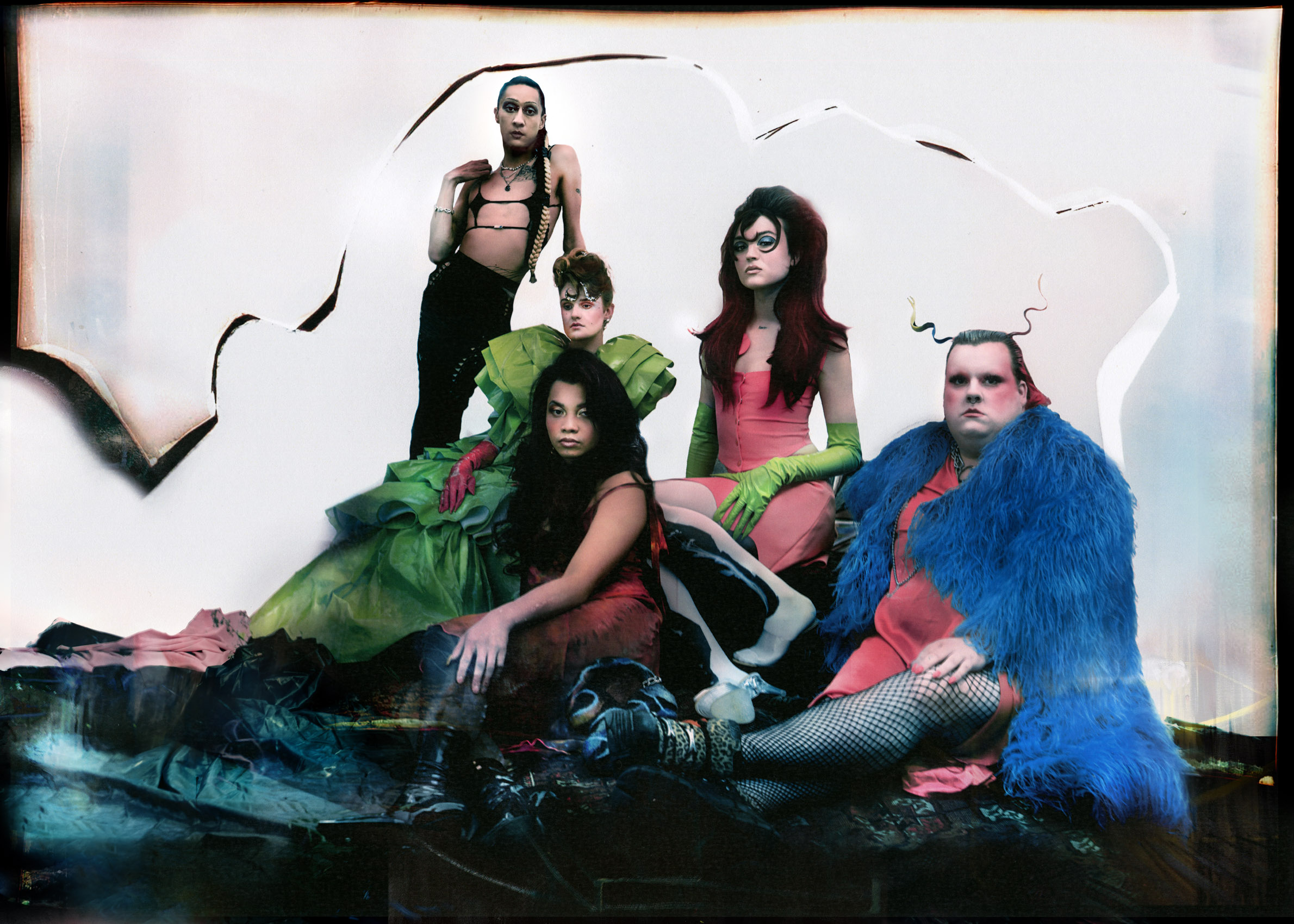
What influenced you to start Ponyboy?
Well, the name Ponyboy obviously comes from the SOPHIE song. When the name was suggested by a close friend of Sophie, we both immediately knew that Ponyboy was perfect. We were also surrounded by our chosen family at a festival and the moment felt very perfect.
We wanted to immortalise her legacy in the centre of Glasgow as a love letter to the queer community (specifically the trans community) because of how important SOPHIE was to us all and what she represented.
Our chosen family are primarily trans or non-binary and Dill especially has experienced the stress that comes with navigating the world as an often femme-presenting person and how hostile the world can often feel.
A huge goal of ours in creating Ponyboy was to contribute to the historical archives of queer and trans beauty because we see so much of it here in Glasgow.
Queerness is at the core of everything you do. We’d love to hear you chat a bit about the relationship between hair and queerness. What do you think hair has the power to unleash within people?
This is why we do the pay-what-you-can drop-ins for trans and non-binary people and have trans-specific discounts because we regularly get to see the power that hair can have in helping to outwardly reflect how someone feels internally. While the UK government has any control over us and continues to express a disdain for trans people, the community of Glasgow really need to rally together to uplift and amplify trans voices in any way they can.
Who or what do you look to for inspiration?
We find inspiration everywhere. The formative hangovers of Reece and I’s relationship were often spent watching runway shows and Reece could recite every notable collection for the past twenty years, whereas I just have a brain that never stops running at 110mph.
Our aesthetics are quite different. Mine is often an explosion of colour and texture and Reece’s aesthetic is much darker with sharper edges. I feel as though Ponyboy is the coming together of both these things.
With the Ponyboy showcase on NYE, I led the creative direction for the overall aesthetic and Reece and I pulled inspiration from 90’s club-kid aesthetic, but also Mona The Vampire and Mars Attacks!, so our moodboards pull from all sorts of animated universes, eras, or aesthetics.
We are constantly inspired by the people we work with and always want the finished project to have injections of everyone involved contained within it.
The work you did on this shoot is unbelievable. How did you go about putting the looks together?
We always work differently depending on the project, but always in a very collaborative sense with one another. With this project, when Kyle suggested creating a mylar chamber, I imagined the models appearing as though they were floating in water which felt symbolic of divine feminine energy and healing. Once that idea formed in my mind, I knew that I wanted the shoot to have a trans feminine focus and be heavily centred on high glamour as filtered through the aesthetic of each person involved. We ultimately always want to tell a story with everything we do.
We regularly explore different time periods and aesthetics, and were heavily influenced by Valley of the Dolls and hair ads from old magazines for Lourdes and Arae’s hair. We always want to juxtapose different eras and influences with every project to create a remix of existing ideas that feels new and exciting. Reece also adopts old techniques of styling hair and uses vintage tools whenever they do period hair as they want it to be as authentic as possible. I think it really adds another dimension to the finished project.
There’s no one else doing what you’re doing right now with the Ponyboy Showcases. What did you set out to achieve with these events? Where do you see them going in the future?
I think when Reece and I started dating and were discussing our plans for Ponyboy, I wanted to produce a club night to showcase their insane artistry as a launch party, but, with anything I produce, my ideas tend to grow arms and legs and quickly it becomes a production.
I was also keen to have the majority of the lineup be people under the trans umbrella because having a glam squad to help support how you see yourself can be a really transformative and euphoric moment, and it just makes it feel more worthwhile for us.
We are also very keen to make a Ponyboy Lookbook to create an archive of the beauty of Glasgow’s queer community, so hopefully we can secure some funding and make it happen in 2023. We are honestly sitting on so many insane images already that I’m holding onto until we can give them a place deserving of their gorgeousness, but I want it to be done correctly.
How do you decide who you want to collaborate with next?
We are always quite keen to ensure we are pulling from different queer collectives and ultimately we want everyone under the queer umbrella to see themselves reflected within the showcase.
I also used to be part of the ballroom community, and regularly attend, host, and perform at queer club nights, so we are very integrated with the queer community and exposed to the insane talent that exists here.
We’d also been fans of MV Brown’s work for years and they’ve quickly become a consistent collaborator and friend of ours, so we’re very excited to continue creating gorgeous visual spectacles with them throughout 2023.
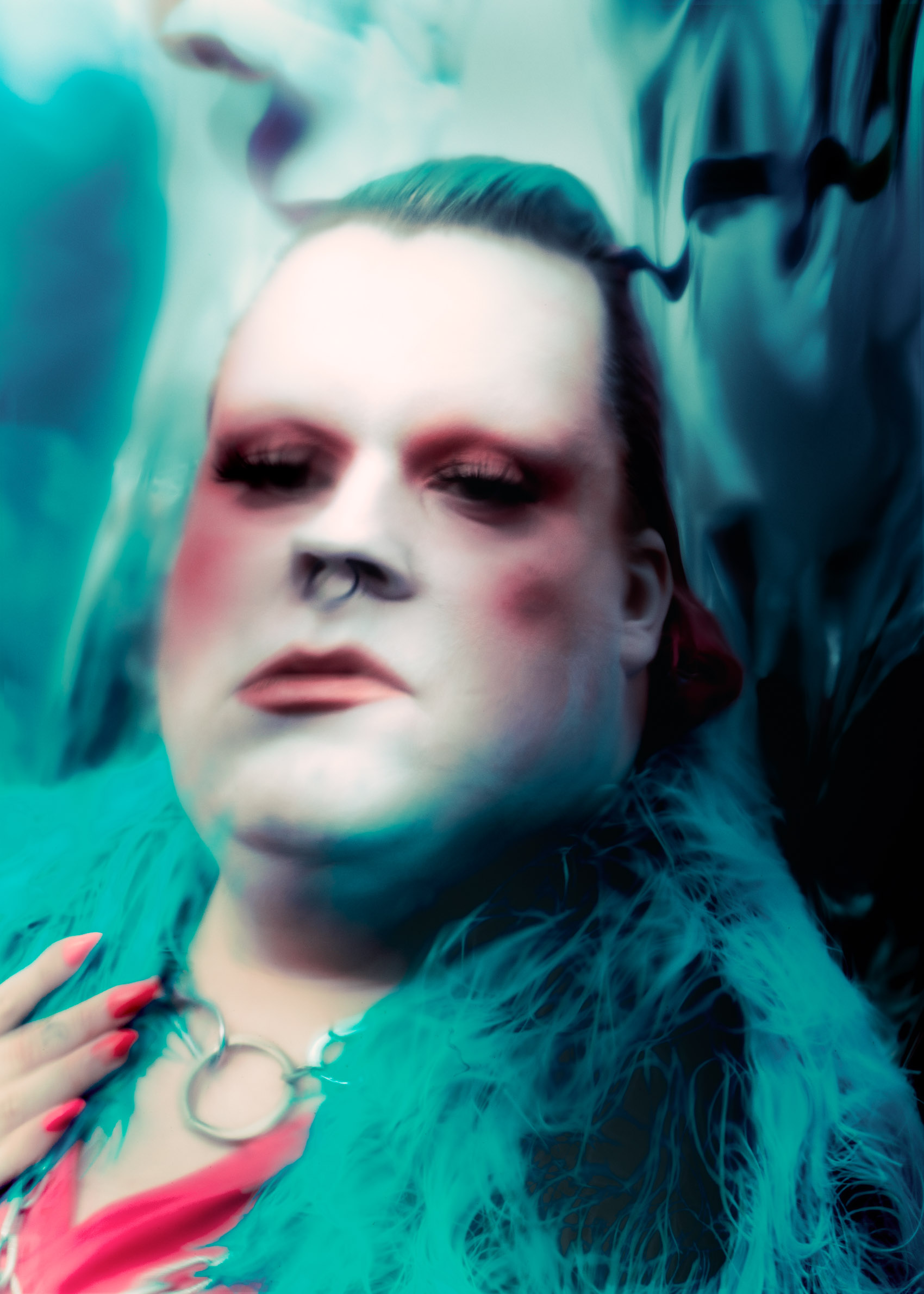
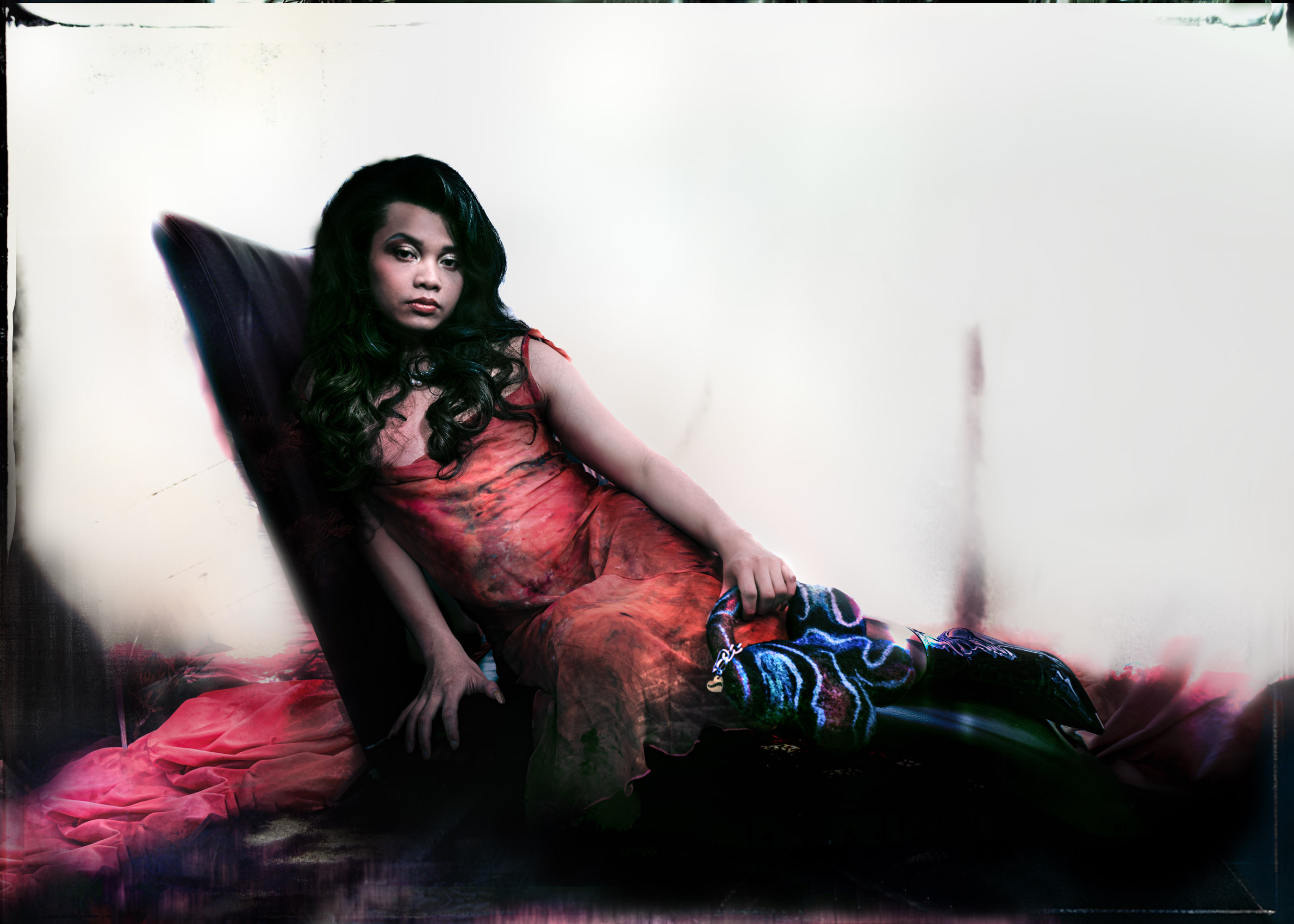
What are you most looking forward to right now?
Well, I’ve been asked to produce a Ponyboy Showcase for LSDXOXO on February 10th at Stereo which already has such a fun team behind it. There’s even more dimensions to it than previous events and I honestly can’t wait for people to see what we have planned and to showcase Reece’s artistry.
I’m also going to continue producing showcases at Bonjour and have some really fun plans for themes, shoots and performance ideas that I want to develop. There’s so much beauty in the room at every showcase and I can’t wait to continue creating space for that to take place.
We’ve had some producers from other cities suggest taking the showcases to their clubs. I think if it was feasible we’d love to be able to take some performers with us to other cities and create some cross-city queer collaboration. We also desperately need a holiday.
Separately, people should book in for hair appointments so we have the financial capacity to make our plans happen if you believe in what we’re trying to create – regardless of whether you’re queer or just support our mission statement as a hair studio and creative space.
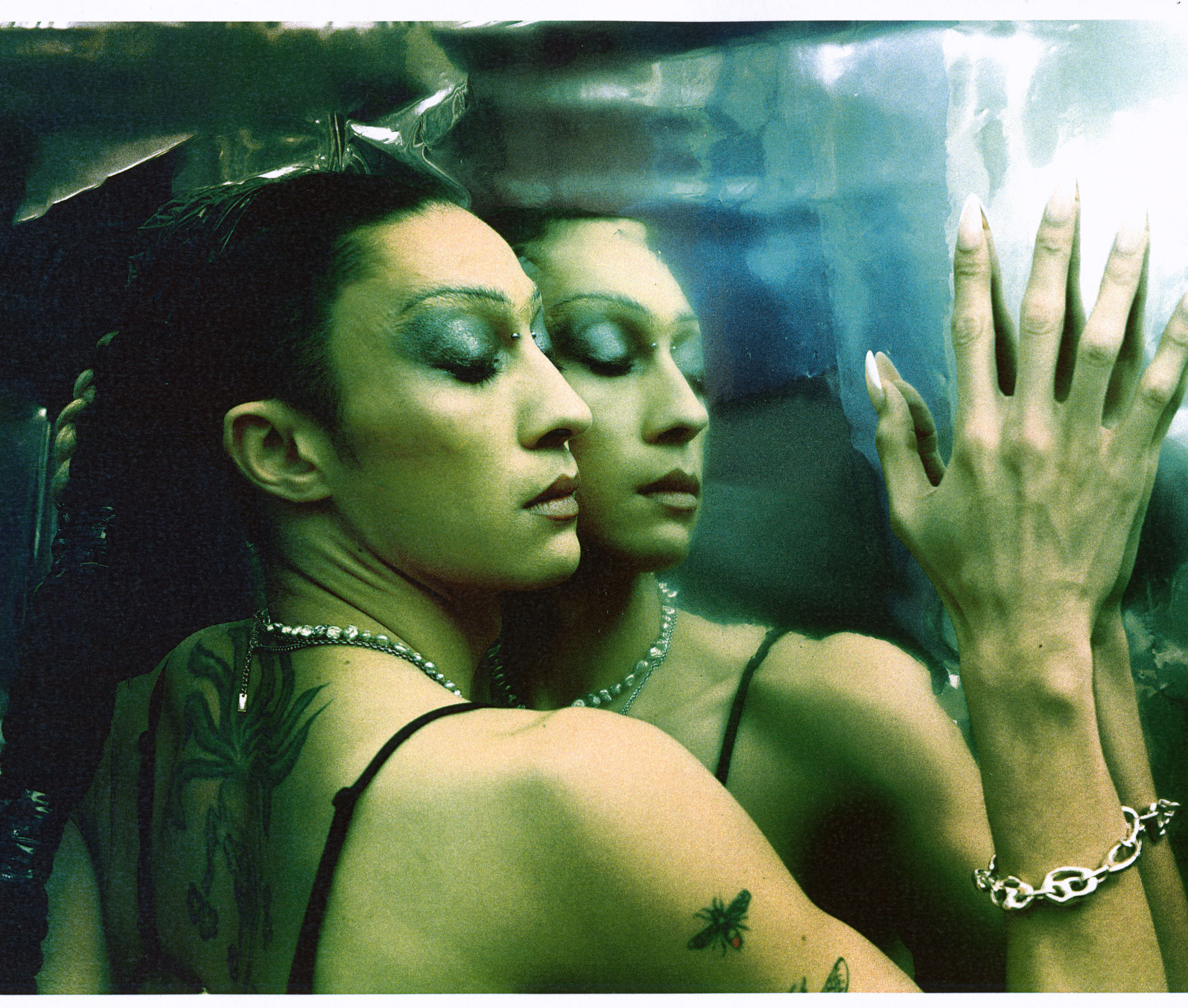
IN TALKS with SICK LOVE ZINE
21.12.22
Photography: Caitlin Ellis
Styling & Words: Graham Peacock
Featuring Izzy Gorman-Buckley
Izzy Gorman-Buckley created Sick Love Zine to place an emphasis on the underground. Originally from Brighton and now living between London and Leipzig, the writer and zine-maker centres queerness and creativity in her work, often immersing herself in different cities to examine the complexities of collective and individual identities within art. With an ethos centred on exploration and empowerment, Sick Love has taken its Editor-in-Chief around Europe to amplify the voices of artistic communities that exist outside capital cities.
Fresh from her last project, Sick Love Presents, that took her on a tour around Kyiv, Warsaw, Glasgow, and Leipzig, and now at work on her upcoming project, we caught up with Izzy to talk about honouring the legacy of zine-making, and her plans to expand Sick Love’s horizons.
Thanks for coming out in the freezing cold with us. Did you have fun on the shoot?
My pleasure! I had loads of fun, I got a nice tour of Glasgow and some cold weather training whilst frolicing in my gorgeous mesh attire! It’s always a treat to shoot, even in December!
Can you tell us why you started Sick Love?
I began Sick Love as a means to platform underground artistry and facilitate necessary conversation surrounding the issues faced by many young creatives navigating their respective industries. When I started, I was frustrated with the lack of critique I saw in mainstream arts media and I began producing content that explored the underground and highlighted the flaws which have led to unfair representation in the United Kingdom’s creative industries.
You have a clear desire to honour the history of zine-making in your work. What draws you to the format?
Yes this is really important to me! The history of zines as a method of expression, organisation and communication for those excluded from the mainstream media is something I find particularly inspiring, and I wish to build on a long history of print with purpose through Sick Love.
To me, the zine format allows for versatile written and visual communication, creativity and accessibility. Writing is my preferred method of expression, and zines allow me to display this in an engaging manner.
What are you looking for in an artist’s work that gets you excited about working with them?
I am interested in stories, works that bring me close yet leave me questioning. I simply choose work that intrigues me, that I want to know more about, delve into. This has always led me to people that make me feel the same way.
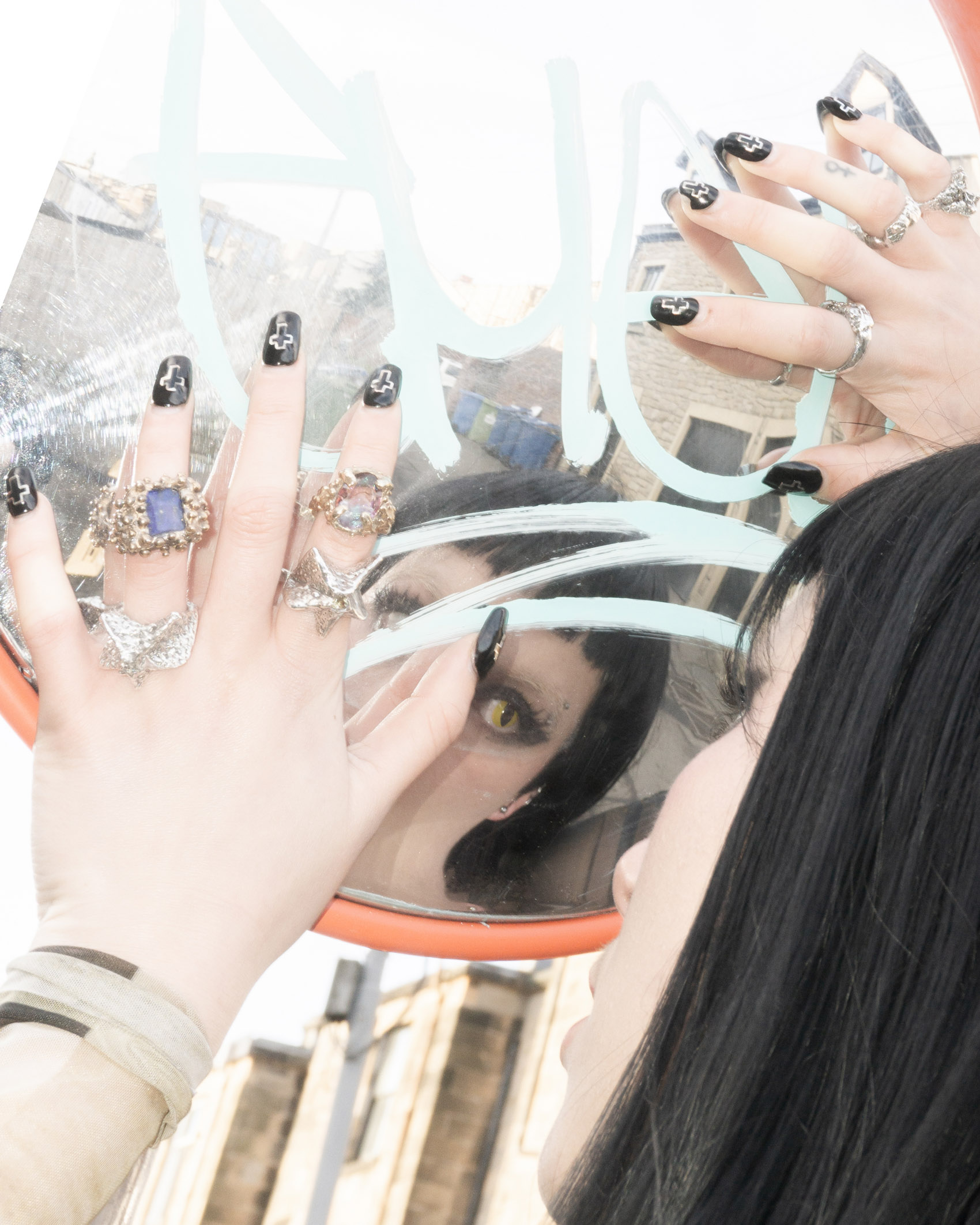
Izzy wears rings by @dormante_jewel
Your work with Sick Love Presents helped broaden the understanding of underground art within Glasgow, Kyiv, Warsaw, and Leipzig. What did the experience of putting this project together teach you about the way art impacts these creative communities?
Each community was markedly different. I knew art was important to these spaces, and that artists were utilising their practice to express, challenge and even provoke. Art allows many to process their own emotions and their environment, the challenges and beauties of both. I discussed this with all artists involved, as art has allowed many to challenge themselves and their surroundings.
Sick Love has expanded beyond the zines you create. You recently hosted a workshop at the much-loved Glasgow Zine Library. Can we expect more events like this to come?
Yes totally! Over the past two years since beginning Sick Love, I’ve organised a variety of events including workshops, exhibitions, pop-ups etc. Although the zine format is definitely a favourite, there are so many ways to engage with creatives or explore a concept that I am always interested in expanding Sick Love’s horizon with a portfolio of events and opportunities for connection.
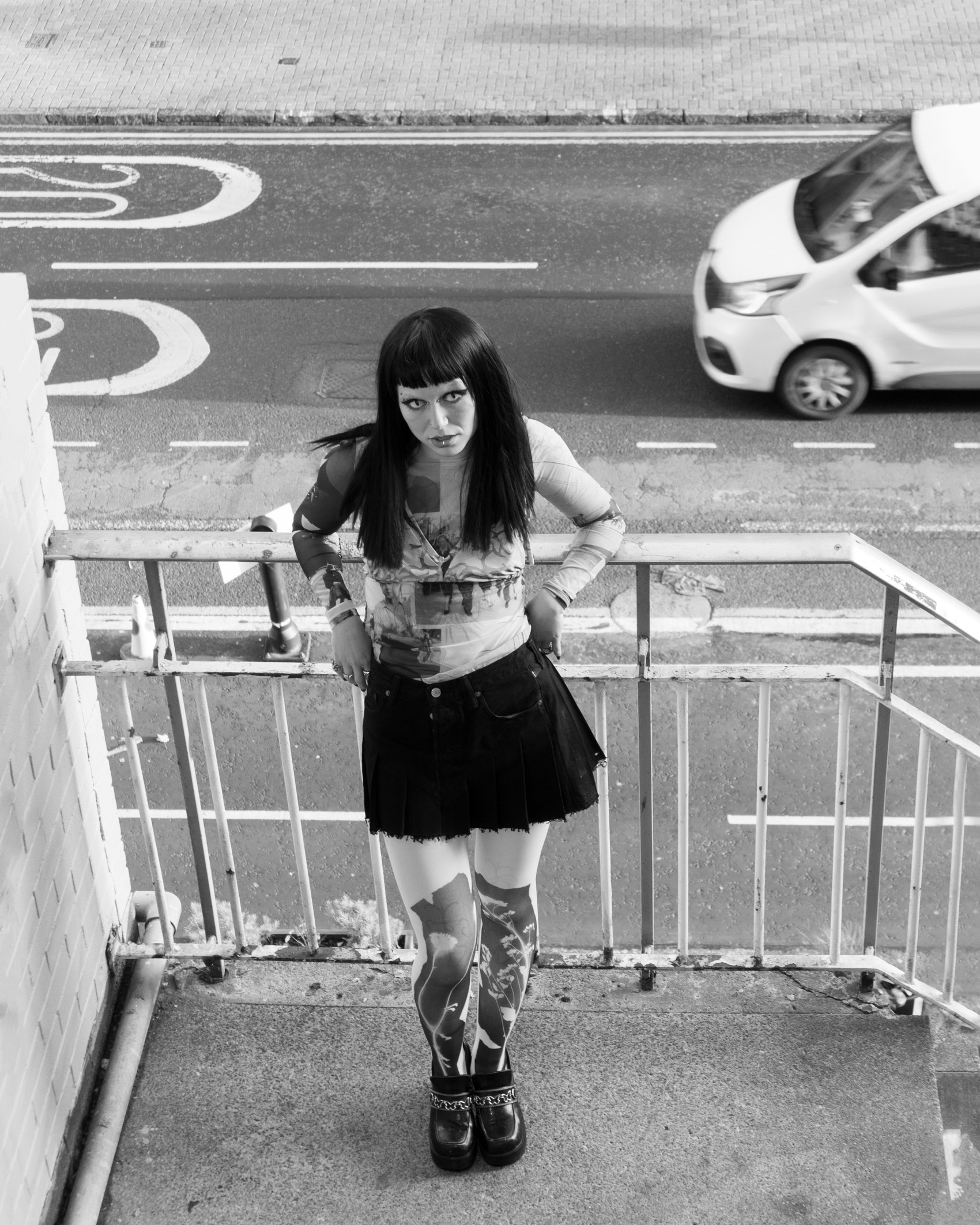
We’d love any hints you can give us about what the next iteration of Sick Love looks like.
Although I won’t give too much away, I’m interested in exploring queer pasts and presents. Queer art histories are often erased or overlooked in the canon, so my next project will celebrate queer histories, influence and icons whilst supporting the queer talent of today.
Where does the name Sick Love come from?
Ah this is a funny one! It came about quite randomly actually, and is the title of a cheesy song I liked in my early teens. It simply had the perfect ring to it…
IN TALKS with HUSS
24.11.22
Photography: Bethany Grace
Words: Graham Peacock
Makeup: Shaun Lavender
Model: Huss
There’s a tangible euphoria that radiates from the world of Glasgow’s queer club scene, and it’s a world that Huss threw himself into head first when he arrived in the city.
Originally from Egypt, the artist and performer came to Glasgow for university, and quickly found home in the high profile club nights designed to provide a sense of community for queer party-goers. Huss’s experience in Glasgow is testament to the power of the city’s independent organisations striving to provide avenues for community outreach and self-expression. His experience as an artist with an online platform speaks to the ways in which marginalised voices can establish autonomy over their future, and use their profile to raise awareness surrounding human rights issues. Appearing in campaigns with Reebok, Calvin Klein, and GAY TIMES, Huss has consistently used his platform to champion global queer liberation, and used his performances to celebrate his identity in the face of very real danger.
With LUNCH, Huss talks us through his remarkable experience in Scotland so far, and ambitions for the future.
Hey Huss, how are you feeling after the shoot?
I’m feeling fab! Thank you so much for having me.
So, you’re an artist and a performer. Can you tell us a bit about the kind of work you create?
I’ve used my work as an instrument to approach personal and cultural themes for most of my life – it has always been my voice in a life where it always felt like I never really had one. I always find it overwhelming beginning to plan a piece because I have so much emotion and frustration to pour out and I struggle communicating my feelings any other way. I use lots of mixed elements in my work such as installation, visuals, and audio to invite the audience into immersive performance and visual pieces. I want them to step into my world for a few minutes. I use my work as a queer Arab to raise issues facing the Arab world that lack acknowledgment, especially queer laws and how much it has always censored and endangered people like myself. The constant oppression on queer Arabs is not spoken enough about at all and I want my work to make even the slightest difference. It is so important to speak up for all those who cannot.
A lot of your work revolves around nightlife spaces. Can you tell us a bit about your relationship with these environments?
My work is very influenced by the queer nightlife spaces I got introduced to when moving to Glasgow from Egypt, as someone who was never given the chance to discover himself and his identity. I remember walking into the Art School and Shoot Your Shot for the first time and being so mind blown by all the artists and performers around me. I was so inspired, I felt loved, and I was no longer afraid. I was 18 years old when I got asked to do my first club performance. Due to the queer context of it, people back home found out and began to threaten to send me back to Egypt. This very queer safe space stuck by me and made me feel comfortable in going ahead with the performance. The artist and overall person I am today is thanks to those spaces.
You take on a masked persona in a lot of the work you create. Do you see this as always being part of your performance?
My mask originated from that first performance. It was never planned nor an aesthetic – I started wearing the mask because I was honestly petrified and needed to urgently protect myself and my identity. It was my way of continuing to do what I love and continuing to speak about these important matters without having to pay severe consequences. Throughout the four years of my
mask, I have received endless backlash, threats and even had one of my sketchbooks interrogated in an airport, but none of this stopped me. I’ve been asked this question about my mask a lot, but after last year when one of the campaigns I had done outed me to everyone back home, it is no longer safe for me to go back to Egypt. Although it’s heart-breaking, I am free. I finally have a voice. Right now, I’m trying to figure out how I’ll transition from using the mask in my work since I no longer need to hide my identity, but for all the exciting new work (and dream show!) coming early next year, I thought it was important for the mask to remain to tell this story that is very important to me. These will probably be the last pieces with the mask – a farewell to my past life of censorship.
You’ve talked before about your love for the internet. It’s kind of refreshing and almost surprising hearing the internet being talked of in a positive light these days. There’s a lot to love about it and a lot to hate. What’s your relationship to it like now?
I think talking about my love for the internet and social media is so ironic, because in so many ways it has made my life so chaotic and made me lose so much. It fully exposed and outed me to the wrong people. However, the ways I was able to navigate my art career amid all the censorship thanks to the internet was amazing. We as marginalised communities can create our very own virtual safe spaces, and that is something that helped form my work a lot. Whether it was opening my work for collaboration, or creating a virtual safe space where queer Arabs can mourn, rant, and create freely and safely, or whether it was finding discrete ways to promote my work. Fast forward to 5 years later, my work and what I stand for has reached places like GAY TIMES, Reebok, and Calvin Klein, been shown on billboards around the UK and so much more, if you told my younger self all this was going to happen and I was going to be comfortable in my queerness, I would have laughed in disbelief! Most importantly, I’m now safe in this country thanks to the internet – whether it was the emergency fundraiser organised or the GoFundMe, it was crazy to see so much action taken so quickly and I’m so thankful and humbled by it all. I couldn’t ask for more and strongly believe that this is just the beginning.
You had a lot of fun outfits in this shoot. What’s your favourite?
I had so much fun! They were all amazing, I was especially excited to see Trashy Clothing – it felt like such a coincidence! I’ve looked up to Shukri Lawrence and Omar Braika (the icons behind the brand) for a long time and I’m just so inspired by everything they do and the important conversations they
open. Trashy Clothing is a queer Palestinian fashion brand, and their goal
is to reclaim the Palestinian/Arab identity and they are doing exactly so, even Bella Hadid was spotted wearing one of their pieces. From the perspective of an Arab, yet alone a queer Arab – this is all so mind-blowing to me and gives me a glimpse of hope. It’s so important to support and speak up for queer Arabs. There is no queer liberation without Palestinian liberation.
Graduate Showcase 2022
09.11.22
Photography: Scott McWilliam
Styling: Graham Peacock & Tamara Turnbull
Designers:
Rowan Stallan, Martha Gladwin, Beatrix Booth & Laura O’Neil
Models:
Aicha Benjellon, Fatima Benjellon & Radia Benjellon
How are young designers expected to navigate the fashion industry today? Emerging from art school, university, or personal training in the midst of an ever-changing creative landscape and reliant upon algorithms that work against startup brands, it can seem demoralising. But a visit to any one of Scotland’s graduate showcases this year wasn’t marred by the reality of the current industry, or limited by an education experience impacted by lockdowns. Instead, the pieces showcased seemed to exist in fantasy worlds all of their own, inviting visitors in to experience them in their full immersive glory. Whether housed physically in graduate showcases or presented in online portfolios, the collections from graduate students this year steep themselves fully in creative hedonism. With impeccable originality and striking playfulness, the future of Scotland’s fashion industry lies rest assured in the hands of these upcoming names.
In our showcase, we spotlight just four out of many brilliant Scottish creatives graduating from Fashion Design courses in Scotland this year.
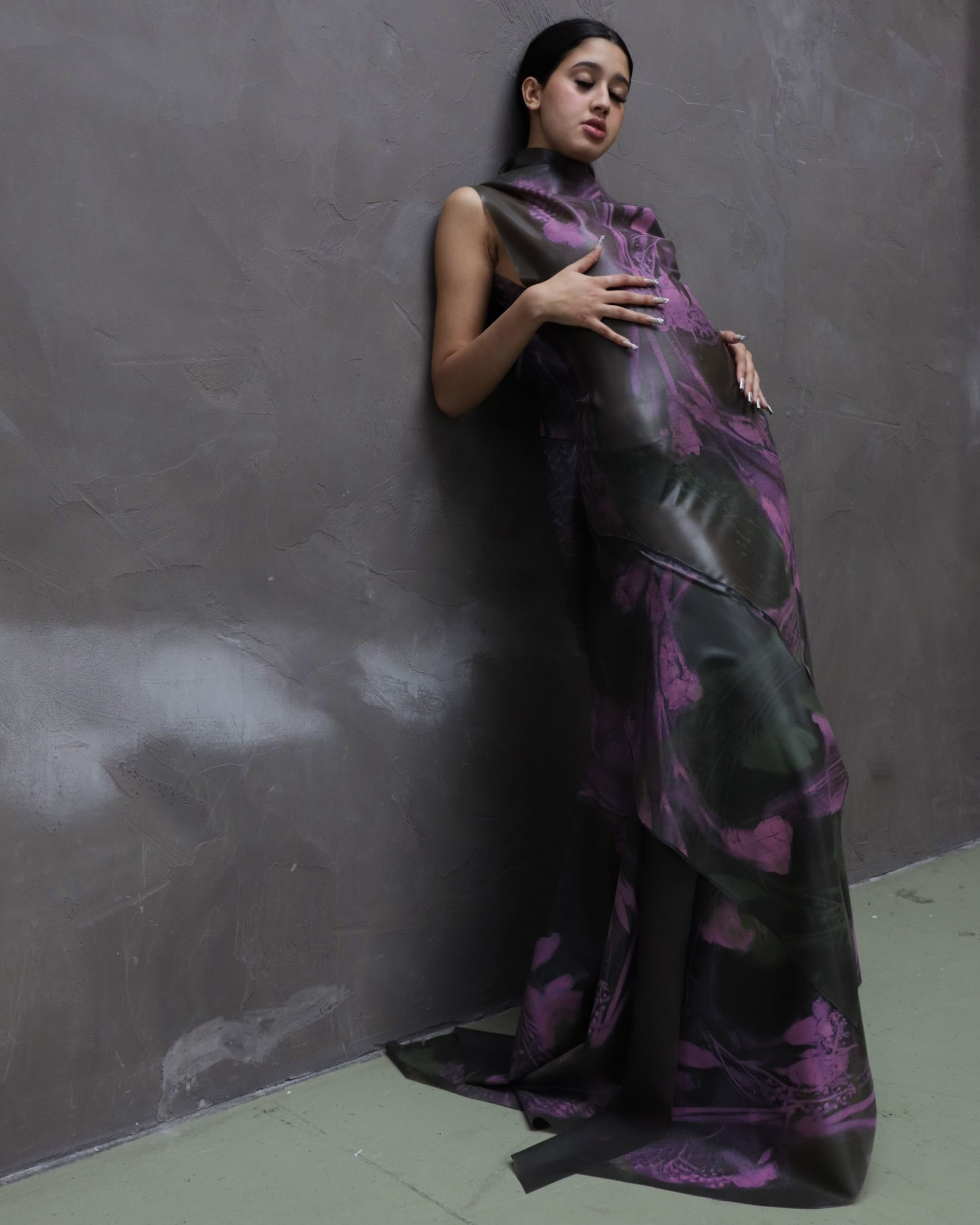
Rowan Stallan
The majority of this collection is made entirely from latex. It adds such a beautiful texture. A lot of the pieces look like liquid metal when they catch the light. What drew you to working with this material, and how did you find the process?
My collection explores themes surrounding the Scottish landscape, the weather and the effects of nature. Within my work I want to celebrate Scotland’s sublime weather climate – creating an underlying mood within my collection, dark yet beautiful, reflecting the elements of decay, the Scottish landscape and the harsh weather conditions.
I wanted a material that would represent and communicate my concept. I was drawn to working with latex as I felt it captured a sense of the dark and gloomy landscapes within my research. Moving and shimmering like liquid rain, it has such a beautiful quality to it. Having never used latex before I faced a few challenges, having to learn new ways of construction and application, as well as overcoming methods of printing on latex. However, through sampling and experimentation I was able to find appropriate outcomes which were functional and durable.
From the cuts to the colours, this collection feels like an ode to vintage design styles, with a modern update. They feel elegant yet wearable. What eras, artists or designers inspired you when you were working on these pieces?
When designing my collection I gathered my inspiration from a number of abstract and contemporary influences. I looked at 90’s Maison Margiela minimalism to 80’s bomber jacket silhouettes and the iconic film Blade Runner and its influence on fashion and design.
Find more of Rowan Stallan’s work here
Martha Gladwin
Obviously, we’re obsessed with the cat dress. We’re really interested to know where your references came from on this collection.
Thank you! This collection is called ‘Make Amends’ because I aimed to make amends for the traditional male gaze by putting women’s wants and needs first, something that is too often missed in fashion. I also used second-hand textiles to do my bit to make amends for the huge environmental impact fashion has. It’s visually inspired by kitsch imagery and the ‘make do and mend’ movement that I came to from looking at antique scrap books. Overall, I wanted to make clothing which empowers the wearer and is a source of sheer joy and entertainment.
This collection feels very playful. The pieces radiate joy – hedonism over practicality in the best way possible. What is it that draws you to creating fashion?
I’m so glad you think so, creating something joyful and entertaining is always one of my goals. Yes! I wouldn’t claim they are practical but everyone who’s worn them has told me how comfy they are which was also one of my goals, particularly with the plus sized looks as this can be overlooked.
I remember early in the making stages at uni my technicians (Dan and Ashleigh) told me that what I was working on didn’t show my sense of humour, so I scrapped what I was going to do, and I went back to look through my work for where my personality did show through. That’s when I decided I had to make the cat dress. It’s easy to forget to just be yourself in the intense space of final year, but I find the outcome is better when I enjoy the process! I think that the empowerment and liberation that can come with fashion is what draws me to it, then I have a drive to fix some of the damages fashion has also done.
Find more of Martha Gladwin’s work here
Beatrix Booth
You’re playing with shape and texture in really interesting ways with this collection. Can you talk us through the inspiration behind these pieces?
SUPERNATURE is an exploration of the similarities between ancient intelligence (fungi) and artificial intelligence, through a science fiction lens. The silhouettes are a balance between powerful and delicate – a reflection of female strength and resilience. With the development of technology such as artificial intelligence, I wanted to explore the connections between two polar opposites: mushrooms and machines.
One of the key elements in this collection is versatility. Items are adaptable and reversible – they allow the wearer to personalise the looks to themselves. As a designer, is this relationship between the wearer and the clothes important to you?
I think it’s incredibly important that the wearer has an emotional connection with the clothes that they own. A common theme in sci-fi movies, particularly from the 1960s-80s, is the scantily clad femme fatale – purely an object of male desire. I wanted to take this archetype and give her new power through her clothing. SUPERNATURE has been designed to empower the wearer, whoever they may be. Clothing can be so powerful in the way it makes you feel, so why not have fun with it?
Find more of Beatrix Booth’s work here
![]()
Laura O’Neil
Both your graduate collection and a couple pieces from your third-year collection are featured in this shoot. From colour to materials, they feel thematically very different. Can you talk us through the process of designing this new collection?
For my final collection [Un]exposed, it does appear very different from anything I’ve done before. I wanted to create a collection which would enable a conversation, and I chose a concept that was close to home and one I also felt is spoken very little of today. The concept for this collection was disordered eating and the struggles surrounding it. These are struggles I grew up with and it was never something I talked about much. As I grew older I realised we don’t embrace our bodies nearly as much as we should and I wanted a collection which combined the two together. The collection sort of has a hidden message within the contrast of the fabrics and garments. I wanted to use tight fitting mesh that clung to the figure that enhanced the body’s shape, but at the same time use padded and puffer oversized garments which were distracting and that would distort the body. This is really clear in my mesh dress and oversized puffer jacket look. Growing up I often tried to hide my body with oversized clothing and bigger garments so no one could really see what my body was like. However, in this collection, when you remove these larger padded pieces, what’s underneath is still just as beautiful. And for me, that’s what counts.
At the start of a project, where do the ideas for your work tend to come from? Do they grow out of thematic interests, or a desire to play around with new colours, textures, and design techniques?
I always love trying new things, even if at the start you have no idea how you’re going to make something. You need to have fun with the design stage because anything is possible and that’s why I love my red look (VESSLE) so much. The concept for this look was mycelium and I made this from my living room during lockdown. The skirt fabric I hand made from scratch after weeks of constant experiments but I was determined to be successful. I managed to make my own plastic which took about a week to fully dry before being able to construct it into a skirt. I would love to play around with this technique more and push it further. I think you can pull inspiration from anything you love and want to experiment with. I always want my designs to be bold and striking, using pops of colour and interesting fabrics to create a fun visual.
Find more of Laura O’Neil’s work here
IN TALKS with SOLACE
15.09.22
Model/Designer: Flora McGuigan
Photographer: Polly B
Words: Graham Peacock
It’s fitting that our shoot with Flora, designer of Glasgow-based label Solace, takes place in the middle of the woods. With a design style that wears its love for the natural world and the Scottish environment on its sleeve, Solace feels deeply rooted in place.
It’s what makes it so hard to believe that Solace is only in its second year of existence. Already having made a name for herself with two much-loved collections, Flora’s signature ruching, toggles, silver fastenings, and waterproofing have made her designs instantly recognisable – a hard task in a world where originality can feel unattainable. How has she pulled it off? Through 100% authenticity, a genuine love for her craft, and a steadfast ‘release it when it’s ready’ policy.
In this feature, shot by friend and collaborator Polly B, Flora gets lost with us on a journey through the environment that informs her practice, and gets honest about her process. As one of our first collaborators, the catch-up was an absolute dream.
Tell us how Solace started out.
Solace was started last summer, with my first collection being released in June of last year. It was born out of a need to create after quite a long time spent in lockdown.
I had been making and selling work for the year previous under my own name, but it felt like the right time to make the step to become an actual ‘brand’. The lockdown allowed me to slow down and reflect on what I wanted my identity to be.
We’re interested to know how you found studying fashion, how do you find it changed the way you design your collections now?
Honestly I did find it quite challenging. I studied in London which I think definitely comes with its own unique stresses. I can only talk from my own experience, but I do think that to study fashion you are expected to be working literally every hour of the day! University set me up well for the realities of the industry and gave me a really good work ethic.
It totally shaped the way I design and work, as I was taught the importance of designing in a coherent way and ultimately that gave me the confidence to start my own brand.
What we love about Solace is that it has a very unique design. We see one of your pieces and instantly know it’s yours. How did you develop your style, what influences you?
Thank you very much, that is a real compliment! I’ve always been obsessed with making mood boards and truthfully I still spend a lot of my free time going through magazines or researching images online and then curating them together into different folders. Because of this, I think that when I began Solace I already had quite a strong sense of what the ‘image’ would be. I also always design in full looks so I think this allows me to make the collections more coherent.
I’m really inspired by my surroundings and those around me and I think growing up in Glasgow has really informed my design style. Self-reflection and identity are big themes for me too and I definitely use my work to unpack my life experiences.
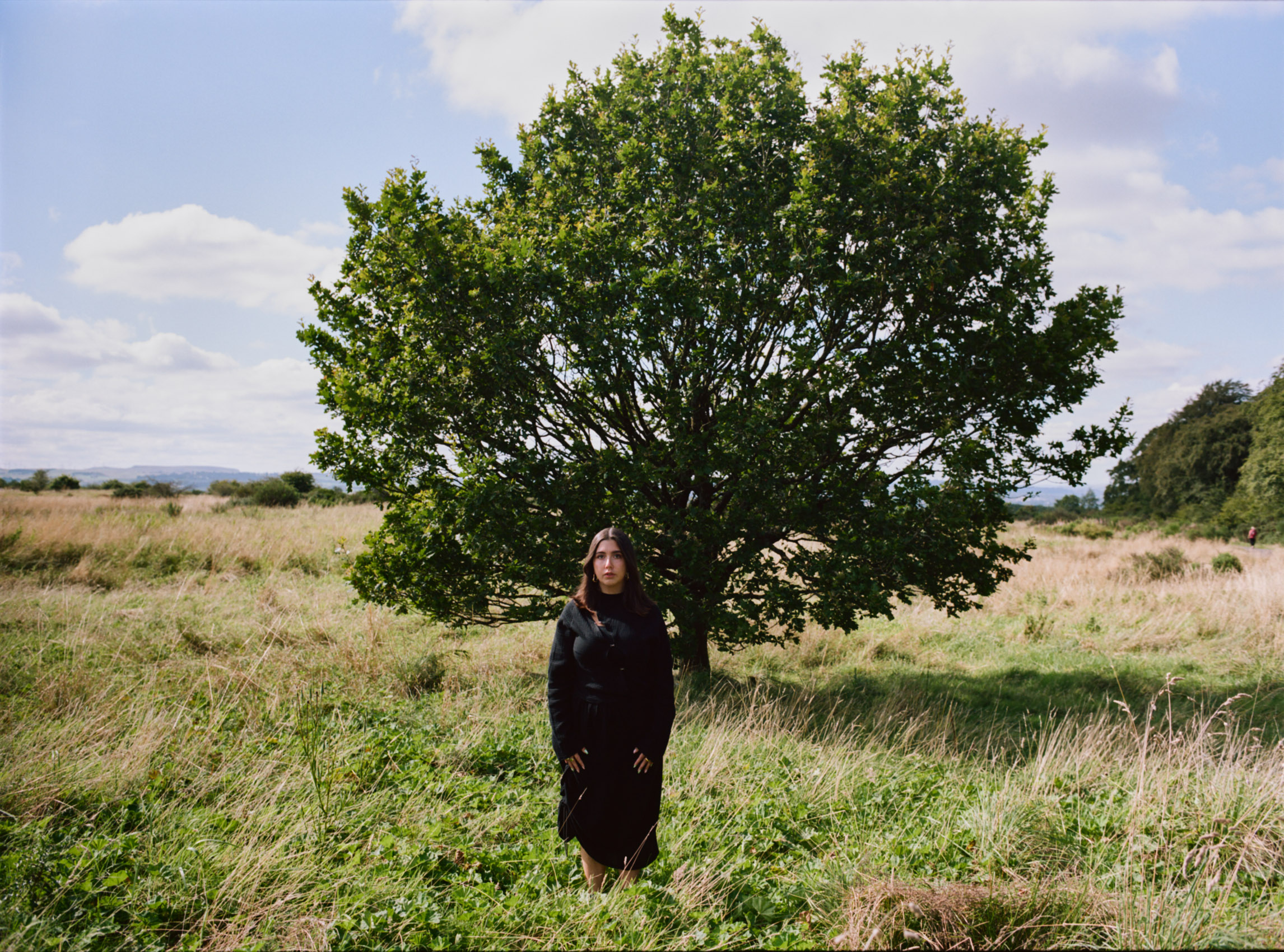
It feels like there’s a big influence from the natural world. A lot of the materials, colours, and designs you use feel really informed by nature. Where does this come from?
I was raised very holistically so perhaps it comes from that, but I’ve always been fascinated by nature and all the things that organically grow around us. I think it also just comes from growing up in Scotland, where we are surrounded by such interesting landscape.
The climate here also really informs my work. When designing I’m always going to put functionality to the forefront as elements such as waterproofing are pretty much imperative all year round!
A lot of your pieces defy gender categorisation as well. Was that intentional?
I wouldn’t say it’s necessarily intentional, I think it just kind of reflects my own personal style. I wear a lot of menswear clothes so I’m always going to be interested in designing to fit that side of my personality. With my menswear pieces, I think that by being a woman designing them there’s going to be a more feminine perspective to the clothing. Overall, I’m really just an advocate for wearing whatever you want!
How do you feel being an independent designer? Is it hard to keep that creative, experimental mindset when your passion also becomes a business.
I absolutely love what I do, but of course like any job it comes with unique challenges. It is an all encompassing job to be self employed in any field, but I’m lucky that I really enjoy being my own boss and I find it easy to motivate myself to work. It can definitely be hard to switch off from it when you aren’t physically clocking out of a workplace. You also can’t help but at times correlate your own self worth to how well your business is performing but I am slowly learning to separate the two!
When you monetise your passion you definitely find less time to create simply for enjoyment. I think that there is this pressure on fashion designers to constantly be bringing out new styles or creating content but I’ve learnt that the most important thing is to slow down and only release things you are 100% happy with.
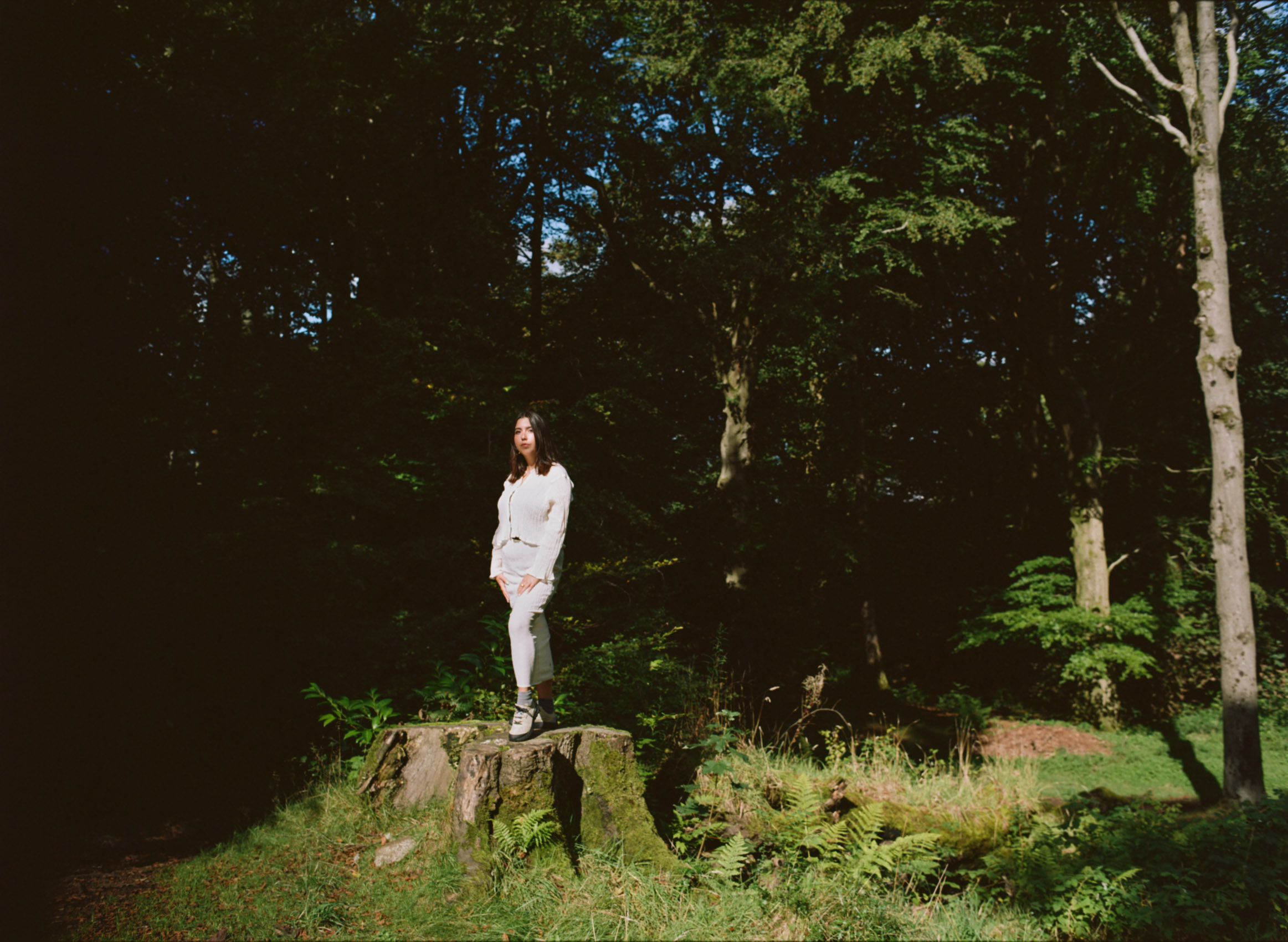
What would your advice be to someone who wanted to get into fashion design?
Find out what your narrative is and what you stand for. I think that when you have a backstory to your clothes or an ethos of sorts it makes the design process so much easier and also makes your brand more relatable. The world is saturated with clothes so find an angle that’s going to set your pieces apart from others!
If you want to start your own brand try to get an internship in a small company where you have a lot of responsibility and are exposed to every aspect of starting a business. I think you need to be prepared for how much work it takes and be willing to put all your energy into making it happen.
Also just try not to worry too much about what people think. I’m such a shy person but I almost use Solace as a kind of alter ego where I feel really able to be expressive and confident. Finally, people are a lot more supportive than you think, so try to share your work as much as possible and you’ll probably be surprised by how much it can resonate with others.
You recently released your second collection, which we’re sure was really exciting. What was the process like designing this collection compared to previous work?
The process was in equal parts easier and harder than before! I found it easier to design as I felt I had already kind of established my style and what I stood for as a designer. However, it’s always really scary to release anything and I was more worried this time about how the collection would perform as it had become my full time job so there was more riding on it being successful.
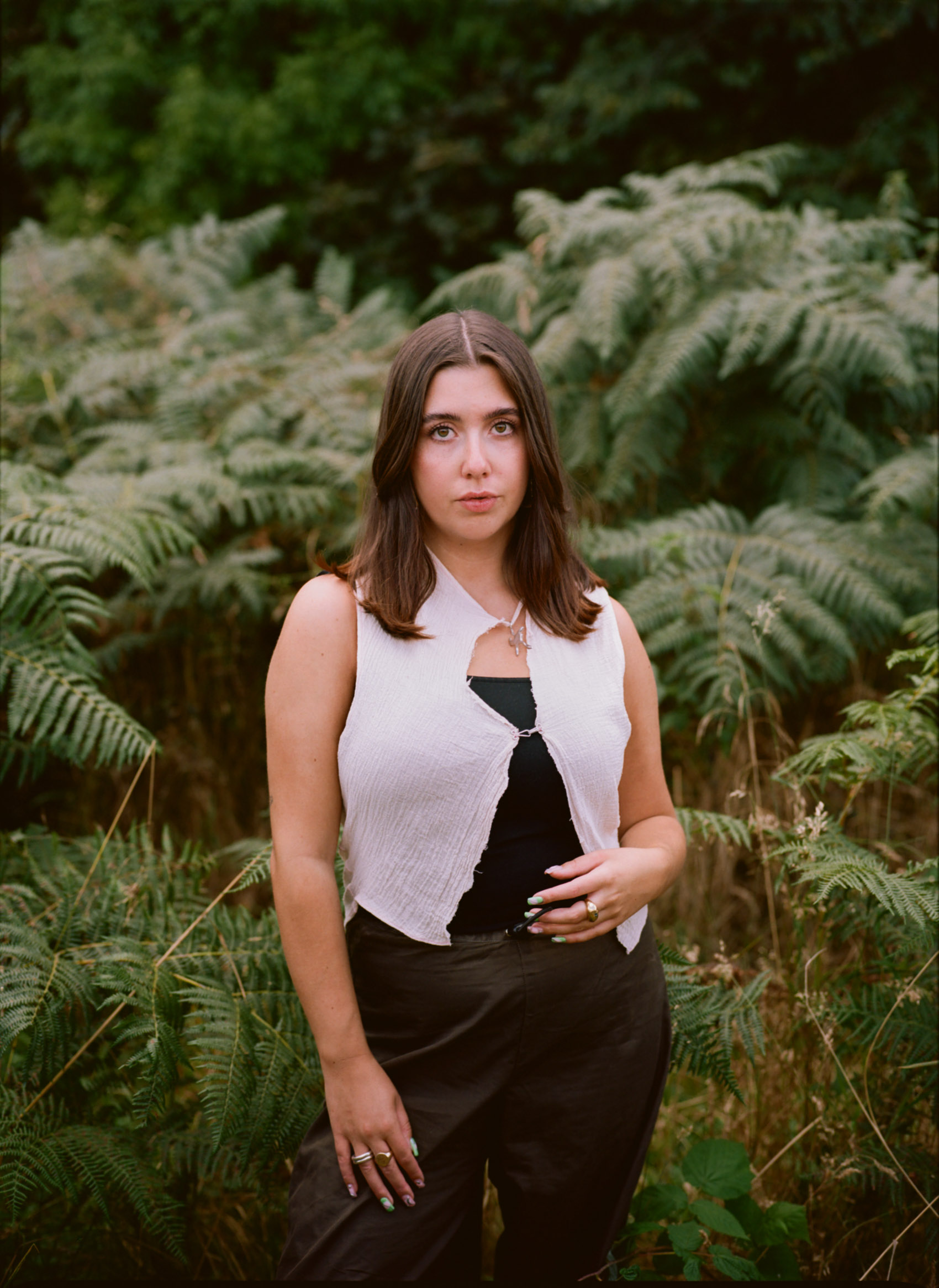
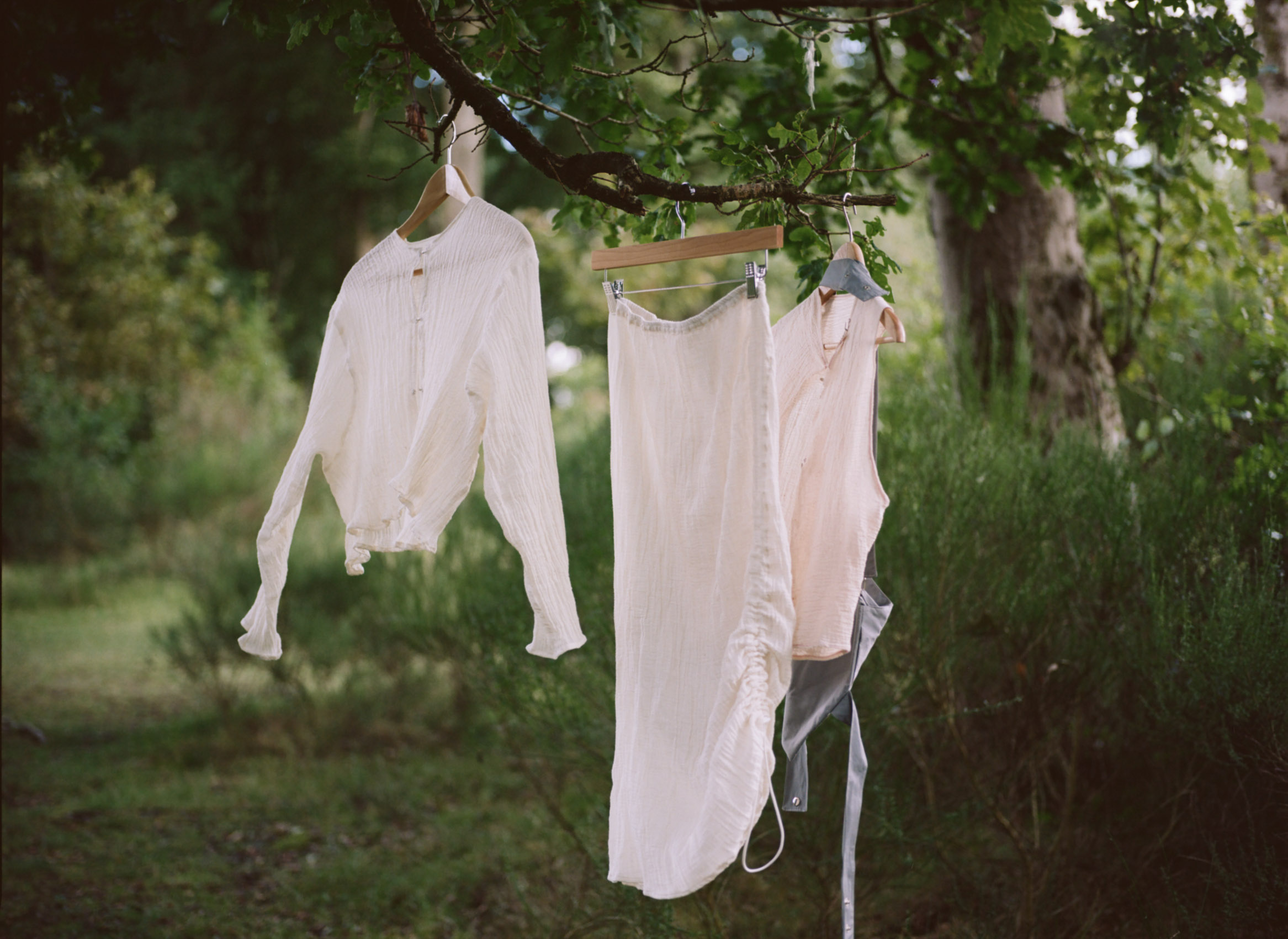
Do you have a favourite Solace piece?
I wouldn’t say that I have a favourite piece but so far I think that I’m most proud of the ‘Carla Set’. It’s definitely my most popular piece and it means a lot to me personally.
Where does the name come from?
Solace means ‘comfort in sorrow’. I started my brand during a really bad period in my life, and I use my creative practice to mentally work through a lot of those situations.
I like to keep the catalyst for my work and the meaning behind my designs quite private to me, but I want Solace to be a reminder that, when you are ready, you can make beautiful things out of the darkest moments.
IN TALKS with NILÜFER YANYA
02.09.22
Featuring Nilüfer Yanya
Photography: Bethany Grace
Styling: Tamara Turnbull
Makeup & hair: Margherita Lascala
Words: Graham Peacock
With thanks to Limitée PR
There’s something refreshing about Nilüfer Yanya. With a voice that moves cooly over dreamy electric guitars and sombre piano chords, her lyrics read like cryptic diary entries. On her latest release, PAINLESS, Yanya moves into a sound that feels more cynical, more honest, and more introspective.
Somehow, Nilufer manages to bear her soul and keep her cool as she processes loss in its many forms, and spending the day with her gave us an insight into how she pulls it off. That raw honesty Nilufer’s fans have come to love in her music seeps into how she talks about the process of creating an album. Following up 2019’s Miss Universe was never going to be easy, but on PAINLESS, Nilufer turns her back on expectations, pigeon-holing, and the high stakes she created for herself – and she’s had a busy summer reaping the rewards. With LUNCH, Nilufer takes a break from touring to get candid about the story behind the music.
Talk to us about the background behind PAINLESS. There’s a sense of mourning in a lot of these songs. What kind of loss are you exploring?
It’s interesting – I think I was talking about a relationship a lot of the time, but the real relationship I was mourning was the one with myself. It was like, going through the relationship as a way to get to the relationship with myself. A lot of my songs turn out to predict what’s gonna happen in my life.
So have you lived through the songs you’ve written on this album after releasing them?
Yeah, that’s exactly what happens. It’s really strange. Maybe part of my subconscious is preempting what could happen. Not for every song, but definitely for some of them I’m like, ‘Wow, that’s kind of eerie how that panned out exactly like that song,’ or ‘That song makes a lot of sense now’ – it’s like I was writing for a future version of myself. Like Chase Me, I really liked the song, but I didn’t necessarily know exactly what I was writing about, and then I walked into a situation where I was like ‘Oh, this is exactly what that song was about’.
Who did you make PAINLESS for?
I guess I always write for myself, but once you know people are gonna listen to it, it does change things a bit. It lets me be more vague sometimes, because I don’t need to necessarily know what [every] line means to me, but it could mean something to somebody else, or I can just appreciate it because I like it and I don’t have to think about if it’s genuine or authentic. I find it interesting to step into other people’s shoes, and write from their perspective. I mean it is still authentic, but it’s your take on what someone else might be thinking.
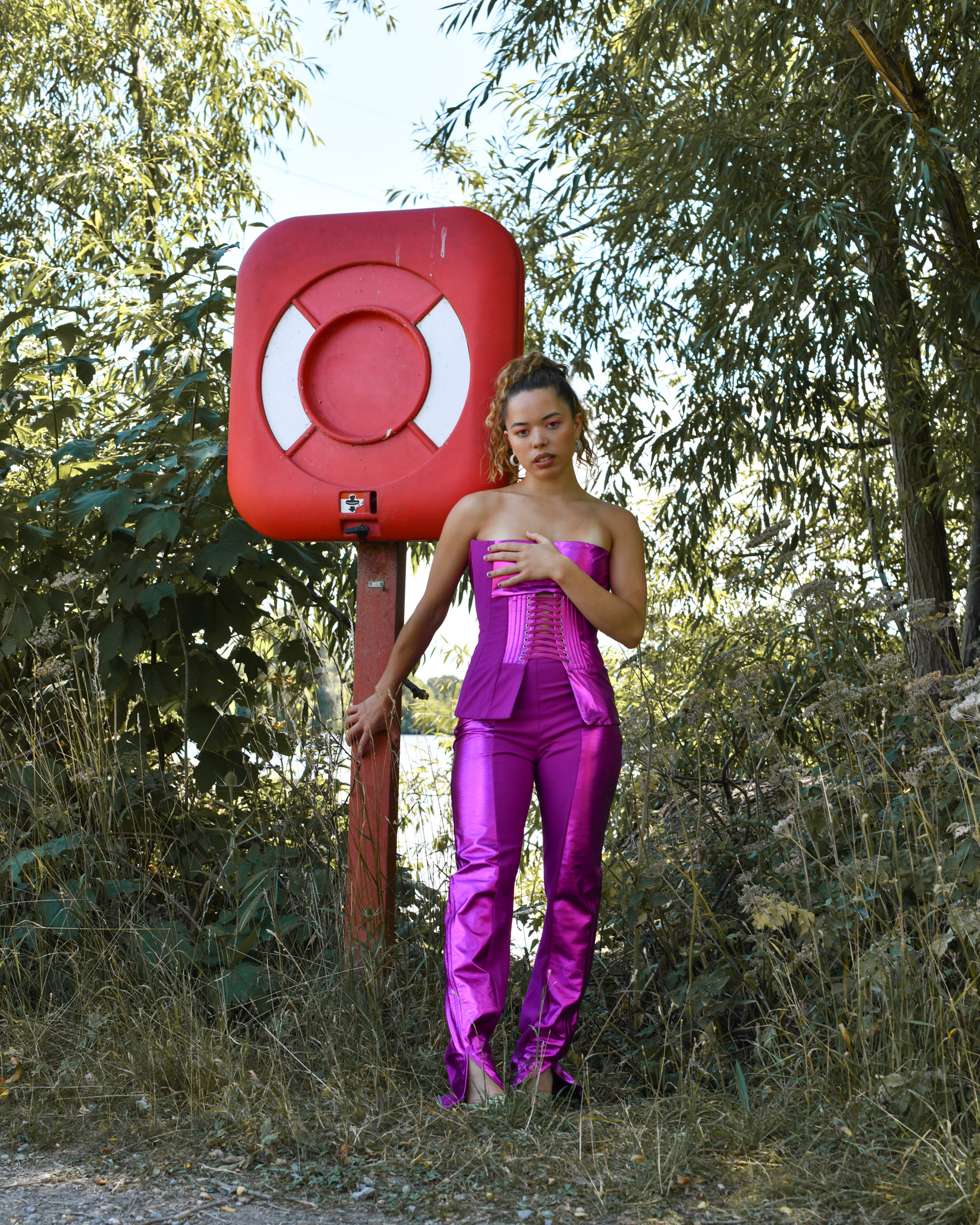
Sonically, you can feel the shift between this album and Miss Universe. Was that a conscious desire to explore a slightly different sound, or was that shift more spontaneous, and informed by you changing yourself?
A bit of both. On Miss Universe I was worried about making something too much of one sound. People would be like ‘Oh, you’re indie’, or ‘Oh, you’re this’, and those tags were so annoying. I don’t really want to fit into one box, so I played around with different styles. Looking back on Miss Universe, I found it a shame because it doesn’t always sit together the way I imagined it. So I was like, with PAINLESS, let me not be afraid. If I want to do this guitar, grungy-rock thing, let me just do it and not worry about whether it’s gonna put me into one group or genre. I just went for it.
Speaking of your debut, it was so well received, which I’m sure must’ve felt great. But how does it feel having to leave each project behind to start a new album? Is it intimidating or freeing?
I was so glad to be free of it. Even before it’s released you’re sitting with it for like three to six months. In a way, once I’d done it I was already over it. But then you’re touring it, playing it, talking about it, and then you’re so done with the record [laughs].
It was weird because I felt like there wasn’t anything left in my reserve. I did an EP, then the pandemic started and I was writing, but wasn’t very creative for a year. So it was hard to get back into the place where I was before Miss Universe came out, and not think about people listening. It infects you, in a way. People call it a difficult second album for a reason, it’s easier when no one’s listening and no one’s watching.
How far ahead do you plan your music? When you were working on PAINLESS, did you already have an idea of how the next project would sound?
In general, when I’m writing I’ve learned to just write instead of writing for something. That way even if something doesn’t fit you don’t have to throw it away, you can keep it. It’s just useful to keep writing and pick what you want for that project. Then there’s always something to go back to. But when I started writing PAINLESS I felt like I’d used it all up.
Which is quite freeing right? Just having a fresh start.
It was! I was working with Will Archer, the main producer on PAINLESS, and we wrote a lot together. Which is something I’m wary of, but we get on so well and it just made sense.
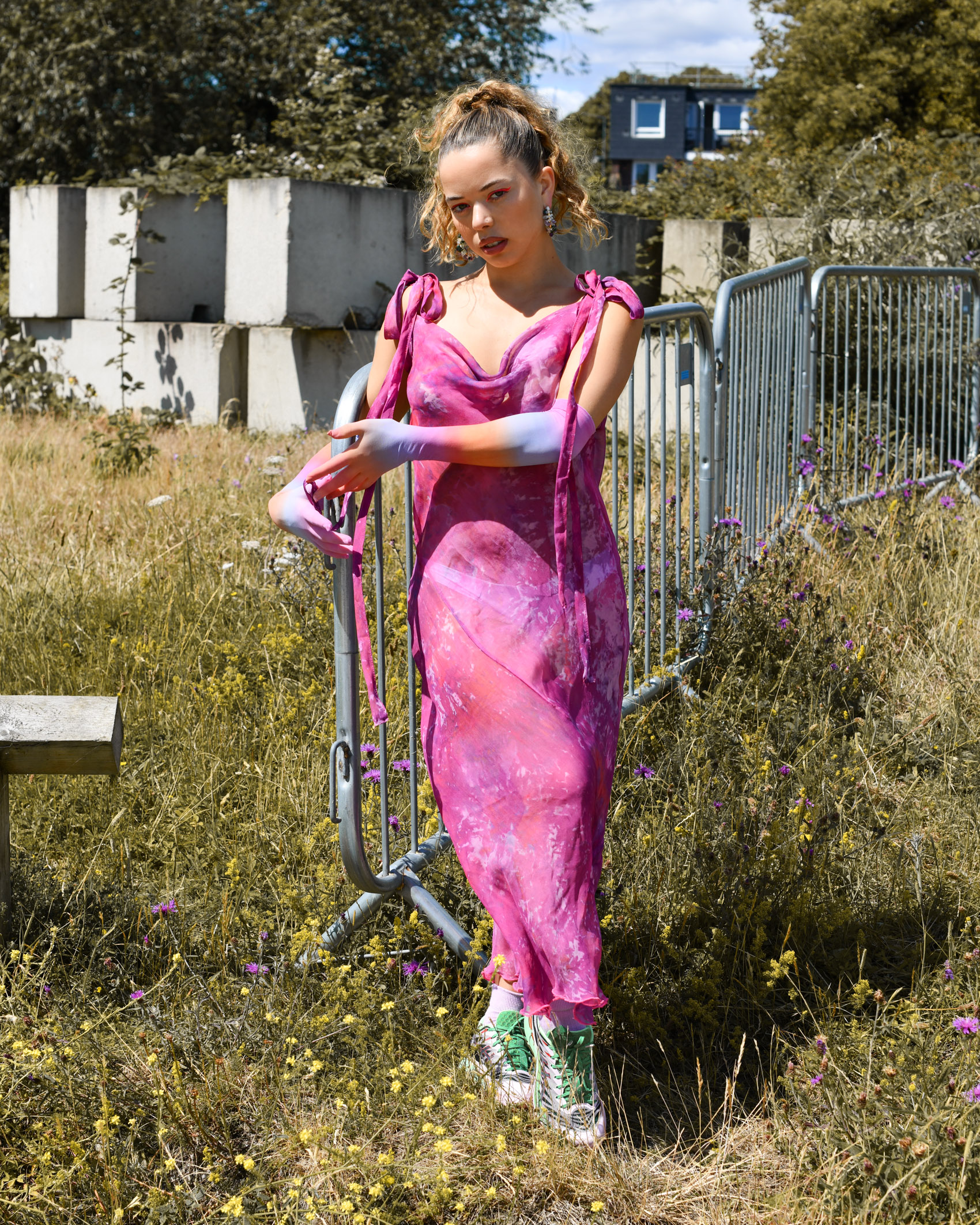
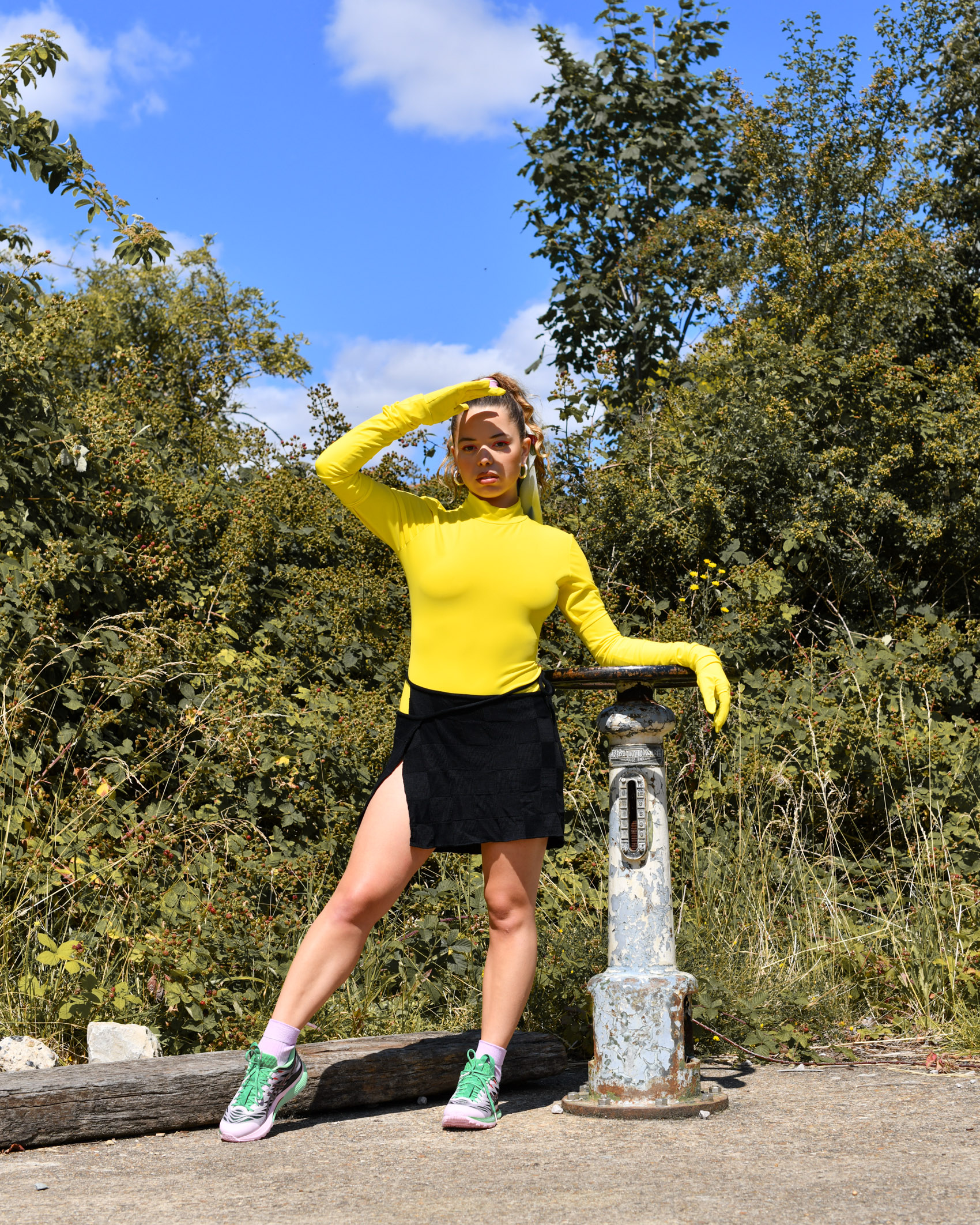
Albums aside, how’s summer been? Between festivals and touring, it looks like you’ve been everywhere.
It’s been great. We’ve been touring since March, and this is one of the rare weekends off in the summer. March to June was just tours. We did six weeks in America which was insane. I’m actually quite…not done with it – but it’s the middle of the year and I haven’t really been around, I’ve just been running around like a crazy person. So I’m definitely feeling it. But when I think about all those experiences it’s been such an amazing thing to get to do.
I’m presuming this is the first time you’ve played a lot of these songs live. Has your relationship with the music changed since playing in front of these huge crowds?
Some crowds surprise you, some songs just go off better in certain crowds or countries. You always think you have it down, what song people like, what people find boring, what’s more upbeat, but you get it wrong. It’s been interesting – sometimes you have really weird experiences on stage. A lot of the Mediterranean festivals put you on at midnight and everyones wasted and it’s like, ‘why are people listening to this type of music now, should they be dancing?’ [laughs]. Every time you play a song is a different experience, but sometimes you zone out. It can be challenging to always stay present.
What do you hope the rest of this year has in store for you?
I’m preparing stripped back versions of some songs on the record. We’re gonna be filming that in September. I’ve got a festival in LA, and some more European touring in October and November. I’ve started writing in the past few days, I’m hoping to make some demos just by myself. I’m thinking about maybe moving somewhere for the next year, for like six months, and just focus on writing. I’m finding it quite hard in London. I’m trying to find a studio space but everythings so expensive, and so I’m like, what if I just moved somewhere not in a city so I can just live and work and really focus. I think it’s gonna echo what I learned in the writing process of PAINLESS, but be a bit closer to some of the songs on Miss Universe.
IN THE STUDIO with PEACH
17.08.22
Photography: Andrea Brodie
Words: Graham Peacock
Featuring: Kacie & Irene of Peach
Day parties, club nights, radio shows, festival sets – Peach are doing a lot right now, but that doesn’t mean they’re in any rush.
A DJ collective founded and fronted by Kacie with her girlfriend Rachel, Peach have made a name for themselves with their collaborative-focus, all femme parties, and experimental sets.
As club line-ups fill with an ever-growing list of residents, Peach don’t make a move unless it feels right. Each performance feels authentic, carefully considered. Building a loyal community isn’t easy, and Peach have put the work in to make their name synonymous with quality.
Chatting to Kacie and Irene, it’s clear the work they do is about more than just themselves, or the future of Peach. It’s about changing the framework of DJ culture in general, making it a more accessible, more expansive, more inclusive environment than it’s been in the past. They know it’s a work in progress, but as Peach’s name continues to grow and the guest lists get longer, we might not be too far away.
Hey Kacie and Irene, where are we right now?
Kacie: We are in 644 Studios, which is a music recording studio and creative hub that myself and Lude have been creating since early 2020.
Irene: By far the most impeccable and clean studio I have ever been in.
How do you describe Peach?
The genres you would hear at Peach are Hiphop, Rap, Trap, RnB, Drill, Dancehall, etcetera etcetera. We would describe it as an events platform that taps into live events, radio, day parties, festivals, merch and recently all femme parties.It’s a family that comes together for the love of music. The energy and vibe it creates is unmatched.
What drew you towards producing and DJing?
Kacie: I’ve just always had a love for music. From a young age. I would say I really found my love when I started going to live shows with my mum when I was young. She took me to a Pink concert and that’s when I realised that women could play the drums and so many other things than just being a ‘popstar’. From then I was obsessed. I started drum lessons in school and started to tap into production and basic music theory. I would sit for hours listening to loads of different radio stations around the world, just hearing all the different sounds and genres.
As I got older it was a natural progression to DJing and producing. I had always messed around. My parents bought me my first set of turntables when I was 12 for Christmas. I really put myself out there as a ‘DJ’ in 2011, then eventually worked up the courage to start dropping some of my productions. It makes me cringe hearing back earlier stuff.
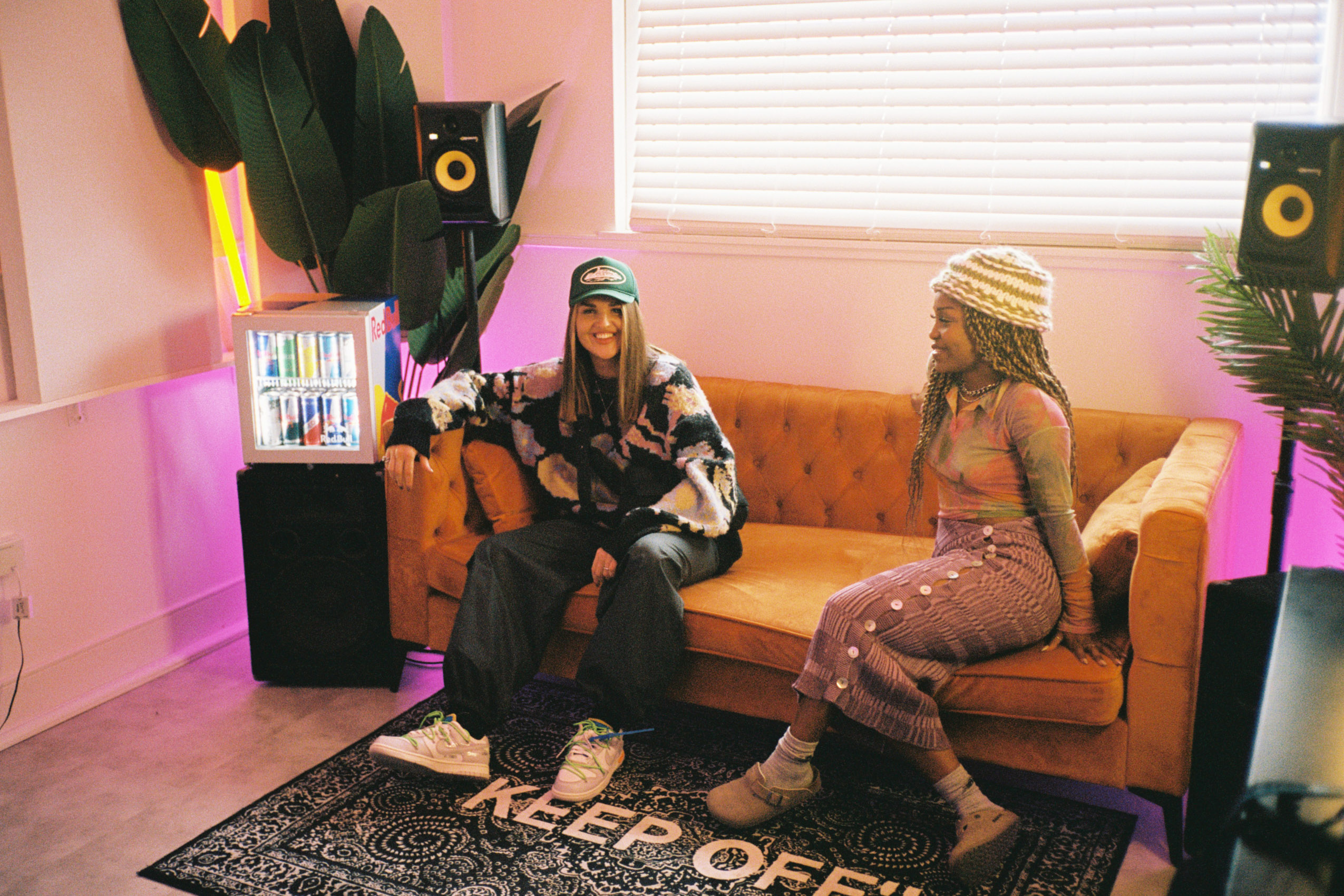
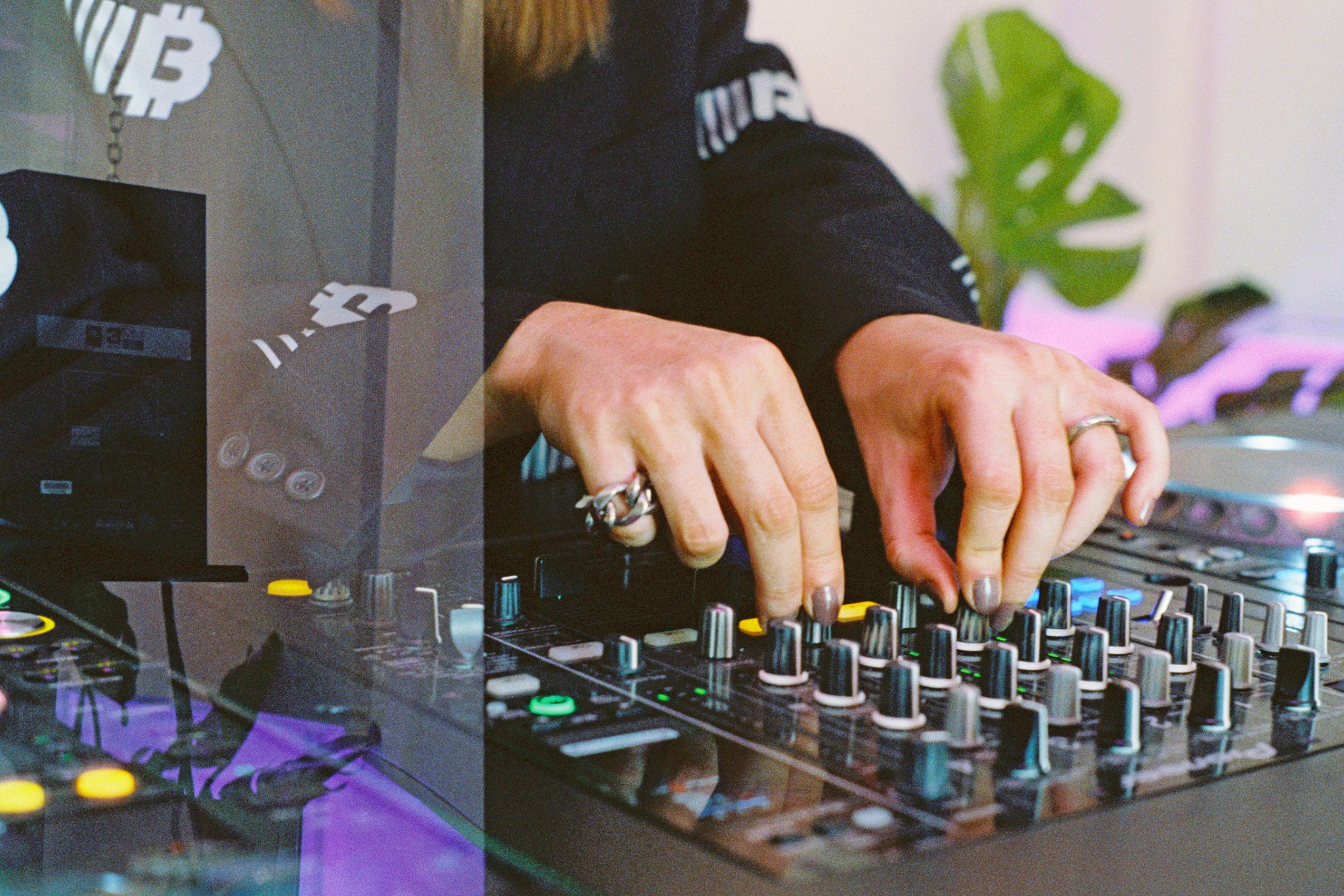
How did you guys get together?
Kacie: It’s authentic: nothing is forced, genuine connections. It was just me and my girlfriend Rachel that started it off. That’s where the name comes from – Rachel’s nickname growing up was Peach because she always scored good goals in football. We felt Peach covers everything woman, even those little tomboys scoring goals.
We wanted to expand it out more and with Rachel being busy with work and other commitments it made sense to make a bigger team. Peach was gathering enough interest and hype that it made sense to start expanding. And we are all friends, we knew Irene, we built a natural connection.
Peach has taken years of time and effort so we wanted to make sure that whoever was coming into Peach knew exactly what we did, shared the same values and goals, and Irene has been since day one. She knows what Peach stands for and she knows us – something that is important to us is to make sure it’s woman-led.
Irene: I don’t shut up about Peach, whether that’s at work or with friends. It was an honour to be asked to come on board on something that I feel is so vital for the scene in Scotland. It really is one of a kind and so well executed and I’m excited for what’s to come.
What kind of space are you hoping to create when you host an event?
A good energy. For everyone to feel comfortable. A space where everyone is welcome. We try to make it feel as welcoming as possible. We talk to a lot of people on Instagram and we try to make it feel personal.
We try to make it as diverse as possible – it is extremely LGBTQ+ friendly, there are no limits at Peach, we welcome EVERYONE.
We are girls girls girls – anyone femme identify. Since day one it’s been created for women and we make it clear it’s women at the front – women have priority in the line-up and crowd. We love our Peach boys of course and they have always respected our values.
We actually created an all femme party called BBO and had our first night late last year which went down great. Everyone could let loose and the messages and feedback we received as a result of the event shows us this is something that is wanted in Glasgow. We can’t wait to see BBO grow!
Where are you guys pulling your influences from? When you go about making a new set, what does that process look like?
Kacie: It’s a broad range – Soulection; what’s going on in America; what parties are going on in Paris; what’s popping in Berlin, Amsterdam, Lisbon, and of course London. Nine out of ten times when we book DJs or artists we have already made a connection with them. Whether it be through me doing shows in London or going to parties, we do make friendships and relationships from it all. Which again I think makes it feel more like a family and welcoming vibe.
We take a lot of time and effort to listen to loads of new people and their sets. Even if it means taking a trip to attend an event to see how the DJ creates a vibe with the crowd, we will! It’s all about making connections.
Peach is always trying to bring new music to the events – it’s important we represent that. Even in my own sets I always try to introduce new music. I feel like it creates memories for people, they remember where they heard it first, they remember how it felt, and I also love to see how a crowd reacts.
What’s your dream event: who’s there, who else is playing, where is it?
Oh wow, where do we start! What’s the dream budget? Haha. Progress to a bigger audience: bigger names, more artists, more collabs, more music, more events, more everything. Same with BBO – bigger audience and all the top women on the line up. Wow, imagine…
But overall a Scenic backdrop in Scotland: suns out, good drinks, good food, amazing line up. People like Joe Kay, Shaybo, Skii Fall, Drake, Pusha T, Knucks, M Huncho, Ms Banks, Bia, RhiRhi – the list goes on. We have so many ideas with a few things in planning. We are keeping them under wraps. We don’t want to give anything away, hehehehe.
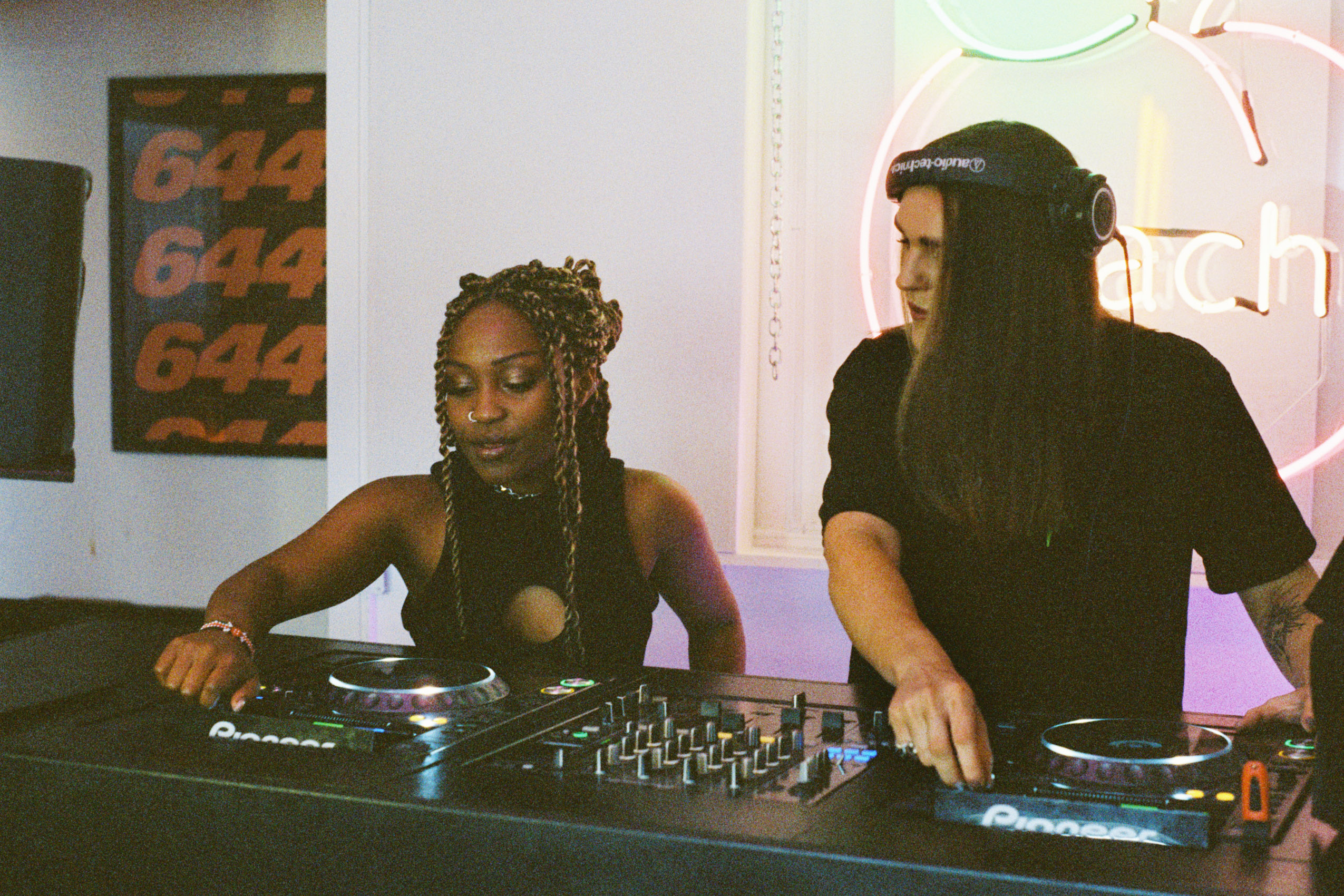
If I want to start DJing, where do I start? How does someone stand out today?
Kacie: Be your authentic self – what you really love always. Have your idea and run with it.
Start by looking at DJ tutorials on YouTube. There are also classes you can do, DJ academy is a good one. I know it costs a good fair amount so YouTube is a great place to start and head to pirate studios to practice on some decks. They have a DJ room for you to just spend hours and hours practicing. Practice is the main key. Even today I’m still spending hours practicing. You’ve got to stick at it and keep working on it.
Gather loads of songs. Invest in small pieces of equipment if you can. Maybe a little controller and some speakers, and go for it!
Utilise all the social media platforms, local radio stations, networking at parties. Make yourself known – send your mixes to promoters you want to take notice for future bookings.
Take what you can and most importantly don’t jump in with crazy fees and demands when you’re starting to get bookings. Be friendly and most importantly enjoy yourself.
What’s something you think needs to change about the music industry in Glasgow?
Lots, I’ve been actively working on this for years now. More women, more diversity on the line ups. There is a great group of people working towards this to help make change and doing amazing things in Glasgow.
I would say if you feel there is something missing or if you don’t think people are doing it right then let’s create more parties – be your own promoter, there’s a lack of nights in Glasgow, and if you feel like there is something missing, or someone isn’t doing it right, then start it yourself! Start small and grow. That’s how to actually make change.
Although we can sit and criticise the Glasgow scene I feel like there’s only so much you can do without support from the rest of the UK. People from around the UK and globally need to show a bit more respect to Glasgow and the people doing things: the creators, the promoters, the musicians, the artists.
The lack of interest and respect is a huge divide – they need to include us more. That includes magazines writing about Glasgow, brands wanting to collaborate, promoters, artists, etcetera. One thing I’ve noticed over the years is that when a promoter from down south decides to hit Glasgow with an event they never include anyone from up here, or even chat to a local promoter to see how it goes down here. Their night always ends up dead and everyone at the event leaves thinking Glasgow is shit which is so far from reality. Glasgow is amazing, but it takes a bit more work to put on an event here and YOU NEED to include the local community.
Where’s the future of Peach heading?
It’s all a natural progression, We won’t ever throw a party that doesn’t feel right for the sake of it or for just the bag. That’s why we don’t throw a party every month.
We’re working on more merch, different types of parties, different types of events, and opening more doors to more opportunities. We’re collabing a lot more with brands and promoters.
More DJs, More promoters, More brands, More music, More space, UK pop ups and Bigger parties.
IN TALKS WITH PURINA
04.08.22
Photographers: Greta Kalva and Alexander Cameron
Model: Purina Alpha
Words and Styling: Graham Peacock
MUA: Nikole M
Set Design and Nails: Greta Kalva
Studio: Basement 49
If you want to understand how the culture of performance art, club culture and Drag is changing in Scotland, look to Purina Alpha.
Whether she’s on stage at Glastonbury, Edinburgh Fringe, or a Glasgow queer bar, her refusal to be confined to one type of performance style, look, or Drag Circuit makes her as refreshing as she is unpredictable.
It feels like she’s in a world of her own – climbing to the top of Drag competitions and club billings rapidly over the last couple years, but she doesn’t necessarily want it that way. Purina’s performances are about joy – a celebration of her community and her art form, and this love for collectivism extends beyond her work on the stage. She doesn’t want it all to herself – she wants to lift up as many other people who feel like outsiders in the world she’s trailblazing through.
Chatting about her changing relationship with femininity and Drag, and the influence she hopes to have on other performers, Purina represents a shift in how we understand what community-centred creative circles can do. Purina Alpha was borne out of encouragement and guidance from a friend, and this reassurance is what she seeks to give to other people through her work. If you ask us, it’s going well.
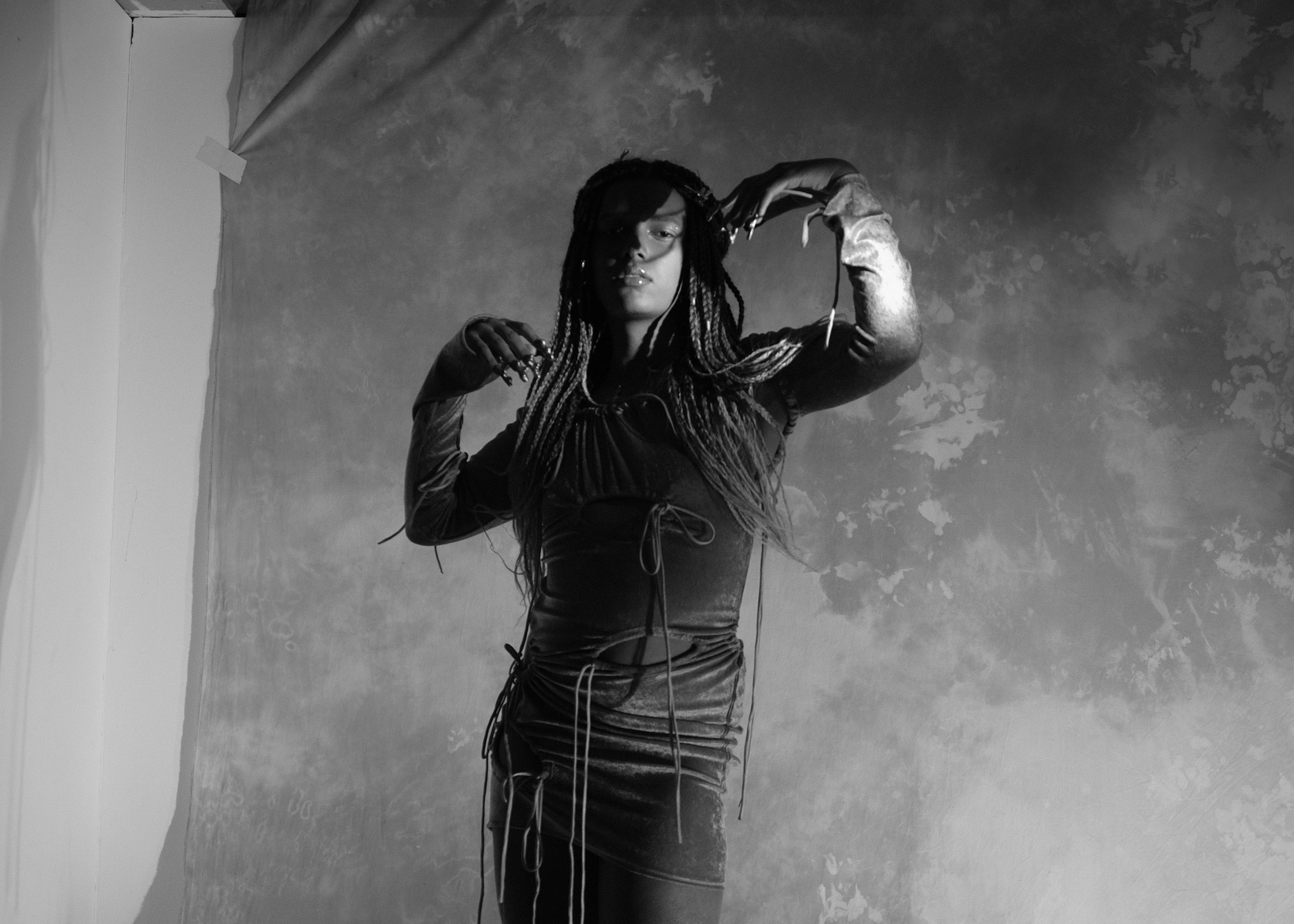
Hey Purina, how are you feeling today?
I’m feeling really good today. It’s been a really fun shoot. I’m really happy with how it went.
Tell us about how you got started in Drag.
I started by working at a bar. I’d just moved to Glasgow about six months before and was working with someone who was a resident at Delmonicas and I mentioned that I was interested in Drag but wasn’t sure if I could do it being a woman and be accepted, and they told me I would be. So that’s how me and my drag sibling got started. We started off at amateur competitions. A couple months later I did the Edinburgh Fringe. We both just went from there, and now me and my Drag sibling have crowns in Scottish Drag competitions.
Drag culture seems to be in a constant state of evolution. What’s the biggest difference you’ve noticed since you started out compared to now?
Just this Wednesday, I went to see the same competition I debuted in. It was so different. The level has really improved. People at the beginning are top tier – when I did mine nobody was at that level. It’s changed a lot in that sense. I feel like that’s come with the progression of Drag Race; it’s caused people to hold themselves to a higher standard and things are more competitive now. People are coming out the womb fully ready.
Competitive in a bad way?
Not necessarily. People are holding themselves to a higher standard and have more people around them. It’s nice to see the new generation coming up. There’s more POC people. When I started, Ann Phetamine and I were the only POC Drag Queens in Scotland, and I’m still the only Black Drag Queen. So we’re hoping that’ll change.
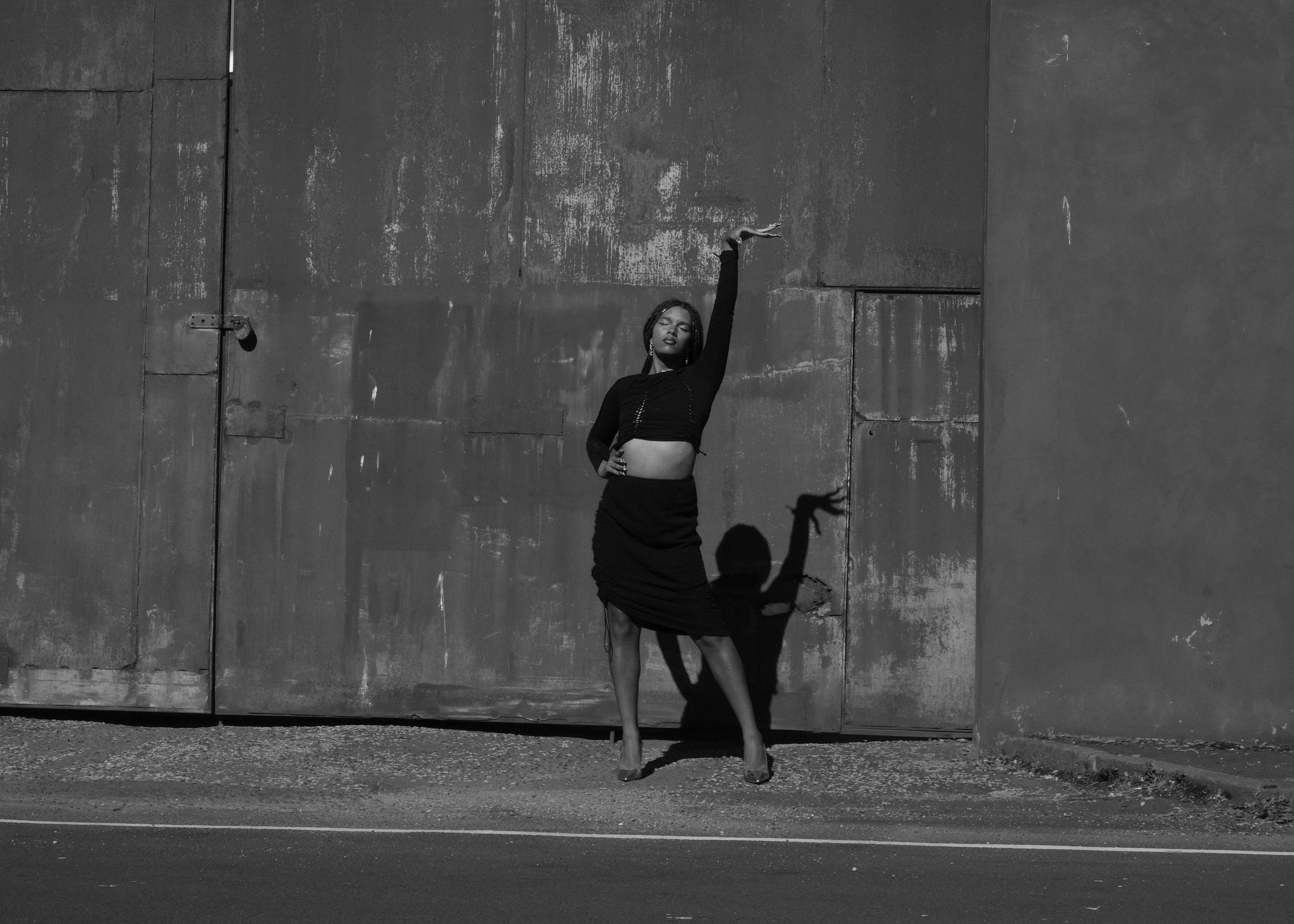
And where do you see the future heading?
In Scotland I’m seeing more people of colour picking up the brush and starting Drag which is nice to see, because that wasn’t something I had. When I was starting out there was no one I could ask about makeup advice specific to my skin tone. There’s now people with similar skin tones to me starting Drag, and it’s nice to hear from them that I’ve been a good influence.
I see the future being more diverse. In Scotland and in the wider worldwide Drag world things are going in a new direction, and we’re gonna see more progression and more firsts.
Is Purina Alpha a character?
Umm. The way I’ve viewed that question has changed. I suppose originally it felt more like a character in that I still had it in the back of my mind that as someone who is a woman outside of Drag I needed to give some big transformation when I got into drag. I’d have very bold features, spirally paper lashes and a dark purple lip – it was my average beat. It was a bit Disney villain, not in a bad way – it was just the thing I’d do. Earlier this year when I started my competition I started off with that look and as I went on I started to change to something more natural. At first that was due to me being in a not great headspace so I wasn’t able to do the whole blocking brows thing. But I kind of went with that. I felt that being a trans woman is enough and I don’t have to have this big mask. I’ll still do those big looks on the right occasion. Now I find that Purina Alpha has blended with me more than before. It’s just a heightened version of me.
That’s interesting that you felt that pressure of having to do the most extreme feminine version of drag. Did you feel like that was an expectation on you?
Yeah I did. It wasn’t necessarily because anyone put that pressure on me. I did like to do those major looks at the time, I enjoyed it. Obviously outside of drag trans women are held to a certain level of femininity, and that’s even higher for black women. Drag has been a way for me to escape that and not worry if a movement looks androgynous or masculine. When I’m in Drag I shouldn’t have to worry about gender, that’s kind of the point of it. I’m reaching the stage where I don’t need a big mask, but I do still love big lashes from time to time.
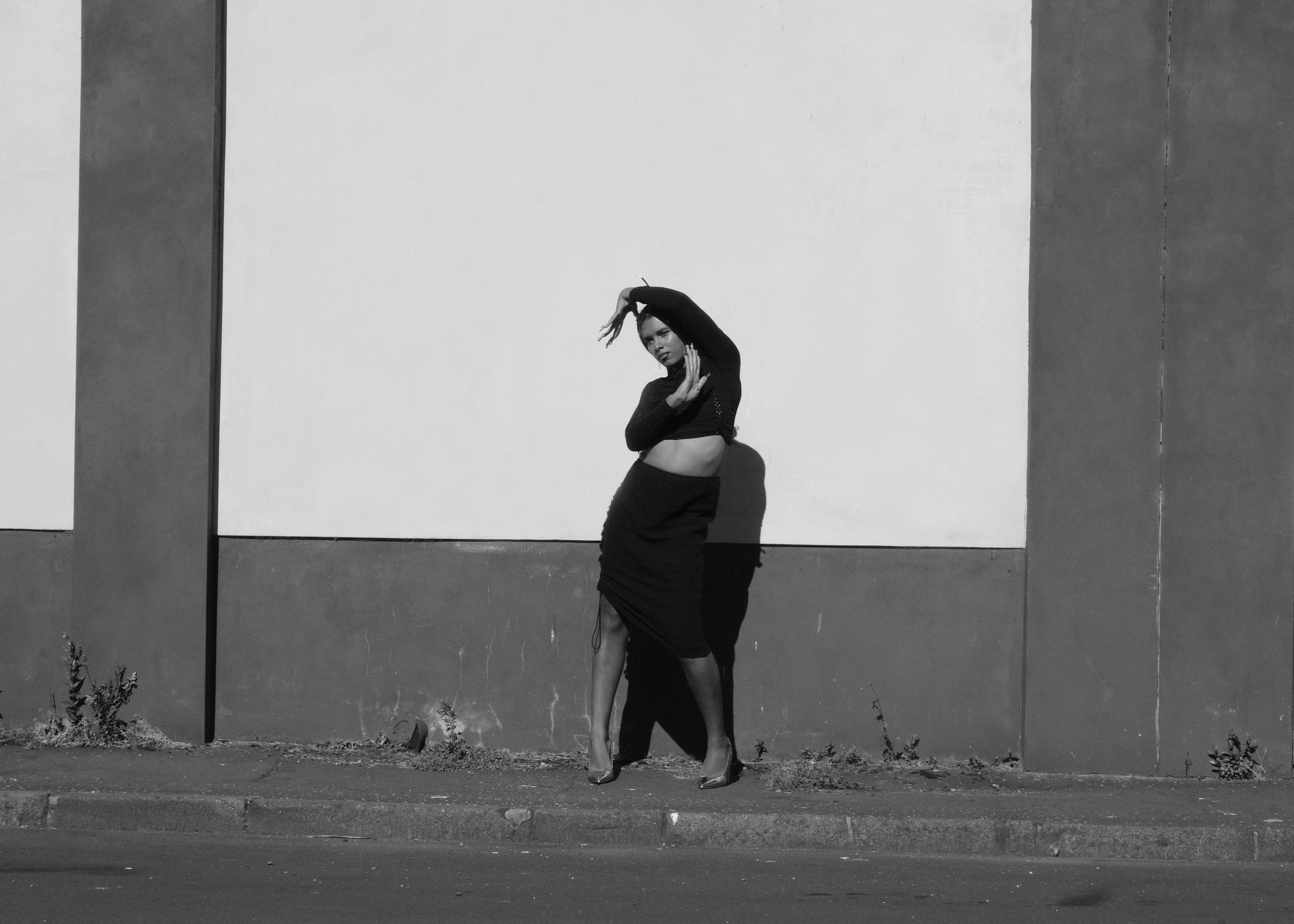
I imagine it could be difficult when your vehicle for self-expression is tied up in your work. How do you stay energised and motivated?
I think I’m reaching a point now where i’m still looking for the answer to that honestly. I love what I do, I have a passion for it. It’s rewarding. I performed twice last week and both times people came up to me telling me how much seeing me has helped other people, seeing me represent people of colour. People have thanked me, which has been really nice to hear. I think that’s my answer, that’s what motivates me – seeing my art influence other people for the better.
Your performances are always filled with joy. What pisses you off?
Working in the industry? There’s definitely some things that are unfair. Some people in the Scottish scene’s behaviour goes unchecked because of positions of power. That frustrates me. Some people who are well connected but not very original get more bookings than people who are original but don’t have friends in high places. That annoys me and other people in the scene. That’s not how all the Scottish circuit is, just certain corners.
It feels as though you’re always working with new upcoming talents, whether they be DJs or designers. Do you feel a responsibility to bring other people up with you? And what is it that makes you decide you want to work with someone?
The people that I work with that are creative and my friends isn’t necessarily because i’m friends with them, it’s because I like their art, and I like what happens when it comes together with my artistic practice. It’s not that I feel a responsibility, I’d do it anyway. I’ll always enjoy working with my friends. I’ve gotten more into performing for DJ sets recently, I love doing that with my DJ friends because it’s a nice marrying of my dance and their music, and same with my friends who make clothes.
It’s been fun spending the day with you. Favourite look from the shoot?
It’s hard to decide. For me, I think the all black look was my favourite. The passersby seemed to agree.


